



In the heart of the Italian Mafia’s own backyard, Benedict recalls their victims and encourages laity to find strength in God - says he stands with people in their difficulties
PALERMO, Italy, (Zenit.org) - Benedict XVI has recalled the victims of the mafia and organised crime, and urged lay people to bear witness to Gospel values with the strength that comes from God.
The Pope made his uncompromising comments on Sunday during a pastoral trip to the island of Sicily. In his homily during an outdoor Mass in Palermo, he stated, “I know that in Palermo, as everywhere in Sicily, there is no lack of difficulties, problems and worries.”

“I think in particular of those who concretely live their lives in precariousness because of the lack of work, the uncertainty of the future, physical and moral suffering and ... organised crime,” the Pontiff said. He continued: “Today, I Please turn to Page 8




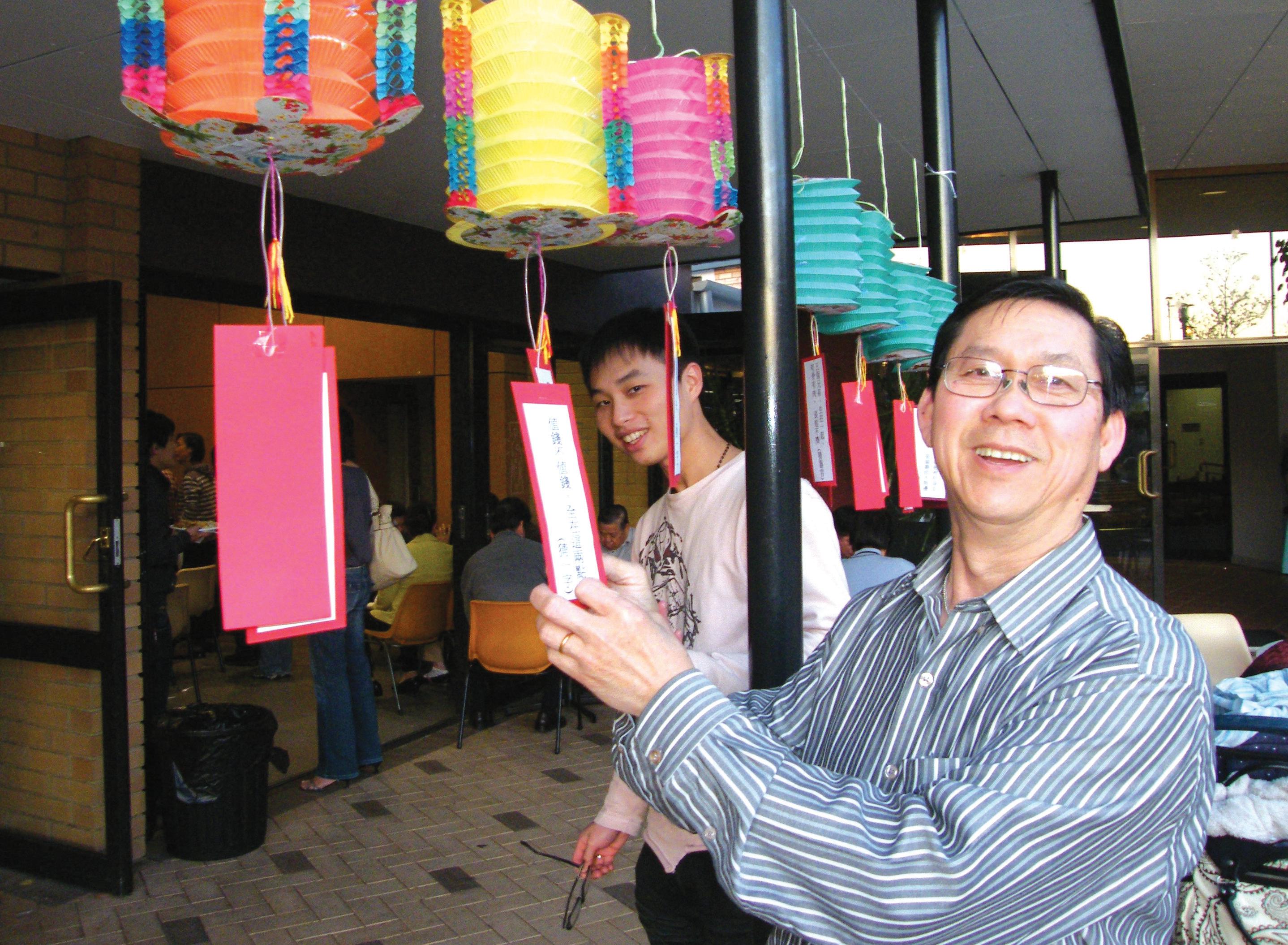


Wednesday, THE P ARISH . THE N ATION . THE W ORLD . THERECORD . COM . AU THE R ECORD WESTERN AUSTRALIA’S AWARD-WINNING CATHOLIC NEWSPAPER SINCE 1874 6
2010 $2.00
October
A 5000 year tradition continues in Perth
Catholic Community gathered on 19 September to join millions of other Chinese worldwide to celebrate the traditional northern hemisphere mid-Autumn Festival, which this year was due on 22 September. One of the four main traditional Chinese celebrations every year and known in Chinese as ZhongQiu Jie, the mid-Autumn festival is marked, among other ways, by distributing and consuming mooncakes - round pastries representing the moon. Story: Page 6 PHOTO: COURTESY PCCC
Prosperity and long life: Chinese Catholics Thomas Yeap and Alvin Wong talk about the good wishes written on the cardboard hung under each lantern. Although it’s Spring, members of the Chinese
PHOTO:
Pope enters Mafia territory Turn to the centre of The Record for our LIFTOUT Turn to the centre The Record our LIFTOUT Christmas, Advent preparation, St Mary’s Jarrah products, DVDs and Cds - and MORE! Vatican Library JEWELLERY COLLECTION, t-shirts, resources for spirituality & prayer, Saints for the young, Xmas activity books, Elf Help DISCOUNTED! Web broadcast! W ith the excitement and anticipation surrounding the upcoming canonisation, The Record will present a special report on Mary MacKillop, describing her life and what led to her canonisation, unveiling the fascinating process of how one becomes a candidate for canonisation and the extraordinary path to becoming a Saint. Thursday 14 October 14 October www.therecord.com.au www.therecord.com.au Mary... T HE R ECORD - THE P ARISH . THE N ATION . THE W ORLD . A special A
Pope Benedict XVI waves as he meets with youth during his pastoral visit to Palermo, Sicily on 3 October. The banner reads, “Trust in you.”
CNS PHOTO/TONY GENTILE, REUTERS
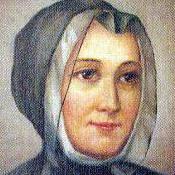
d’Youville



The Parish. The Nation. The World. Find it in The Record.
A three day weekend at the Australian Catholic Youth Ministry Convention in Melbourne has reinvigorated hundreds of youth ministers from around the nation, including 21 delegates from Western Australia.
Presenters came from the United States and around Australia to help shape the vision and direction of youth ministry in Australia, share resources, skills and networks for youth ministers.
Malcolm Hart, Senior Youth Ministry Projects Officer for the BCPL, said: “The ACYMC was a huge success. A significant event in the life of the Church and for the youth ministry community in Australia.”
The convention brought together 390 youth ministers from around the nation. The delegates came from youth ministry in schools, parishes, communities, movements and dioceses from Australia and New Zealand.
WA’s delegates came from Perth, Broome, Bunbury and Busselton.
The West Australians had a major role to play in the conference, with Perth’s Archdiocesan Catholic Youth Ministry director Anita Parker co-presenting a workshop at the convention covering ‘Online Youth Ministry’.
“Our engagement with young people through the internet is an issue that the Holy Father has highlighted as a need for today’s culture. As youth ministers, we are called to develop resources and provide information to young people on how to connect with God and our faith online through safe practices and engaging resources,” Miss Parker said.
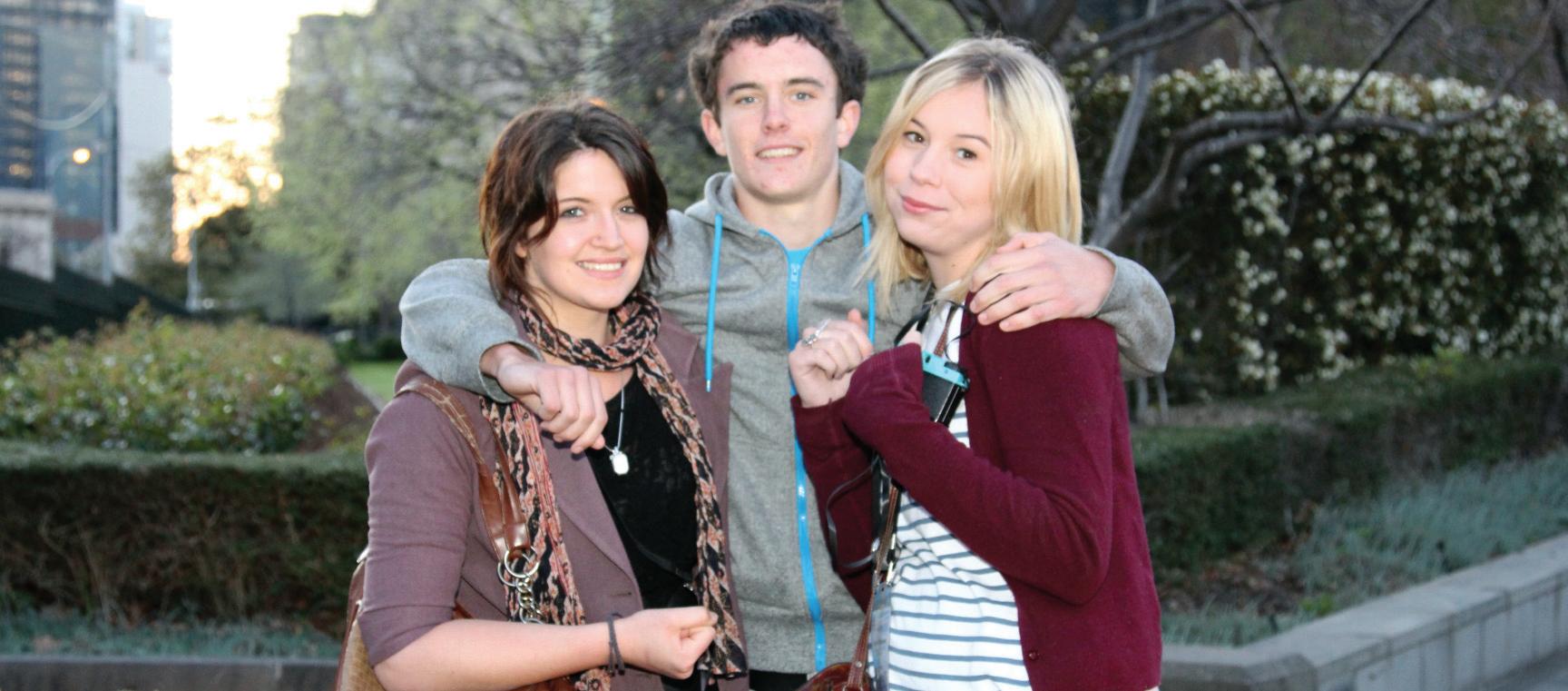
Youth Impact engaged leaders in a workshop on bringing the Gospel message to young people. A strong component of the convention was the link of the Australian Catholic Bishops Conference with youth ministers from around the nation. Apostolic Nuncio to Australia Archbishop Giuseppe Lazarotto, Melbourne Archbishop Denis Hart, Canberra-Goulburn Archbishop Mark Coleridge, Darwin Bishop Eugene Hurley, Sandhurst Bishop Joseph Grech and ACBC President Archbishop Philip Wilson of Adelaide who taught, prayed and mentored the youth ministers throughout the three days were inspired to see the large crowds gathered and the enthusiasm of the youth ministers.
adapt their approaches in bringing young people the message of Christ.
On the final day, Bishop Grech, the Bishops’ delegate for youth, commissioned the conference participants to spread the Gospel message throughout Australia.
“You must take the passion you have for Christ in your lives to the young people of the Church. You are to ground yourselves in the scriptures and God has called each of you to an important ministry in the Church,” the Maltese-born prelate said. Brisbane Archdiocesan youth ministry worker Christine Anderson said that the content and process was “both exhilarating and challenging and overall leaves me excited and hopeful for the future of the Church and youth ministry.”



Editor Peter Rosengren editor@therecord.com.au
Journalists
Bridget Spinks baspinks@therecord.com.au
The young people from Western Australia were quite involved throughout the conference and showcased the West at a National level. Simon Martino, a teacher from Newman College, was an MC throughout the conference. Sophie Stewart, a Year 11 Student from Perth assisted Australian Young Christian Students (YCS) coordinator Vicky Burrows in co-presenting a workshop from the YCS perspective of listening to young people. Ronan McGinniss from
“You are the ones who support the young heart of the Church. Your role is important and the Bishops of Australia want to continue to support you in this ministry,” said Bishop Hurley, BCPL chairman.
Dr Bob McCarty, executive director of the National Federation of Catholic Youth Ministry (NFCYM) in the US, and his wife Maggie McCarty shared over 28 years of youth ministry experience with the Australian delegates. They covered ‘Foundational and Inspirational Youth Ministry’, outlining the aspects of the changing Church landscape which requires youth ministers to
A major feature of the conference was the accessibility for those who are deaf and hard of hearing. A small team of AUSLAN interpreters were able to translate keynote speakers and workshops for those delegates who required this accessibility. The resources being developed from the conference will include DVDs with vision of both the speakers and the AUSLAN interpreters available as youth ministry resources for the deaf and hard of hearing community. The Bishops and many young people commented on this amazing ministry, which was inspiring to those who attended.






Page 2
6 October 2010, The Record
PARISH
OF THE
1701-1771 October 16 The irst native Canadian saint lived in poverty after her father died. She married in 1722 but her husband, who illegally traded liquor with Indians, caused her more suffering. Pregnant with their sixth child when he became ill, she cared for him until his death in 1730. She began to care for the poor by taking in a blind woman, and was joined by three women; they became the Sisters of Charity of Montreal, or Grey Nuns. She endured ires that destroyed her home and the hospital she directed, and saw her two surviving children become priests. Saints CNS
THE
SAINT
WEEK Marguerite
Mark Reidy mreidy@therecord.com.au Anthony Barich abarich@therecord.com.au Advertising/Production Mat De Sousa production@therecord.com.au Accounts June Cowley accounts@therecord.com.au Classifieds/Panoramas/Subscriptions Bibiana Kwaramba office@therecord.com.au Record Bookshop Bibiana Kwaramba bookshop@therecord.com.au Proofreaders Christine Jaques Eugen Mattes Contributors Debbie Warrier John Heard Karen and Derek Boylen Anthony Paganoni CS Christopher West Catherine Parish Bronia Karniewicz Fr John Flader Guy Crouchback The Record PO Box 3075 Adelaide Terrace PERTH WA 6832 21 Victoria Square, Perth 6000 Tel: (08) 9220 5900 Fax: (08) 9325 4580 Website: www.therecord.com.au The Record is a weekly publication distributed throughout the parishes of the dioceses of Western Australia and by subscription. The Record is printed by Rural Press Printing Mandurah and distributed via Australia Post and CTI Couriers. THE R ECORD New Contacts THE R ECORD New Contacts 200 St. George’s Terrace, Perth WA 6000 Tel: 9322 2914 Fax: 9322 2915 Michael Deering 9322 2914 A division of Interworld Travel Pty Ltd ABN 21 061 625 027 Lic. No 9TA 796 michael@flightworld.com.au www.flightworld.com.au • CRUISING • FLIGHTS • TOURS • FW OO2 12/07 Thinking of that HOLIDAY ? • Flights • Cruises • Harvest Pilgrimages • Holiday Tours • Car Hire • Travel Insurance Personal Service will target your dream. OFFICIAL ENGAGEMENTS 2010 OCTOBER 1-25 Pilgrimage to the Holy Land /Canonisation of Mary MacKillop –Archbishop Hickey 2 Opening of Catholic School Boards Conference – Bishop Sproxton 3 Catenian Mass, St Mary’s Cathedral – Bishop Sproxton 6 Launch of A New Wine & Fresh Skins by Bishop Porteous –Bishop Sproxton 7 Mass at St John of God Villa – Bishop Sproxton 8 Blessing of 25th Art Exhibition, La Salle College – Bishop Sproxton 9 10th Anniversary of Thornlie Parish Children’s Choir –Bishop Sproxton 12 Celebrating the work of Habitat for Humanity, Parliament House – Bishop Sproxton 13 Opening of Catechist Conference – Bishop Sproxton 14 Catechist Conference Mass – Bishop Sproxton The Record The Parish. The Nation. The World. Bishops ignite youth ministers
YCS leaders Merida Cooke (Perth) on left, and Perth Year 11 student Sophie Stewart with an interstate YCS delegate.
Above, WA delegates outside St Patrick’s Cathedral in Melbourne; below left, Fr Chris Ryan MGL addresses the conference; below right, Perth Marist Youth Ministry leader Simon Martino and Melbourne’s Madeleine Marson as MCs for the ACYMC. PHOTOS: ANITA PARKER
Irish legacy in Celtic Cross
 BY ANTHONY BARICH
BY ANTHONY BARICH
The ‘irreplaceable legacy’ Irish priests left for the Archdiocese of Perth has been recognised forever with an historic Celtic Cross made from wood potentially dated over 5,000 years old placed in the St Mary’s Cathedral Crypt next to three of its Irish Bishops.
The Celtic Cross acquired by Dr Eamon Casey - then Bishop of Kerry, Ireland prior to his arrival in Perth to preside at the opening and consecration of the Merredin Parish Church in August 1973was presented to Archbishop Barry Hickey by Irish priests Mgr Sean O’Shea and Fr Michael Casey, Dr Eamon’s brother, on 30 September.
South Perth parish priest Fr Casey and Rottnest Island chaplain Mgr O’Shea, both graduates of the famous All Hallows missionary seminary in Ireland that at one point provided many priests for Australia, were on hand for the presentation at the Cathedral Presbytery with Auxiliary Bishop Donald Sproxton, Cathedral Dean Mgr Michael Keating and Vicar General Mgr Brian O’Loughlin.
“The Cross is a reminder of the irreplaceable legacy of the Irish priests for the Archdiocese of Perth. It will have a prominent place in the Cathedral Crypt next to our three Irish Bishops – Redmond Prendiville, Patrick Clune and Matthew Gibney,” Archbishop Hickey told The Record
The Cross was earlier given to Bishop Casey by a priest member of the Quinlan family – the last of that family of Quinlans. The name Quinlan is engraved on the front of the Cross.
Fr Quinlan was only too happy to take it to WA as it symbolised the missionary tradition of the early Catholic Church in Ireland.
On a recent visit to Fr Casey, Mgr O’Shea noticed a once beautiful Celtic Cross, much the worse for wear, resting on Fr Casey’s mantlepiece, and volunteered to repair it.
Fr Casey replied: “If you can fix it, you can have it.”
“It was clear the sudden impact of Western Australia’s ultra-dry Summer had played havoc with the joints of the Cross,” Mgr O’Shea told The Record, after he dutifully repaired it.
“It was simply a matter of sandpapering some of the wood from beneath the base of the Cross, mixing the dust with some high powered glue and using this to reset the loose joints.
“A little sandpapering and treatment with beeswax and the Cross was as good as new. In the intervening years, the Cross had not deteriorated in the least.”
Mgr O’Shea, having acquired some expertise on such matters, estimates that the 66cm high example of such bog oak Celtic Crosses to be 200 to 300 years old.

The bog oak from which it was carved by “an undoubted master craftsman” is undoubtedly 4,000 to 5,000 years old.
“During those ancient times, severe climactic changes took place in Ireland and Britain,” Mgr O’Shea said, resulting in many oak, spruce and yew trees simply falling over and being submerged in water. The peat bog grew over them, preserving the wood which, in the case of the oak, has turned jet-black.
Last month, news of a whole prehistoric village being unearthed beneath a bog in Britain revealed intimate details of the villagers’ lifestyle and a well-preserved oak tree.
“Such Bog Oak Celtic Crosses owe their inspiration to the ancient stone Celtic Crosses still existing today in sacred sites all over England,” Mgr O’Shea said.
They were called High Crosses and at least 75 samples still survive from Ireland’s Golden Age of Saints and Scholars. The tallest of these Crosses at Monasterboice, Co Louth, is 6.5m high.
The Crosses, of stone, were decorated with carvings of Old and New Testament scenes featuring the Bible in “a sort of ancient film script for the instruction and edification of the faithful”, Mgr O’Shea said.
“Scholars consider these High Cross stone carvings to be a local interpretation of the frescoes of early Christian Rome”, he said. The Cross, or, more accurately, Crucifix now installed in the St Mary’s Cathedral Crypt has a delicately carved ivory figure of Christ, while the Cross’ wood is “exquisitely carved” in Celtic design.
At the front of the Crucifix’s large base is fixed a silver plate, also inscribed in Celtic design. The plate has an opening in the centre which houses a relic in the form of a miniature cross, under which is a small label – “S. Crucis D.N.J.C.”
The silver plate is inscribed in Gaelic script bearing the words, Hac Cruce Crux Tegitur Qua Passus Conditor Orbis, translated to, “This Cross (was) touched to the Cross on which the Founder of the World Suffered”.
The family name Quinlan being carved on the Crucifix’s base suggests it was commissioned by the Quinlan family as an object of family devotion and perhaps as a family heirloom, Mgr O’Shea said.
“In what might be described as a ‘Celtic Twilight’ of the Irish-born priests and Religious of the Church in WA, the Crucifix is now offered as a tangible memorial to and of the Irish priests and Religious who have served in the local Church over the years,” he said. The offering of the Crucifix to St Mary’s Cathedral by Fr Michael Casey and Mgr O’Shea was conditional on its being prominently and permanently displayed in the Cathedral.


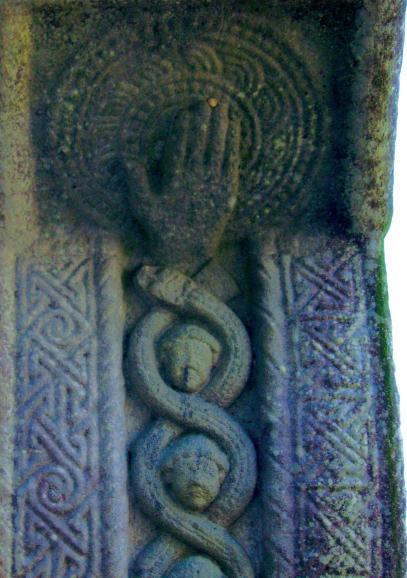
just north of Dublin.
The Hand of God is shown resting on a round carved disk; underneath it two snakes intertwine three human heads.
Top left, the monastery, which was founded around 520AD. The cross was carved in the 10th century, and is dedicated to an abbot of Monasterboice, Muiredach Mac Domhaill.
I’m John Hughes, WA’s most trusted car dealer
Is it true our company philosophy is “We are a friendly and efficient company trading with integrity and determined to give our customers the very best of service?”
Is it true I regularly publish testimonial letters from satisfied customers because of my tremendous reputation for outstanding service?
Is it true that most of my sales are not from direct advertising, but from personal recommendation, repeat business and reputation?.
Is it true I believe that before anyone buys a pre-owned vehicle they should choose their dealer before they choose their car and that dealer should be me?
Is it true that in 2008 I was Australia’s top selling Mitsubishi, Hyundai and Kia dealer?.
Is it true that Park Ford have just been awarded dealer of the year?
Is it true that from January to December 2008 we sold 16,881 vehicles, which was an all-time record?.
6 October 2010, The Record Page 3 THE PARISH
Just over the Causeway on Shepperton Road, Victoria Park. Phone 9415 0011 PARK FORD 1089, Albany Hwy, Bentley. Phone 9415 0502 DL 6061 JohnHughes JOHN HUGHES Absolutely! CHOOSE YOUR DEALER BEFORE YOU CHOOSE YOUR CAR JH AB 019
Above, South Perth parish priest Fr Michael Casey, left, and Rottnest Island chapain Mgr Sean O’Shea with Archbishop Barry Hickey, having presented him with the Celtic cross, the design of which has ancient origins dating back centuries, as an historic cross at an ancient monastery, below, shows. ABOVE PHOTO: ANTHONY BARICH
Above, the Dextera Dei , the Right Hand of God, is portrayed on the north face of Muiredach’s Cross, left, the largest of the stone “high crosses” at Monasterboice in County Louth,
City to Surf helps Caritas fight AIDS
BY BRIDGET SPINKS
Bronwyn Muller of St Mary’s parish, Bunbury and a team of eight friends raised $2,637 for Caritas Australia in the Perth City to Surf on 29 August.
Bronwyn was inspired to take part in the competition and raise money for the victims of rape and HIV/AIDS sufferers in Congo after watching an eye-opening documentary on the situation in Congo, which was “horrifying”.
“I watched a documentary on the ABC which detailed how violent rape was being used as a weapon of war to destroy communities in the Congo, targeting women, children and babies,” she said.
“At the centre of the conflict is the mineral, Coltan, which is used in mobile phones, laptops and other devices such as Nintendos,” she said, adding that six million have died since the fighting began.
“I realised these daily horrors were being committed while people in Australia were unaware, continuing to live lives of privilege
and luxury. The irony was that luxuries we take for granted were actually connected to the conflict in the Congo,” she said.
A few weeks before the City to Surf in early August, Bronwyn contacted Caritas, a Catholic agency for international aid and development.
She obtained information about the situation in the Congo and about the work that Caritas Australia was doing there to help the victims of rape and sufferers of HIV/AIDS. To raise money to help the cause, she organised a team to run the City to Surf and set up an online fundraising page.
“When I started to see the donations come in on our online fundraising site, I was amazed at the generosity of people; it was such a good feeling,” she told The Record. The team hit their target of $2,000 on the day of the City to Surf but surpassed it when people continued to donate money to the cause after the event.
Of the ‘Caritas Congo’ team, only Chris Muller ran the whole
At a glance
News from around the Archdiocese
Sacred Heart, Thornlie
10th Anniversary of Sandy’s Children’s Choir in Sacred Heart Parish - Bishop Sproxton will concelebrate a special Mass for past and present choir members and others associated with choir formation over the years. Afterwards, the Bishop will present the choristers with a memento of their service to the parish. A celebration in the Foley Centre will follow for the invited guests and their families.
When: 6pm Mass on 9 October at Sacred Heart Parish, Thornlie.
Infant Jesus, Morley
St Joseph’s Workers WYD Pilgrim Monthly Meeting - Regional Vicar of the Discalced Carmelites, Fr Greg Homeing, will speak to the 15 SJW WYD pilgrim members about St Teresa of Ávila on her feast day, as they have taken the mystic as one of their patrons. The talk forms part of their WYD 12 month programme of spiritual formation but pilgrims are also invited to take part in an optional physical training (PT) programme. This month is a boxing circuit and next month it’s tennis drills. The meeting will also include a Spanish revision and lesson as part of their formation. The meeting is open to all Catholics. Any queries, contact SJW Operations Coordinator Benjamin Clarke on BenjaminClarke@optusnet.com.au.
When: 4pm PT, then 6pm Mass followed by the talk on 10 October at Infant Jesus Parish, 47 Wellington Road, Morley.
Our Lady of the Mission, Whitford
Spanish Classes - Going to Madrid in 2011? Make it a more worthwhile experience by learning some basic Spanish. Beginners are very welcome. Enq: Naomi 9307 4038.
When: Classes will resume on 13 October from 7-8.30pm and Saturdays 9.30-10.30am in Our Lady of the Mission parish centre.
Cake Stalls WYD Group - As part of ongoing fundraising efforts for WYD Spain 2011, Whitfords Youth will be selling yummy cakes, slices and various sweets at all weekend Masses on16-17 October. If you are able to donate baked goods, please put your name on the sign up sheet at the back of the church or contact Clare 0403 875 927.
When: 16/17 October at Our Lady of the Mission parish, Whitfords.
12km while other members including Hanna Lyra and Bronia Karniewicz from the Respect Life Office, Priscilla Grainger, Bridget Curran, Bruce Muller, Amie Thorpe and Bronwyn Muller finished the walk in due course.
Bronwyn said that the team is already starting to consider the City to Surf for 2011.
“It’s a wonderful feeling to know that we’ve done something to help those in need rather than just having seen it on TV and forgotten about it,” she said.
Lulu Mitshabu is originally from the Congo and works for Caritas based in New South Wales as Caritas’ programme coordinator for the Congo. She regularly returns to monitor the progress and success of Caritas’ programme in the Congo. Lulu said that their programme in the Congo seeks to assist women, children and families by providing medical and psychological help and care, as well as strategies to increase their socioeconomic status and independence.
St Charles Seminary, Guildford
Open Day of Inquiry at St Charles SeminaryThis is an open invitation to men thinking about a vocation to the priesthood.
The day will begin at 9.30 with Morning Prayer, followed by morning tea during which some current seminarians will speak about their discernment. Mass will follow at 11.30am, then lunch and the afternoon will conclude about 3pm. If you wish to come or want further information, contact Helen on 9279 1310 or email admin@seminary-perth.org. au. RSVP by 17 October.
When: 9.30am-3pm on 31 October at St Charles’ Seminary, 30 Meadow Street, Guildford.
St Bernadette’s, Glendalough
Lecture Against Euthanasia by Alex Scadenberg
- Alex Scadenberg is the founder and director of the Euthanasia Prevention Coalition in Canada and International Chair of the Coalitions against Euthanasia and Assisted Suicide. He is married with six children and a published author. His coalition defeated a Canadian euthanasia bill 228 to 59. He commences his Australian tour in Perth.
Chair: Prof Paul Skerritt. RSVP to 9277 1644 or email afawa@msn.com.
When: 7pm on 11 October at LJ Goody Bioethics Centre, 39 Jugan Street, Glendalough.
Catholic Men’s Fellowship Lunch - St Bernadette’s is hosting a men’s lunch and invites Catholic men of all ages in the parish to attend. Lunch will be free and you are invited to register your name on the list in the church foyer.
When: 12 noon on 23 October at LJ Goody Bioethics Centre, 39 Jugan Street, Glendalough.
Malaysian-Singaporean Catholic Community
Fr Roy Pereira is expecting 900 people at the Malaysian-Singaporean Catholic Community Youth Spring Dinner and Dance, including live bands, spacious dance floor, authentic Asian cuisine available for purchase, raffle prizes, licensed bar and BYO food and drinks - all to raise money for the MSCC’s multi-faceted aims of Youth Development, Aboriginal Youth Spiritual Development, a new Migrant Welcoming Ministry, Children and Adult Spiritual Development, and Fellowship/Networking. For tickets, contact Soma Muthucumaru 0403 536 805 or Fr Roy 0417 936 449.
Where: Leisurelife Centre, Kent Street, Victoria Park.
When: 7pm, 15 October. Cost: $20/person.
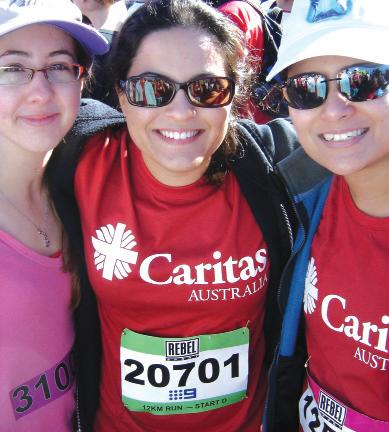

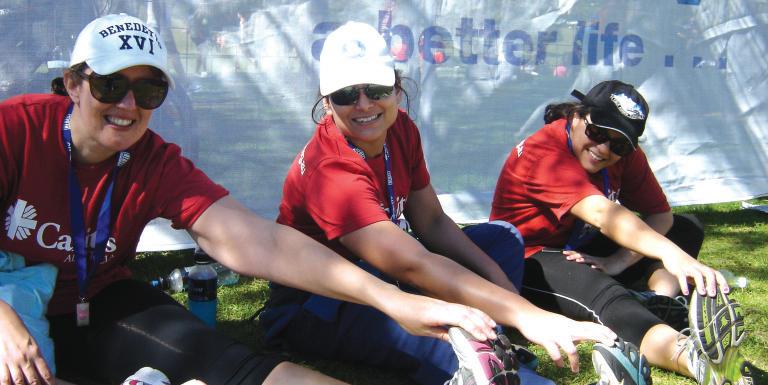
Stella Maris’ Albany Mission gets upgrade
Seafarers docking in Albany, often after months at sea, will enjoy upgraded facilities at the local Stella Maris Seafarers Mission after work on their centre was completed last month.
The centre has received a much needed internal and external paint job with the assistance of the Albany Port Authority while continuing its mission of providing transport, local shopping assistance, companionship and the celebration of Mass.
The centre began offering wireless internet to visitors three months ago when they realised that many docking Chinese seafarers had their own laptops but
no convenient way of contacting their loved ones.
Director Marylou Lomas told The Record that, apart from helping seafarers with practical tasks, the Mission is happy to provide a place where they can “enjoy and relax in friendly surroundings after many months away from their families.”
Most recently, they assisted a Filipino sailor who found out his wife in Manila was dying, helping him to contact his family and getting him quickly to the airport.
Ms Lomas and her husband David had been helping seafarers for over 17 years at the Mission when David, the Mission’s then-director, passed away earlier this year.
She was offered and accepted the post in March, continuing the good work with the Mission’s five volunteers.


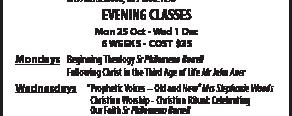

Page 4 6 October 2010, The Record THE PARISH
Above left, Amie Thorpe, Hanna Lyra and Priscilla Grainger; above right, the girls run for Caritas; below, Bronia Karniewicz, Priscilla and Hanna stretching.
Redemptorist urges widespread adoration
Parish priest Fr Liam Keating and Redemptorist Fr Hugh Thomas urged Catholics to spread the practice of adoration to the Blessed Sacrament when concelebrating a special Mass to mark seven years of perpetual adoration on 1 October at Christ the King Church in Beaconsfield.
Fr Thomas told a personal story of perpetual adoration which he said began at Beaconsfield six years ago. After giving a mission there, he concelebrated the first anniversary Mass and clearly remembered Fr Michael Evans say when we started out with the direction of Fr Doug Harris that he thought it would be good even if it only lasted a month or two.
Seven years later the grace of God is still propelling it along with the support of all local parishes. He said that new adorers were always welcome to join. He then said that Fr Doug invited him to join him on a trip to Surabaya, Indonesia. The administrator there had invited Fr Doug to promote adoration and thought he should start by giving a five day retreat to his
priests, hence Fr Thomas was needed. Eighty priests attended, then 1,000 people turned up for a two day course to establish perpetual adoration on 13 May 2005, which is a religious holiday in Indonesia.
The adoration chapel was still under construction so they started the adoration at a chapel in a hospital run by nuns. This proved to be so successful that it still operates today in the completed chapel.
Currently, 15 perpetual adoration centres operate in Indonesia. Fr Thomas said that, often, over 50 people would attend at the same time, and some would have to queue up at times to get in. Fr Thomas and Harris have now been to Indonesia several times promoting adoration.
Fr Thomas mentioned how Fr Harris used to preach about the extra value of attending during the late night and early morning hours. As he was a ‘day time adorer’, he decided to commit to a 2am in the morning slot at Sacred Heart Church in Highgate. He soon found this to be very special.
However, he then discovered that the adorer before him was doing two hours, so he took up one and a half hours. He now believes that only one hour is too short and is strengthened by his adoration time and urged people to do more time with Jesus and to introduce more people to this special blessing.
Fr Thomas stated that “the infinite power of our God” is illustrated by the fact that in 1989 only ten chapels of perpetual adoration existed. Now there are over 3,000 in the world.
“We all receive untold graces back from Jesus via perpetual adoration, so do not miss out, join in and bring others also,” Fr Thomas said.
Over these few years he has heard “many wonderful stories” from adorers as to how Jesus has touched them through adoration.
“I never cease to be amazed at their stories of the blessings they enjoy,” Fr Thomas said. A hearty supper was enjoyed after this Mass of thanksgiving.
For enquiries, phone Joe 93191169 or Yvonne 94307509.
Teachers’ conference to help implementation of Vatican II
BY ANTHONY BARICH
Aleading Australian theologian will correct misconceptions about the intent and ramifications of Vatican II at a national conference of Catholic teachers this month.
Dr Tracey Rowland, author of Ratzinger’s Faith: The Theology of Pope Benedict XVI and, recently, Benedict XVI: A Guide for the Perplexed, will address the Society of Catholic Teachers Australia’s second national conference on Continuity and Rupture: Interpretations of Vatican II and Truth and Revelation from Vatican II to Pope Benedict Organiser Renato Bonasera, Trinity College’s Curriculum writer for Religion and Life, said the conference is a timely reminder of “the beauty of the Bride of Christ – the Church – as the 29-30 October event focuses on Vatican II’s documents which are “so beautiful and rich in what it tells us about the Church and our role in the world”.
“Vatican II’s documents tell us so much about our role as the people of God and help us to recognise our place in salvation history, as well as our call to be light to the world and salt of the earth,” Mr Bonasera said.
Among other things, Dr Rowland will discuss how the understanding of Truth and Revelation has been adopted by Pope Benedict XVI, linking it back to Vatican II, especially Dogmatic Constitution on Divine Revelation Dei Verbum (“Word of God”), one of the principal documents of Vatican II which concerns inspiration and interpretation of Sacred Scripture.
Ukrainian Catholic Dr Andrew Kania, Aquinas College Director of Spirituality who has been a Research Fellow and Scholar at Oxford University, will also
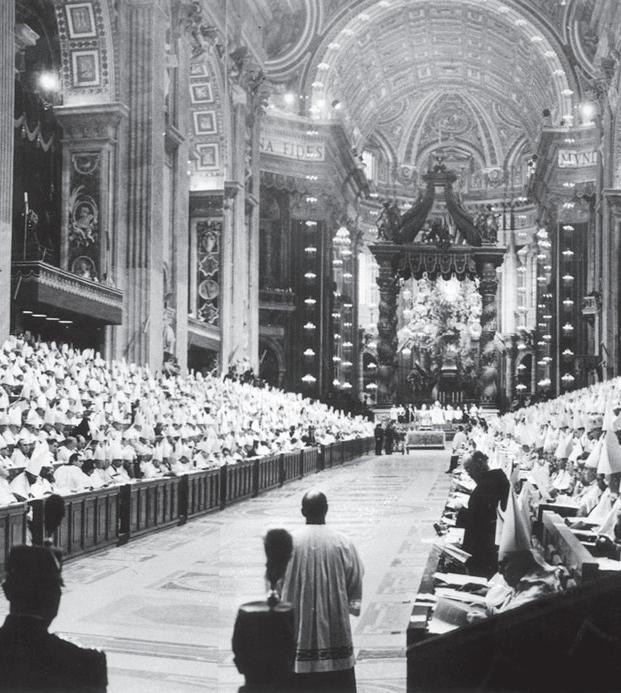
address the conference on From East to West: Why the Church must breathe with two lungs, referring to Pope John Paul II’s quote in Lumen Orientalis (“Light from the East”).
Irene McCormack Catholic College Religious Education coordinator Stephen Spiteri and founder of Catholic apologetics blog The Spirit Magnus, will address the conference on The Laity in the heart of the Church
He will address what lay people are called to in the life of the Church, focusing on the ecclesial movements and the dignity of the laity. Mr Bonasera will run workshops on Models of Church
Missions Sister of 55 years
goes to God
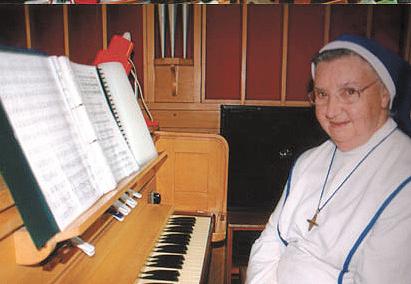 BY GLYNNIS GRAINGER
BY GLYNNIS GRAINGER
Our Lady of the Missions
Sister Elizabeth Stokes passed away peacefully on 4 September, aged 75, at Sir Charles Gairdner Hospital, Nedlands.
She had been a nun for 55 years: her gentle and compassionate spirit touched many and her musical gifts were a blessing to students and choirs alike.
Her Requiem Mass was celebrated at Sacred Heart Church, Highgate on 8 September which would have been her anniversary of membership of the RNDM Congregation.
Sr Madeleine Barlow and Sr Elizabeth’s sisters, Lee Newman and Liz Sanzone, delivered eulogies at the funeral Mass.
Sr Mary Elizabeth was born on 11 November 1935, the first born of Mavis and George Stokes and was named Janet Mary. Her parents went on to have a further eight children, including one stillborn son and twins. Her mother was one of five sisters, most of them musicians, and singalongs around the family piano, with her mother and grandfather accompanying on the violin, were commonplace in their West Leederville home.
Sr Elizabeth inherited this passion for music and singing and took piano lessons from the nuns at an early age.
When the War was on, the family transferred to Wagin where, at the age of 10, she made her First Holy Communion and announced that she wanted to be a nun.
Aged 14, she left school and continued to mention entering the convent. Her parents made an
agreement with her that she must first work for two years before making her final decision.
She worked for the Government Print, near St Mary’s Cathedral, where she attended extra Masses during her lunch break.
Then, after two years, she announced that her time at the office was done and she was ready to enter the convent of Our Lady of the Mission, which she did in 1952.
At the convent, she continued her studies with the piano and later violin, progressing well through all her exams to become a fully qualified music teacher, teaching since 1956.
Sr Elizabeth’s work involved teaching music and playing regularly for the Sunday community Masses, her music ministry being a gift to all. She particularly loved playing for the big events such as Christmas and Easter ceremonies, and at many weddings and funerals, First Communions and Confirmations. Above all else, she loved being a nun.
She also enjoyed being involved with the Julian Singers and Italian Choir, a big part of her life.
Since 1988, she was recognised as a Highgate identity, often seen walking to visit local people with the Eucharist – the old, the sick, the lonely and the shut-ins.
In a little house in Mary Street, she and Sr Patricia Byrne – her companion of 10 years - prepared meals and served them to the homeless who turned up on the doorstep. She also joined Sr Pat enthusiastically in her ministry with the Vietnamese people.
Sr Elizabeth spent her last months at Margaret Hubery House, Shelley.
and Salvation Outside the Church, using Vatican II’s teachings to engage participants with a deeper understanding of the Council’s vision so they can more fully live it out. While the conference is run for and by teachers, it is also designed for anyone, including non-Catholics.
It is of particular use to teachers, Mr Bonasera said, because in the Religion and Life course introduced into Year 11 last year and Year 12 this year, teachers are required to teach key learning points of the Church, including vocations.
Contact admin@scta.org.au or 0428 106 481 for more info.

Page 5 THE PARISH 6 October 2010, The Record www.allenorganswa.com Represented in WA by Ron Raymond at ALLEN DIGITAL COMPUTER ORGAN STUDIOS (WA) 14 AMERY ST., COMO 9450 3322
A panoramic view shows Bishops gathered in St Peter’s Basilica for the opening session of the Second Vatican Council in the fall of 1962. PHOTO: CNS
5,000 year old tradition boosts faith
BY W ILLIAM SUSENO
A 5,000 year old tradition was on show when the the Perth Chinese Catholic Community celebrated the Mid-Autumn (Zhong Qiu) Festival on 19 September after the 4pm Sunday Mass at Holy Family Church in Como.
PCCC chaplain Fr Wang HaiBo explained that since 5,000 years ago, Chinese had understood appreciating the universe and continuity of life; hence, in every season, the Chinese celebrated their appreciation with an important festival:
● In Spring season to celebrate by praying to the Sun;
● In Summer season to celebrate by praying to the Earth;
● In Autumn season to celebrate by praying to the Moon; and
● In Winter season to celebrate by praying to the Sky.
Therefore, there are four important celebrations in one year of the Chinese calendar:
Chun Jie – New Year; Qing Ming – Praying to the ancestors by visiting the cemetery; Duan Wu – Praying in memory of the Patriot QuYuan (Dragon Boat Festival); Zhong Qiu – Gathering for the Mid-Autumn Festival.
The Mid-Autumn Festival is held on the 15th day of the eighth month in the Chinese Lunar Calendar, which fell on 22 September this year. It is when the moon is supposedly at its fullest and roundest.
Traditionally, on the evening of a Mid-Autumn Festival, families
stay up late and get together eating mooncakes and gazing at the moon, while the children are busy making and happily playing with lanterns.
When PCCC celebrated the Mid-Autumn Festival on 19 September, the Mass Procession began with children carrying lanterns, with one of the lanterns offered as a gift to the Altar as a symbolic gesture.
Perth Archdiocesan Vicar for Migrants Fr Blasco Fonseca who concelebrated the Mass had just returned from a month’s visit to mainland China and is aware of the fast development of Catholic churches in mainland China as well as the Chinese culture.
As seen in the picture, Fr Blasco and Fr Wang HaiBo were admiring the lanterns that were hung in the foyer of the Holy Family Church. At the bottom of each lantern there is writing to wish luck and prosperity to the people.
The celebration of the MidAutumn Festival continued with the astounding songs and sounds of the Chinese traditional musical instruments, Hua Yue Tuan, played by a remarkable group of talented musicians from Chung Hua. Everyone was also entertained by a variety of games such as the guessing games of Chinese Characters, and a quiz where people need to finish off a quote from famous poets in Tang and Song Dynasties.
Dinner and mooncakes were also provided by the PCCC Committee and this joyous celebration finished around 7.45pm.

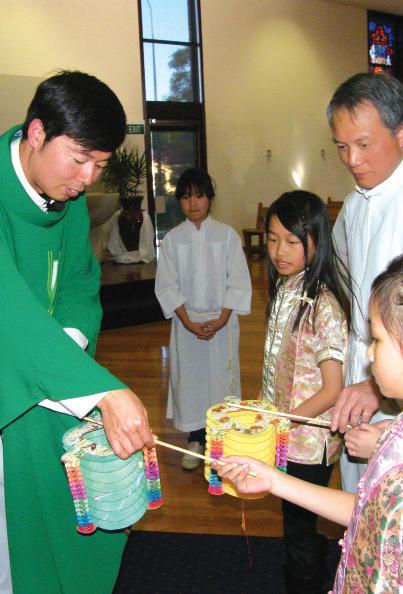
Parish shows sporting prowess
Lockridge more than just a spiritual community as teens take out East Perth Basketball Association grand final
A team representing Good Shepherd parish in Lockridge won the East Perth Basketball Association under 16 grand final on 18 September, showing that the parish activities extend far beyond Sunday Mass.
Players from the parish community and surrounding suburbs, including Eden Hill and Bassendean, who attended Good Shepherd Primary School and have since graduated to Chisholm and La Salle Catholic Colleges have been part of a basketball subculture at the parish since Fr Dan Foley and some parishioners started a junior team in 1998.
Salvatore De Luca, who started in that 1998 team with other Year 6s, now coaches the under 16 team which, on 18 September, beat the Morley Rockets 44-16 in the grand final at the Morley Recreation Centre.
The team has also been supported by current parish priest Fr Francis Ly and Fr John Noel Marie, now assistant priest at St Mary’s Cathedral. The aims of the team are ‘fun, fitness and friendship’. Its record since 2007 has been a very impressive 69 wins from 80 games. They have played the last three grand finals and won two from three. This season, they have won all their 14 games.

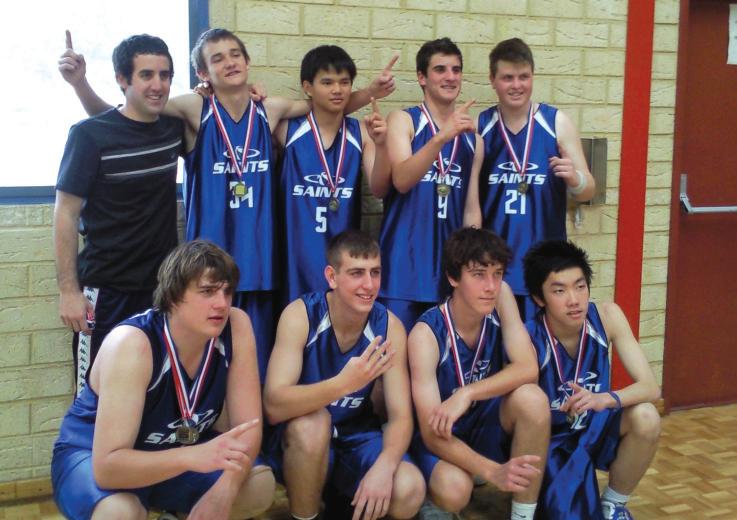
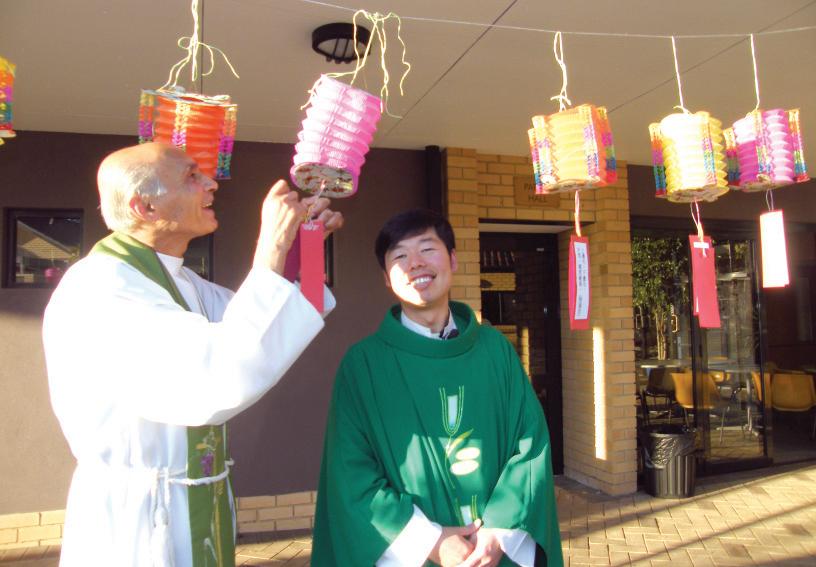
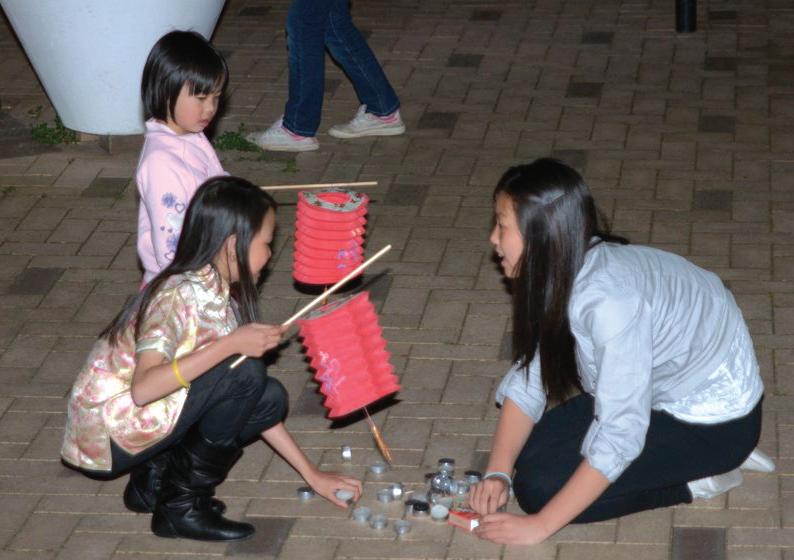
Catechetical resource for newly translated Missal out
The catechetical resource
Become One Body, One Spirit, In Christ was launched at the Academy of Mary Immaculate in Fitzroy on 30 September by Adelaide Archbishop Wilson, the President of the Australian Catholic Bishops Conference.
The DVD ROM Resource, which can be purchased from Fraynework or through St Paul’s publications (www.stpauls.com. au), is designed to explain more fully the changes to the English version of the Roman Missal as well as imbue Catholics in the English speaking world with an understanding of the parts of the liturgy – with a particular focus on the Eucharist.
The interactive resource contains sections on living a Eucharistic life; receiving the English translation; celebrating the Eucharist; exploring the Mass through the ages; and crafting the art of liturgy.
Present at the launch were Sr Adele Howard RSM, Director of Fraynework Multimedia, who was a driving force behind the DVD ROM resource.
Sr Adele, who was responsible for filming the resource in many countries, gave a step-by-step introduction to the resource, showing the interactive nature of the content – which uses a remarkable breadth of multimedia to explain the liturgical norms which will gradually be adopted by Catholics in the English speaking world. Also present to explain the implementation of changes

to the Missal into the liturgy was Archbishop of Melbourne, Denis Hart. Archbishop Hart announced the musical settings which would be approved for use in parishes also – which will be made available more widely as the new translation is brought into parishes in 2011.
Director of the Bishops Commission for the Liturgy Fr Peter Williams paid tribute to all who had worked together over eight years to produce the resource and the new translations of the Missal.
More information about the DVD ROM resource is available at www. becomeonebodyonespiritinchrist.org
Page 6 6 October 2010, The Record THE PARISH
Above left and below right, children playing the lantern outside the church hall while the parents were inside enjoying the performance of Hua Yue Tuan (Chinese Traditional Music instrumentalia); above right, Fr Blasco Fonseca and Fr Wang talk about the Lantern in the Church foyer; below left, a child presents the lantern to Fr Wang HaiBo.
PHOTOS: WILLIAM SUSENO
Top, below: Lockridge parishioners during and after the grand final which they won.
PHOTOS: COURTESY OF LOCKRIDGE PARISH
The One Body, One Spirit in Christ interactive DVD when it was shown at the national liturgy conference in Perth earlier this year.
Problems plague Bishops’ Deaf initiative
BY ANTHONY BARICH ANALYSIS
The Australian Bishops’ Commission for Pastoral Life has established a Deaf and Hard of Hearing Committee to facilitate the inclusion of people who are deaf and hard of hearing in church communities by the training of priests in sign language and greater use of interpreters at Mass.
This is a step forward, as most Australian dioceses have zero resources to cater for Catholics with these disabilities, let alone the myriad of other disabilities many Catholics have.
But problems abound as to the practicality of catering for people who are deaf and hard of hearing whose disabilities are as individual as they are.
This is compounded by the fact that there is only one full-time priest-chaplain for deaf and hard of hearing – Fr Paul Pitzen of the Archdiocese of Perth’s Emmanuel Centre run by and for people with disabilities.
Emmanuel is the only centre of its kind as it caters for a range of people with an even greater range of disabilities.
Emmanuel has helped establish several Mental Health Support and Well Being Groups around the Archdiocese and travels beyond its own Archdiocesan boundaries to run full day sessions with schools to create awareness of deaf and
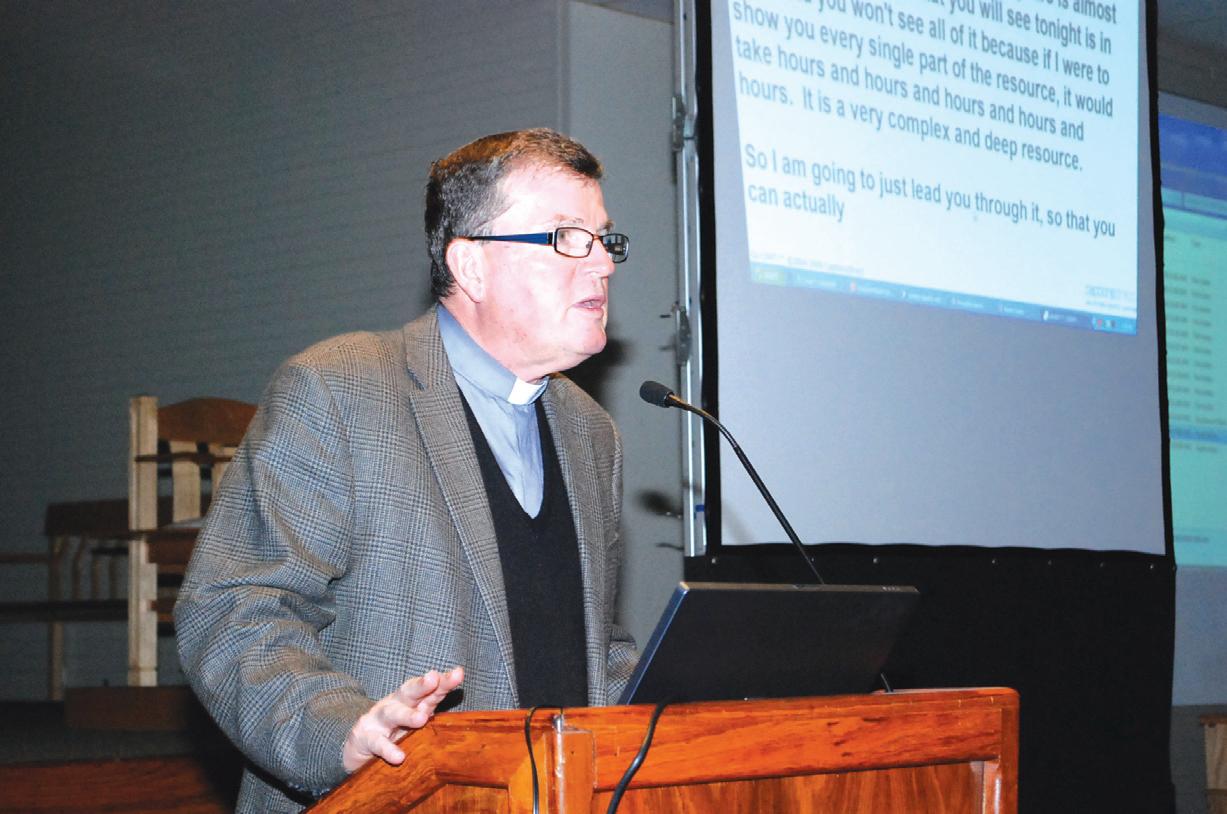
typing out the text for the hard of hearing. The deaf and hard of hearing have received renewed emphasis by the Australian Bishops, but problems remain.
hard of hearing people, such as recent trips to Port Hedland in the Geraldton Diocese and Collie in Bunbury Diocese.
It is estimated that there are approximately 600 Catholic deaf in the Perth Archdiocese, with about 10 in Bunbury and a few more in Geraldton. Most of the Catholic deaf in Broome are understood to be Aboriginal.
Beyond WA, Sydney’s Ephpheta Catholic Centre for Deaf and Hard of Hearing people services Sydney, Broken Bay and Parramatta. While it is well supported by Sydney
Vinnies chief slams ‘hypocritical’ government
The chief executive of Australia’s St Vincent de Paul Society National Council has condemned the Federal Government for failing to fulfill the commitment it made in 2008 to end the detention of children and of abusing human rights.
“The continued detention of people, particularly children, must end,” Dr John Falzon said in a 24 September statement issued through the Archdiocese of Sydney.
He also urged the government to keep its pledge to only put asylum seekers in an Immigration Detention Centre as a last resort and for the shortest practicable time.
“The continued detention of people who pose no danger to the community is unjustifiable by any moral standard.”
Dr Falzon and the St Vincent de Paul Society are “especially dismayed” by the locking up of children and the fact there are as many as 645 children currently being kept in detention centres across Australia and on Christmas Island.
“We understand there are 448 children in detention on the mainland and 197 on Christmas Island,” he said.
Dr Falzon also cited mental health expert and Australian of the Year Professor Patrick McGorry, who refered to Australia’s detention centres as “factories for producing mental illness.”
Dr Falzon described the
 Dr John Falzon
Dr John Falzon
current mandatory detention policy of the current Labor-led government of Prime Minister Julia Gillard as an abuse of human rights.
He also accused the Federal Government of hypocrisy for its “back flip” on promises it made in 2008 when it referred to the previous LiberalNational Party Coalition-led government’s detention policy as “a shameful chapter in our history”.
“Members of the St Vincent de Paul Society across Australia have been privileged to stand up with, and learn from, many wonderful people who have sought asylum in our country; and now is not the time to move backwards in our nation’s commitment to humanity,” Dr Falzon said.
He made the comments as 200 members of the Sydney branch of St Vincent de Paul Society New South Wales gathered in Sydney for its annual congress where members heard leading speakers from the “front line” of working with the disadvantaged.
Cardinal George Pell and specialises in signing for the deaf, it does not have expertise in catering for the hard of hearing.
Melbourne has the John Pierce Centre for Deaf Ministry, which services Victoria by dealing in Auslan, “our natural language”.
The Deaf and Hard of Hearing Committee was launched on 29 September by the Australian Bishops’ Commission for Pastoral Life under the auspices of the Australian Catholic Disability Council (ACDC).
The committee, consisting of
Emmanuel coordinator Barbara Harris and Fr Paul Pitzen, Ephpheta’s official translator
Nicole Clark as chair, Ms Danni Wright and John Pierce Centre executive manager Rebecca Miller, will have monthly teleconferences and will meet face to face on 3-4 November in Melbourne.
The Deaf and Hard of Hearing Committee will address barriers to inclusion and participation in the Church experienced by people who are deaf and hard of hearing.
A new Youtube clip has been posted on the Australian Catholic Bishops Conference website in which Danni Wright, part-time community worker at Sydney’s Ephpheta Catholic centre for Deaf and Hard of Hearing, signs the content of the press release announcing the new Committee.
ACDC chair Michele Castagna said the focus committee has an “extremely important role” in bringing issues to the attention of the wider Church community at all levels and is an outcome of participation in The XXIV International Conference Ephphetha!’ The Deaf Person in the Life of the Church held in Rome in November 2009.
Australia was the first country to report back with information about specific actions planned, the first step being the establishment of the National Committee for the Deaf and Hard of Hearing. Measures discussed and recommended by the Deaf and Hard of
Hearing Committee will include training priests to use sign language, having regular interpreted Masses and other diocesan events and creating awareness throughout the Church of the rights by Baptism of deaf and hard of hearing people to fully participate at all levels in the life of the Church.
Ms Clark said the committee will be a voice for those who are often without a voice in the Church.
“The Church, through new action and a new approach, can truly fulfill the words of Jesus when He said ‘Ephpheta - be open’.
“With a true commitment to Jesus’ teaching, the Church can empower and encourage deaf and hard of hearing people to take their rightful place in the family of God”, Ms Clark said.
Barbara Harris told The Record that while the establishment of the committee is a much-needed step forward, addressing the tangibles of the deaf and hard of hearing requires lateral thinking.
“As deafness is very much an individual thing, you need not necessarily use the same resources because people’s deafness is so individual,” she said.
“It’s better to have creativity so that then you make the resources fit the person, not the person fit the resources.
“One really doesn’t understand that concept unless one really understands deafness.”


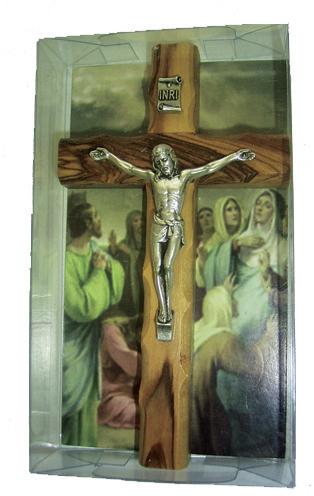


Page 7 6 October 2010, The Record THE NATION Aid to the Church in Need …. a Catholic charity dependent on the Holy See, providing pastoral relief to needy and oppressed Churches
Fr Peter Williams, director of the Australian Bishops’ liturgy office, speaks as captioning information is provided realtime via an Adelaide company
Problems plague Bishops’ Deaf initiative
BY ANTHONY BARICH ANALYSIS
The Australian Bishops’ Commission for Pastoral Life has established a Deaf and Hard of Hearing Committee to facilitate the inclusion of people who are deaf and hard of hearing in church communities by the training of priests in sign language and greater use of interpreters at Mass.
This is a step forward, as most Australian dioceses have zero resources to cater for Catholics with these disabilities, let alone the myriad of other disabilities many Catholics have.
But problems abound as to the practicality of catering for people who are deaf and hard of hearing whose disabilities are as individual as they are.
This is compounded by the fact that there is only one full-time priest-chaplain for deaf and hard of hearing – Fr Paul Pitzen of the Archdiocese of Perth’s Emmanuel Centre run by and for people with disabilities.
Emmanuel is the only centre of its kind as it caters for a range of people with an even greater range of disabilities.
Emmanuel has helped establish several Mental Health Support and Well Being Groups around the Archdiocese and travels beyond its own Archdiocesan boundaries to run full day sessions with schools to create awareness of deaf and

typing out the text for the hard of hearing. The deaf and hard of hearing have received renewed emphasis by the Australian Bishops, but problems remain.
hard of hearing people, such as recent trips to Port Hedland in the Geraldton Diocese and Collie in Bunbury Diocese.
It is estimated that there are approximately 600 Catholic deaf in the Perth Archdiocese, with about 10 in Bunbury and a few more in Geraldton. Most of the Catholic deaf in Broome are understood to be Aboriginal.
Beyond WA, Sydney’s Ephpheta Catholic Centre for Deaf and Hard of Hearing people services Sydney, Broken Bay and Parramatta. While it is well supported by Sydney
Vinnies chief slams ‘hypocritical’ government
The chief executive of Australia’s St Vincent de Paul Society National Council has condemned the Federal Government for failing to fulfill the commitment it made in 2008 to end the detention of children and of abusing human rights.
“The continued detention of people, particularly children, must end,” Dr John Falzon said in a 24 September statement issued through the Archdiocese of Sydney.
He also urged the government to keep its pledge to only put asylum seekers in an Immigration Detention Centre as a last resort and for the shortest practicable time.
“The continued detention of people who pose no danger to the community is unjustifiable by any moral standard.”
Dr Falzon and the St Vincent de Paul Society are “especially dismayed” by the locking up of children and the fact there are as many as 645 children currently being kept in detention centres across Australia and on Christmas Island.
“We understand there are 448 children in detention on the mainland and 197 on Christmas Island,” he said.
Dr Falzon also cited mental health expert and Australian of the Year Professor Patrick McGorry, who refered to Australia’s detention centres as “factories for producing mental illness.”
Dr Falzon described the
 Dr John Falzon
Dr John Falzon
current mandatory detention policy of the current Labor-led government of Prime Minister Julia Gillard as an abuse of human rights.
He also accused the Federal Government of hypocrisy for its “back flip” on promises it made in 2008 when it referred to the previous LiberalNational Party Coalition-led government’s detention policy as “a shameful chapter in our history”.
“Members of the St Vincent de Paul Society across Australia have been privileged to stand up with, and learn from, many wonderful people who have sought asylum in our country; and now is not the time to move backwards in our nation’s commitment to humanity,” Dr Falzon said.
He made the comments as 200 members of the Sydney branch of St Vincent de Paul Society New South Wales gathered in Sydney for its annual congress where members heard leading speakers from the “front line” of working with the disadvantaged.
Cardinal George Pell and specialises in signing for the deaf, it does not have expertise in catering for the hard of hearing.
Melbourne has the John Pierce Centre for Deaf Ministry, which services Victoria by dealing in Auslan, “our natural language”.
The Deaf and Hard of Hearing Committee was launched on 29 September by the Australian Bishops’ Commission for Pastoral Life under the auspices of the Australian Catholic Disability Council (ACDC).
The committee, consisting of
Emmanuel coordinator Barbara Harris and Fr Paul Pitzen, Ephpheta’s official translator
Nicole Clark as chair, Ms Danni Wright and John Pierce Centre executive manager Rebecca Miller, will have monthly teleconferences and will meet face to face on 3-4 November in Melbourne.
The Deaf and Hard of Hearing Committee will address barriers to inclusion and participation in the Church experienced by people who are deaf and hard of hearing.
A new Youtube clip has been posted on the Australian Catholic Bishops Conference website in which Danni Wright, part-time community worker at Sydney’s Ephpheta Catholic centre for Deaf and Hard of Hearing, signs the content of the press release announcing the new Committee.
ACDC chair Michele Castagna said the focus committee has an “extremely important role” in bringing issues to the attention of the wider Church community at all levels and is an outcome of participation in The XXIV International Conference Ephphetha!’ The Deaf Person in the Life of the Church held in Rome in November 2009.
Australia was the first country to report back with information about specific actions planned, the first step being the establishment of the National Committee for the Deaf and Hard of Hearing. Measures discussed and recommended by the Deaf and Hard of
Hearing Committee will include training priests to use sign language, having regular interpreted Masses and other diocesan events and creating awareness throughout the Church of the rights by Baptism of deaf and hard of hearing people to fully participate at all levels in the life of the Church.
Ms Clark said the committee will be a voice for those who are often without a voice in the Church.
“The Church, through new action and a new approach, can truly fulfill the words of Jesus when He said ‘Ephpheta - be open’.
“With a true commitment to Jesus’ teaching, the Church can empower and encourage deaf and hard of hearing people to take their rightful place in the family of God”, Ms Clark said.
Barbara Harris told The Record that while the establishment of the committee is a much-needed step forward, addressing the tangibles of the deaf and hard of hearing requires lateral thinking.
“As deafness is very much an individual thing, you need not necessarily use the same resources because people’s deafness is so individual,” she said.
“It’s better to have creativity so that then you make the resources fit the person, not the person fit the resources.
“One really doesn’t understand that concept unless one really understands deafness.”





Page 7 6 October 2010, The Record THE NATION Aid to the Church in Need …. a Catholic charity dependent on the Holy See, providing pastoral relief to needy and oppressed Churches
Fr Peter Williams, director of the Australian Bishops’ liturgy office, speaks as captioning information is provided realtime via an Adelaide company
6 October 2010,
Holy Cross College blessing caps years of planning
Two martyrs - one of them a 20th century crusading Archbishop - a foundress of Religious life in WA and a visionary for social justice who is on the path to sainthood - are the patrons of the newest Catholic school in Perth
On 14 September, the Feast of the Triumph of the Cross, Holy Cross College, Western Australia’s newest Catholic school, was blessed by Archbishop Barry Hickey and officially opened by Ms Mary Retel, Deputy Director of Catholic Education.
A very special part of the ceremony was the blessing of the Crosses which have been received as gifts from 18 Religious Orders. These Crosses are a powerful reminder of the College Vision - a community of transformation in the spirit of the Risen Christ.
They remind the College community of the work of service of Religious Orders which have served, and continue to serve, in Western Australia. Representatives from many of the Religious Orders were present at the ceremony.
The work of building Holy Cross College in Ellenbrook began with the formation of the Foundation College Board in May 2007.
The current Board Chairperson, Ms Flavia Lenzo, spoke of the involvement of the College Board in all aspects of the development of the College from the appointment of the Principal, the selection of the architect, the design of the logo and selection of uniforms to creating the Vision and Mission.
Foundation Principal, Ms Mandy Connor, acknowledged the work of the College staff: “From the day they were appointed, staff members have contributed to the development of this College as a place where students have the opportunity to grow as young people who will embrace the College motto, ‘life to the full’”.
During the past few months, the

Founded on the Cross: Students hold some of the Crosses presented to their new school by Religious Orders: Kate D’Evelynes (Christian Brothers Cross), Adrien Pasalich (Sisters of St Joseph of the Aparition Cross), Cameron Miles (Sister of St Joseph of the Sacred Heart Cross), Jace Tomlinson (Marist
new College community has been involved in a rich process to select people who will be worthy patrons for the College, who represent the Vision and Mission in the way they led their lives and who will be good role models for the College community today and in years to come. The process involved consulta-
tion with students, staff and the wider College and Parish communities.
It included a wonderful Living Library during which representatives of Religious Orders, Catholic Youth ministries and Catholic education and service organisations shared stories of people of great

faith. At the Living Library, the students learned that the first convent school in Western Australia was opened by Ursula Frayne in 1846 in the Convent of the Holy Cross. The culmination of the process was the naming of a College patron and four House Patrons, representing the four pillars of the College, at the Blessing and Opening Ceremony. The final selection panel involved students, staff, Board and Parish representatives.
College Patron: Oscar Romero
Faith Pillar: Irene McCormack
Learning Pillar: Ursula Frayne Interrelationship Pillar: Frederic Ozenam
Great day: Judy Moylan, Member for Pearce, stands at left with Ms Mandy Connor, Holy Cross’s Founding Principal, Archbishop Hickey, CEOWA Deputy Director Mary Retel and Ellenbrook Parish Priest Fr Francis.
Enrichment Pillar: Rosendo
Salvado
The Blessing and Opening Ceremony was a lovely celebration of the many people who have contributed to the building of this new College. Parents and staff joined visitors for morning tea after the ceremony and students celebrated with a BBQ lunch.
School will have 1,000-plus students at capacity
Holy Cross College in Ellenbrook opened for classes with the beginning of Term One in February this year.
By the time the College is operating at planned capacity, in about 15 years from now, it will have more than 1,000 students in six streams and will be a major feature of the educational landscape in Ellenbrook and surrounding areas.
Currently, it is operating two streams of Year 7 and one of Year 8 students and has an approximate enrolment of 75.
Declaring the College officially open, Catholic Education Office Deputy Director Mary Retel thanked Foundation
Principal Mandy Connor and Business Manager Jeff Thorne and the founding staff of the College for their contributions.
She also thanked the State and Federal Governments for their contributions to financing the building of the school.
Grants from both Governments have totalled approximately $15 million, with the State Government providing $12,700,000 and the Federal Government providing $2,300,000 under the Commonwealth Grants Programme and another $104,000 under the Building the Education Revolution.
The College’s motto is ‘Life to the full.’
Further information: www.holycross.wa.edu.au.
In the mafia’s heartland Benedict’s message is clear: repent
Continued from Page 1 am with you to bear witness to my nearness to you and my prayers for you.
“I am here to give you strong encouragement to not be afraid to bear clear witness to the human and Christian values that are so deeply rooted in the faith and the history of this place and its people.”
“Your beautiful island was among the first regions of Italy to accept the faith of the Apostles,” the Holy Father acknowledged, “to receive the proclamation of the Word of God, to adhere to the faith in a generous way so that even in the midst of hardships and persecutions the flower of sanctity blossomed in it.
“Sicily was and is a land of saints, who belonged to every condition of life, who lived the Gospel with simplicity and integrity,” he added.
Addressing the laypeople in particular, Benedict XVI stated, “Do not be afraid to live and bear witness to the faith in the various spheres of society, in the multiple situations of human existence, above all in the difficult ones!”

“Faith gives you the strength of God to be always confident and courageous, to go forward with new decision, to embark on the initiatives that are necessary to give a face to your land that is ever more
beautiful,” he affirmed. “And when you encounter the world’s opposition,” the Pope said, “listen to the words of the Apostle: ‘Do not be ashamed therefore to bear witness to our Lord.’”
He continued: “We must be ashamed of evil, of that which offends God, of that which offends man; we must be ashamed of the evil that afflicts the civil and religious community with actions that do not like to come into the light!”
“The temptation of discouragement, of resignation, comes to those who are weak in faith, to those who confuse evil with good, to those who think that in the face of evil, often great evil, there is nothing to be done,” the Pontiff said.
“But those who stand firmly on faith,” he added, “those who are full of trust in God and live in the Church, are able to unleash the explosive power of the Gospel.
“This is how the saints lived,” the Holy Father noted, “who flourished over the course of the centuries in Palermo and in every part of Sicily, and how the laypeople and priests
of today live whom you know well.”
He mentioned in particular the example of Fr Pino Puglisi (19371993), an Italian priest in the process of beatification who was killed at age 56 by the mafia.
Benedict XVI said, “May they be the ones who always keep you united and who encourage you in the desire to proclaim, with words and with deeds, the presence and the love of Christ.”
At the end of his day long trip to Palermo, on his way to the airport for departure, the Pope decided to stop near Capaci at the site of an attack by the mafia on Giovanni Falcone (1939-1992).
The Italian judge spent his career prosecuting the Sicilian mafia until he was killed with his wife and three bodyguards by a bomb placed under the road on the way to the airport.
At this site, the Pontiff got out of his car, laid a bouquet of flowers at the memorial and prayed in silence for the victims of the mafia and other organised crime. Then, he returned to his car to go to the airport for his flight back to Rome.
Page 8
The Record THE PARISH
Cross) and Taya McFarlane. PHOTOS: COURTESY HOLY CROSS COLLEGE
Pope Benedict XVI arrives to celebrate Mass in Palermo, Sicily on 3 October.
PHOTO: CNS/TONY GENTILE, REUTERS

A PILGRIM’S PROGRESS
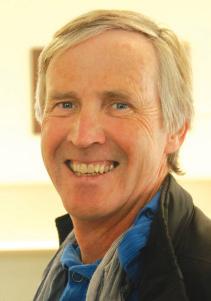
Dr Duncan Jefferson, who trod the Camino Salvado with other pilgrims in August and September, kept a diary for The Record This week, the first instalment: Day One...
Monday, 30 August, 19km
Pilgrims carry many things on their journeys: they carry bags on their backs containing the necessities of life, and they carry hopes and fears, wounds and memories in their hearts. Thus it was that we gathered from all around this great Continent – from Tasmania, Queensland, Victoria and South Australia – along with companions from metropolitan and rural WA at St Joseph’s Church Subiaco, for the first Camino Salvado of 2010.
We were “commissioned” by Fr Joe Walsh in a brief and meaningful service, to walk on behalf of our communities to New Norcia, and to let the gift of pilgrimage become a reality for each one of us. We received the emblem of the Camino, a Scallop Shell graced with the Cross, to wear as an exter-
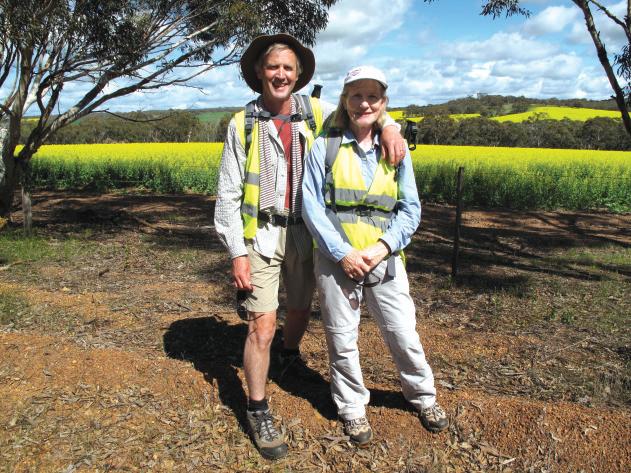
nal sign of Pilgrims. And then we simply started walking!
With stops at the beautifully restored St George’s Anglican Cathedral and also at the stunning “ancient yet modern” St Mary’s Catholic Cathedral, we passed quickly onto the banks of another great Perth treasure: the Swan River. We followed this precious lifeline through the parks and wetlands, past amazing vistas and imposing buildings, to the iconic town of Guildford and St Charles Seminary.
We were met there by Claudia –a modern day Saint to those with tired feet and empty stomachs –and feasted on hot cups of tea and homemade cakes! Then onto our overnight accommodation where, after a hot bath, I could now say that Day 1 had gone well: tomorrow ... well, that remained a mystery we had yet to experience!
Next week: the rain hits
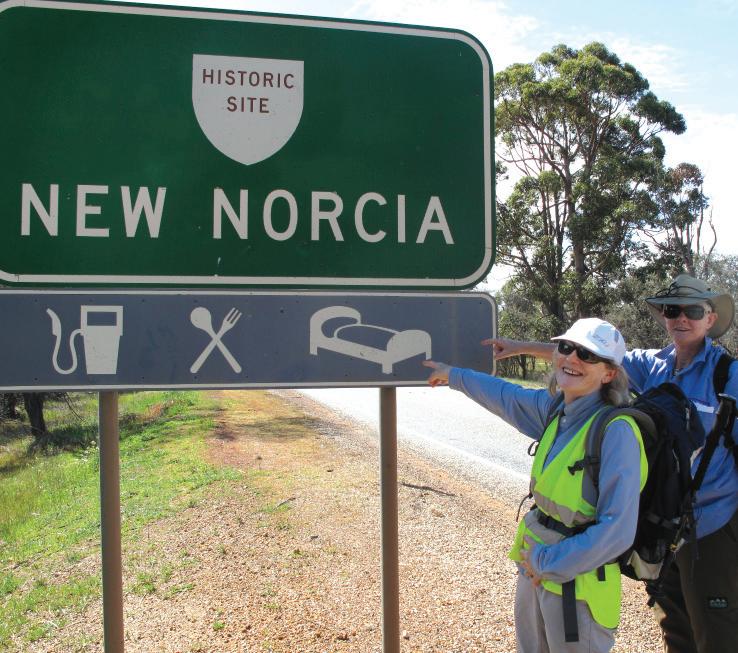

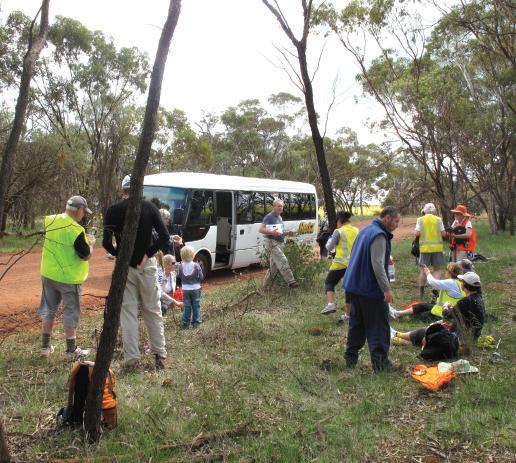
Page 9 6 October 2010, The Record
VISTA
Pilgrims trekking the Camino Salvado take a break at Bell’s Rapids above, and on the road, below, to enjoy the view, stretch tired muscles - and refuel. PHOTOS: COURTESY DUNCAN JEFFERSON
Camino Salvado Journal ~ Part 1 Dr Duncan Jefferson

A PILGRIM’S PROGRESS

Dr Duncan Jefferson, who trod the Camino Salvado with other pilgrims in August and September, kept a diary for The Record This week, the first instalment: Day One...
Monday, 30 August, 19km
Pilgrims carry many things on their journeys: they carry bags on their backs containing the necessities of life, and they carry hopes and fears, wounds and memories in their hearts. Thus it was that we gathered from all around this great Continent – from Tasmania, Queensland, Victoria and South Australia – along with companions from metropolitan and rural WA at St Joseph’s Church Subiaco, for the first Camino Salvado of 2010.
We were “commissioned” by Fr Joe Walsh in a brief and meaningful service, to walk on behalf of our communities to New Norcia, and to let the gift of pilgrimage become a reality for each one of us. We received the emblem of the Camino, a Scallop Shell graced with the Cross, to wear as an exter-

nal sign of Pilgrims. And then we simply started walking!
With stops at the beautifully restored St George’s Anglican Cathedral and also at the stunning “ancient yet modern” St Mary’s Catholic Cathedral, we passed quickly onto the banks of another great Perth treasure: the Swan River. We followed this precious lifeline through the parks and wetlands, past amazing vistas and imposing buildings, to the iconic town of Guildford and St Charles Seminary.
We were met there by Claudia –a modern day Saint to those with tired feet and empty stomachs –and feasted on hot cups of tea and homemade cakes! Then onto our overnight accommodation where, after a hot bath, I could now say that Day 1 had gone well: tomorrow ... well, that remained a mystery we had yet to experience!
Next week: the rain hits



Page 9 6 October 2010, The Record
VISTA
Pilgrims trekking the Camino Salvado take a break at Bell’s Rapids above, and on the road, below, to enjoy the view, stretch tired muscles - and refuel. PHOTOS: COURTESY DUNCAN JEFFERSON
Camino Salvado Journal ~ Part 1 Dr Duncan Jefferson
Ceremonies to air
THE CANONISATION of Blessed Mary MacKillop will be seen live, both on Australian TV and the Web, direct from St Peter’s Square in Rome.
Sky TV will broadcast live from about 6.30pm (eastern time) on Sunday night, 17 October while ABC News 24, the new 24 hour free-to-air station for the National Broadcaster, has also indicated it will broadcast as much as possible of the Canonisation ceremony.
Both will provide expert commentary on the events as they unfold.
ABC1 ’s Compass programme will feature a Canonisation special at 10pm. Other stations have indicated they will have features and live crosses to Rome as well as updates in their regular news services.
A live web stream of the ceremony will also be available, complete with commentary.
Anyone with Internet can access the web stream from the Archdiocese of Sydney website ( www.sydneycatholic.org ), the XT3 social network site (www.xt3. com) or the Mary MacKillop site (www.marymackillop.org.au).
Following the ceremony, the webcast will be available on demand so that schools, or others who might miss the actual events, can access it and view it at a time of their choosing.
Those with EWTN will also be able to view the ceremonies.
From 14 October, The Record will present a special report on its website (www.therecord.com.au) prepared by Rome television company Rome Reports.
Winners inspired by a Saint’s love for all
“Suffering With A Smile, a short video clip filmed and produced by Kieran Williams, won the $5,000 first prize in the “Looking for Mary” competition run by the Sisters of St Joseph Youth Committee, XT3.com and sponsored by the University of Notre Dame Australia.
Ten finalists, family, friends and some of the judges gathered at the Sydney campus of the University of Notre Dame for the announcement by UNDA Deputy Vice Chancellor Hayden Ramsay on 1 October.
The national video competition was seen as a means to help young people engage in the reality of the life of Australia’s first saint. The videos looked at how Mary might be and react in today’s society. Some showed her as an example in contemporary youth culture while others featured a mix of people talking about what Mary MacKillop meant to them.
The awards were judged by actor Tim Pocock from X:Men Origins:Wolverine musician and songwriter Gary Pinto lecturer in cinema and theology Fr Richard Leonard Sr Pat Malone Gerry Turcotte, Dean of Arts and Sciences, Notre Dame and Dr Anita Heiss, Sydney writer and poet.
Alfio Jr Stuto, who played Jesus during the Sydney World Youth Day “Stations of the Cross”, filmed and produced Mary of the Cross and was awarded runner up.
Third prize went to Thomas Ricciardiello and Anh Nguyen for their film, Seeing a Need Presenting the prizes, Hayden Ramsay said Mary MacKillop was born in Scotland, raised in Australia and had a Catholic soul. He said after viewing the entries, he was most impressed by the way all the young cinematographers understood Mary’s message.
“I wanted to look at one aspect of Mary’s life that made a saint and then I reflected on people in my own life whom I believed lived a saintly life,” competition winner Kieran Williams said.
“Someone who came to mind was a young boy I went to school with, Daniel Khoury, and in my mind he certainly was a saint. He endured a lot of suffering towards the end of his life and he was very positive and would never let it get him down, he was selfless. When I was researching Mary MacKillop’s life, there was obviously a lot of suffering in her own story and despite this suffering she remained positive, selfless and determined. I wanted to highlight the link.”
Five other Blesseds will be canonised saints alongside Australian Blessed Mary of the Cross MacKillop in Rome on 17 October
The Six Blesseds are:
Stanislaw Soltys, called Kazimierczyk, Polish professed Religious of the Order of Canons Regular Lateranense (14331489).
Andre Bessette (ne Alfred), Canadian professed Religious of the Congregation of the Holy Cross (1845-1937).
Candida Maria de Jesus Cipitria y Barriola (nee Juana Josefa), Spanish founder of the Congregation of the Daughters of Jesus (1845-1912).
Mary of the Cross MacKillop (nee Mary Helen), Australian foundress of the Sisters of St Joseph of the Sacred Heart (18421909).
Giulia Salzano, Italian foundress of the Congregation of Sisters Catechists of the Sacred Heart (1846-1929).
Battista da Varano (nee Camilla), professed nun of the Order of Poor Clares and foundress of the monastery of St Clare in the Italian town of Camerino (1458-1524).
Summary of Events in Rome
16-18 October:
Aussies celebrate M
Australia has found many ways to celebrate our first official home-grown sa coins and stamps, as the following stories show. Also, Australia’s Ambassad Fischer, shares his advice on things to do and see while in Rome.
 BY ANTHONY BARICH
BY ANTHONY BARICH
Australia’s first saint has been commemorative coin to celeb in Rome by Pope Benedict XV Sister Anne Derwin RSJ, c of St Joseph of the Sacred H founded with Fr Julian Tenison Woods in Mary MacKillop Place in North Sydney on Struck from 1oz of 99.9 per cent pure pure gold, each coin is issued as official Au
While not the same as circulating Commonwealth Government’s guarantee medal, a Perth Mint spokesperson told Th
Each release features a color portrait of Saint Mary MacKillop, Australia’s First Sa mint mark of Perth Mint which produced Canonisation.
Both commemoratives are individually nied by a numbered Certificate of Authen
Only 7,500 silver commemorative coin while the stricter mintage of 2,010 gold co which Australia’s first saint was declared”
The Record
Sr Anne said at the launch, “despite b remained resolute in her faith”. “She reliably defended her belief that eve valued and given opportunity regardless o wealth, or age,” Sr Derwin said.
Perth Mint chief executive officer Ed H ment that “we believe that both of these unique milestone, and will remind us all with which Mary lived her life.”
The St Mary MacKillop 1oz $89.50, while the 1/10oz Gold Coi
Both commemorative releases can be o located at 310 Hay Street, East Perth, on Mint’s online store at www.perthmint.com
Path to canonisation on The Record’s website
With the excitement and anticipation surrounding the upcoming Canonisation, The Record will present a special report on Mary MacKillop prepared by Rome-based television and documentarymaker Rome Reports.
The audio visual report sets out the key

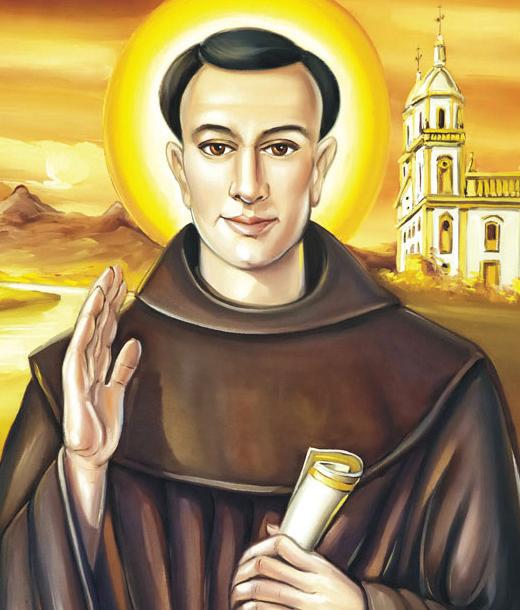
16 October 2010: Vigil Celebrating the Life of Mary MacKillop
Where: Auditorium Conciliazione, Rome 2 sessions - 2.30pm and 6.30pm
17 October 2010: Canonisation of Blessed Mary MacKillop
At 9.30am there will be the reading of a brief biography of each of the six blesseds to tbe canonised. The Mass of Canonisation will begin at 10am.
Where: St Peter’s Basilica, Rome
events of Mary MacKillop’s life and what led to her Canonisation, unveiling the fascinating process of how one becomes a candidate for Canonisation and the extraordinary path to becoming a Saint.
WHEN: from Thursday, 14 October
WHERE: www.therecord.com.au
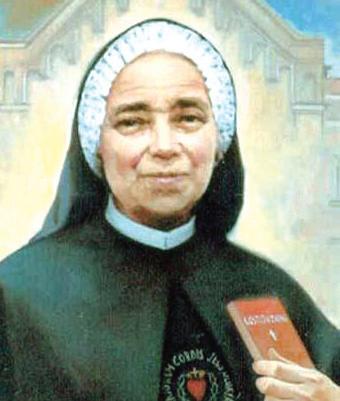


18 October 2010: Mass of Thanksgiving Sydney Cardinal George Pell will preside at the Mass of Thanksgiving at 10am.
Where: The Papal Basilica of St Paul’s Outside the Walls, Rome. The Canonisation of the Six Blesseds - the details:
There are three parts to the ceremony: At 930am, there will be a reading of a brief biography of each Blessed being canonised followed by the preparation for the
Page 10 6 October 2010, The Record VISTA
Communion of Saints: Although Australia’s eyes will be fixed on the 17 October Canonisation ceremony in Rome because of Mary MacK They are, left to right, Battista da Varano, a 15th century Poor Clare, Stanislaw Soltys, Giulia Salzano, foundress of a congregation of Cate foundress of the Daughters of Jesus. Mary MacKillop is second from right.
Six blesseds will join the canon of saints in Rome on
Left: Sr Anne Derwin RSJ, Congregational Lea Sacred Heart, which Blessed Mary MacKillop c in 1866 with Fr Julian Tenison Woods, displa Mint. The coin was launched at the Josephite September.







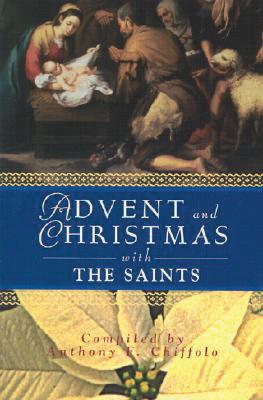

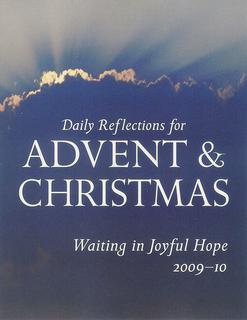

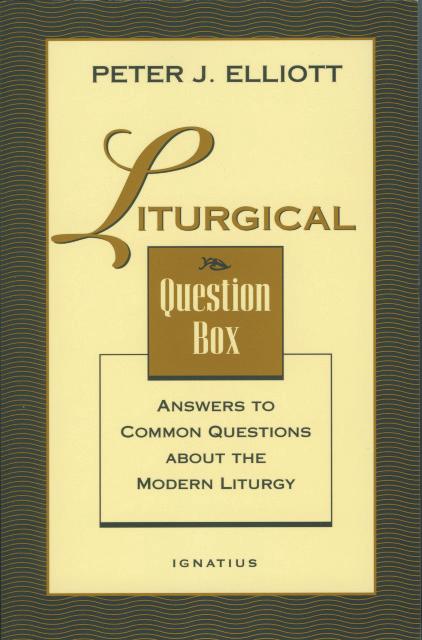












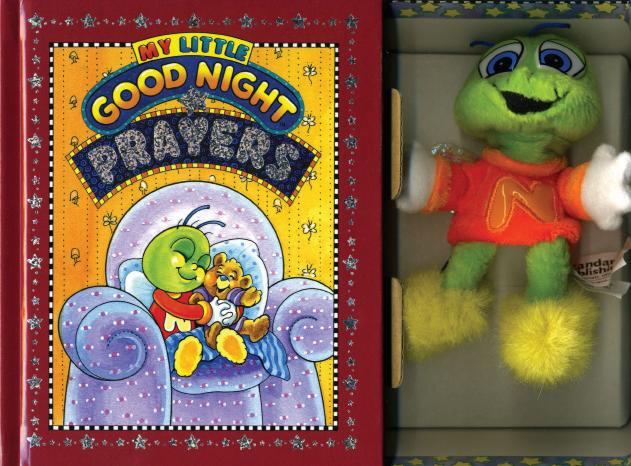














Christmas Cards Advent and Christmas Preparation Daily Reflections for Advent & Christmas $4.95 + P/H Christmas card with bonus CD of four Christmas songs $7.95 + P/H Advent and Christmas Wisdom from GK Chesterton $15.95 + P/H Advent and Christmas Wisdom with Fulton J Sheen $15.95 + P/H Advent and Christmas Wisdom from Pope John Paul II $15.95 + P/H New Companion to Advent & Christmastide $6.95 + P/H Advent and Christmas Wisdom from Padre Pio $15.95 + P/H Advent and Christmas with the Saints $15.95 + P/H Gentle Sounds of Christmas CD $29.95 + P/H a teddy prayers Christmas $9.95 + P/H The Voice of a Child CD $34.95 + P/H Gift ideas to keep Christ in Christmas CHRISTMAS CARDS VARIOUS By Reproducta Old Masters Gold embossed Christmas assortment with Scripture. 12 cards of four designs with envelopes. RRP $15.95 +p/h CHRISTMAS GREETINGS Ten cards assorted with envelopes. RRP $5.50 +p/h The Essential Advent and Christmas Handbook $25.95 + P/H Liturgical Question Box By Bishop Peter J Elliott $24.95 + P/H The Coming of Christ CD $27.95 + P/H MY LITTLE GOOD NIGHT PRAYERS BOX SET This offers opportunities for making bedtime a cherished time with themes such as God’s presence, forgiveness, love and kindnessincluding time in God’s Word, fun songs, soothing rhymes, parentchild activities, prayers and praises. RRP $24.95 NOW $9.95 ONLY AVAILABLE WHILE STOCKS LAST! The Record Bookshop The Record 2010 Christmas, Advent preparation, St Mary’s Jarrah products, DVDs and CDs and MORE! Vatican Library JEWELLERY COLLECTION, t-shirts, Resources for Spirituality & Prayer, Saints for the young, Xmas activity books, Elf Help DISCOUNTED! Christmas Music Christmas Books for Kids Every day of Advent and Christmas $7.95 + P/H Trading Hours: Monday to Friday 9am-3pm 21 Victoria Square, Perth WA 6000 email: bookshop@therecord.com.au Tel: (08) 9220 5900 My Catholic Advent and Christmas Activity Book $11.95 + P/H Easy to Make Nativity Scene $16.95 + P/H I can make things for Christmas $14.95 + P/H I can make angel things for Christmas $14.95 + P/H Lion Christmas Favourites $19.95 + P/H
St Mary’s Range
Created from the Jarrah of St Mary’s Cathedral laid down in 1865.
Individually crafted, unique pieces that truly bring yesteryear alive.





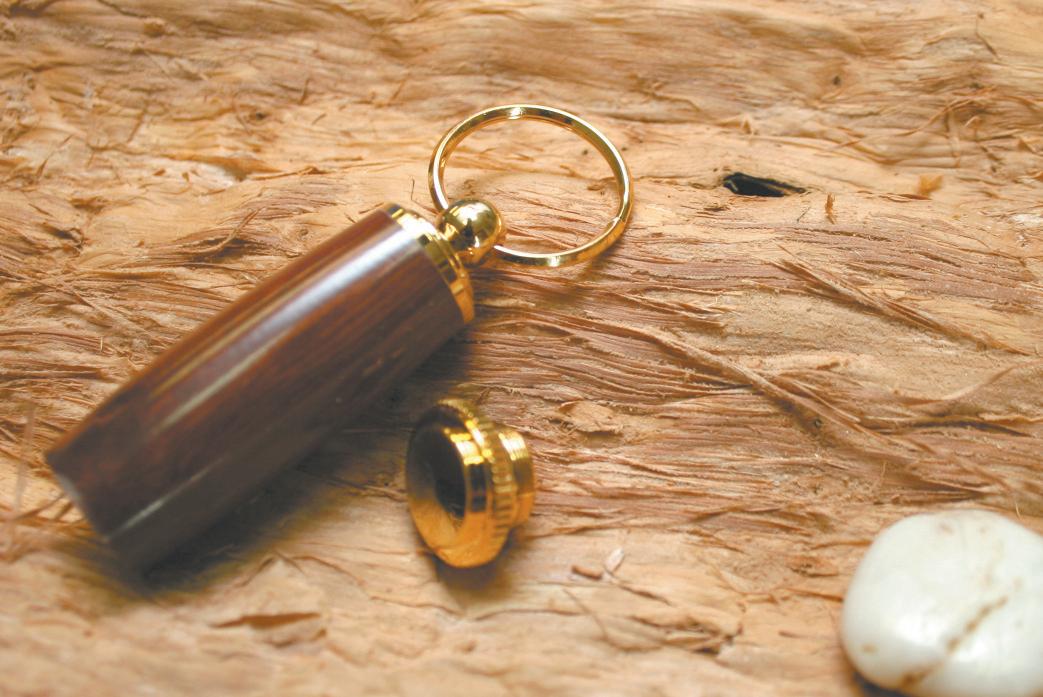






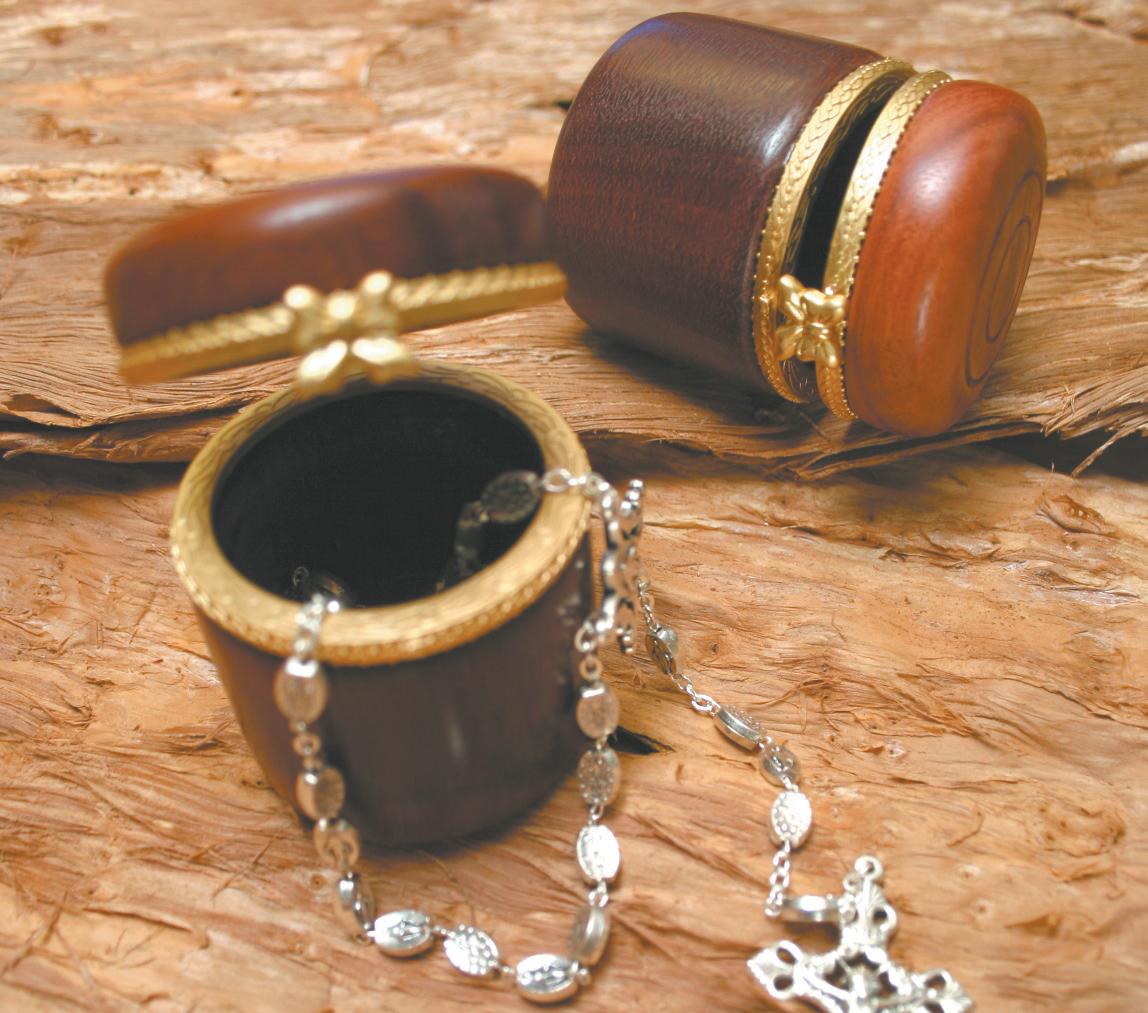

 St Mary’s Range
Business Card Holder $74.95 + P/H
Magnifying Glass $79.95 + P/H
Emperor Fountain Pen $495.00 + P/H
Keyring Pill Box $45.00 + P/H
Euro Range $79.95 + P/H
Executive Pen $74.95 + P/H
Zen Magnetic Pen $109.95 + P/H
Cigar Ballpoint $79.95 + P/H
Rosary Box $94.95 + P/H (Rosary not included)
Statesmen Fountain $435.00 + P/H
Cathedral Pew $1,895.00
Pen Box $27.95 + P/H
Columban Calendar 2011
RRP $7.00 + P/H
St Mary’s Range
Business Card Holder $74.95 + P/H
Magnifying Glass $79.95 + P/H
Emperor Fountain Pen $495.00 + P/H
Keyring Pill Box $45.00 + P/H
Euro Range $79.95 + P/H
Executive Pen $74.95 + P/H
Zen Magnetic Pen $109.95 + P/H
Cigar Ballpoint $79.95 + P/H
Rosary Box $94.95 + P/H (Rosary not included)
Statesmen Fountain $435.00 + P/H
Cathedral Pew $1,895.00
Pen Box $27.95 + P/H
Columban Calendar 2011
RRP $7.00 + P/H


PADRE PIO: NIGHT OF THE PROPHET
DVD Region: Multizone DVD player required - Running Time: 1 hr 30mins
The first full length drama on the incredible life of Padre Pio who had such great spiritual gifts as mystical prayer, bilocation and reading souls and who suffered the five wounds of Christ for 50 years. Dubbed in English
RRP $29.95 + p/h


THE BEST OF LITTLE CHILDREN
DVD Region: All Regions - Running Time: 2hrs 30mins
In this DVD, your children will learn to pray the Rosary, the Divine Mercy, the Angelus, the guardian Angel Prayer, the Memorare and learn about Scripture, the sacraments and the saints.
RRP $21.95 + p/h


DVD Region: All Regions - Length: 20mins
This DVD is an excellent way to prepare your children for their first Holy Communion. They'll see and hear: traditional and original sacred music, how the bread and wine are made for the Eucharist and much more.
RRP $21.95 + p/h

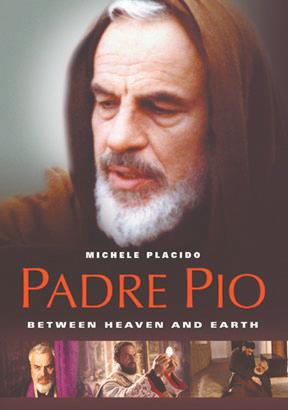

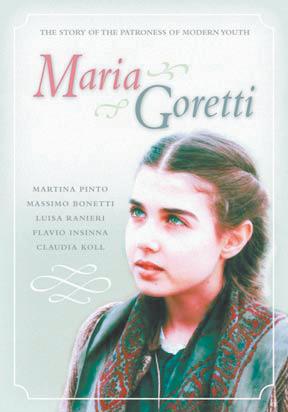

FAUSTINA
Polish filmmaker Jerzy Lukaszewicz directs the film based on the real life of Sister Mary Faustina, born Helena Kowalska in 1905 as the third of ten children. Even as a child, she had experienced visions of Jesus Christ, which would continue throughout her life.
RRP $59.95 + p/h


MARIA GORETTI
DVD Region: Multizone DVD player required - Running Time: 1 hr 45mins
This powerful new feature film tells the dramatic and tragic story of the beloved saint of modern youth who died defending her purity at the hands of a knife-wielding attacker, Alessandro Serenelli.
In Italian with English and Spanish subtitles, or English dubbed track.
RRP $34.95+ p/h






SAINT JOHN BOSCO
DVD Region: Multizone DVD player required - Running Time: 3 hrs 20mins
Flavio Insinna stars as John (Don) Bosco, the great priest and educator of youth from the tough streets of Turin, Italy. Beautifully filmed in Italy, this movie dramatises the many challenges that Don Bosco had to overcome from his childhood through founding his Religious Order, the Salesians, for helping to educate boys.
Languages: Italian with English subtitles. Dubbed in English.
RRP $34.95 + p/h
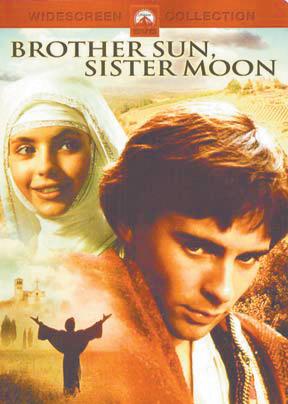



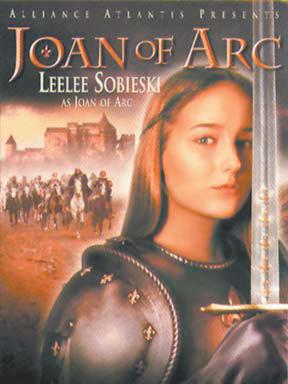

AD
2 DISCSET
DVD Region: All Regions - Running Time: 6hrs
Picking up where the acclaimed Passion of the Christ left off, AD vividly recreates the turbulent years following the death of Christ. The earliest experiences of the Christian Church after Jesus' ascension are powerfully dramatised in this remarkably authentic TV miniseries epic covering the years AD 30-69.
RRP $49.95 + p/h


CLARE AND FRANCIS
DVD Region: Multizone DVD player required - Running Time: 3 hrs 20mins
This outstanding movie is unique among films on St Francis because of the historical accuracy of the story and authentic spirit of joy and piety Francis was known for, as well as the major role played by Clare who is given equal stature with Francis.
RRP $34.95 + p/h


A large range of books, Rosaries, nativities, crucifixes, jewellery, artwork, giftware, statues and cards in store.
21 Victoria Square, Perth WA 6000


SAINT FRANCIS
DVD Region: Multizone DVD player required - Running Time: 3 hrs 25mins
Filmed on location in Assisi and other places where St Francis lived and died, this feature film vividly tells the story of this greatly beloved saint from childhood to death. Languages: Italian, English (Dubbed)
RRP $34.95 + p/h




 THE EUCHARIST FOR LITTLE CHILDREN
THE EUCHARIST FOR LITTLE CHILDREN
DVDS
ANTHONY WARRIOR OF GOD RRP $34.95 + p/h
BROTHER SUN, SISTER MOON RRP $19.95 + p/h
SAINT RITA
RRP $34.95 + p/h
JOAN OF ARC RRP $24.95 + p/h
PADRE PIO:BETWEEN HEAVEN AND EARTH RRP $34.95 + p/h
PADRE PIO: MIRACLE MAN RRP $34.95 + p/h
RED BOOTS FOR CHRISTMAS RRP $9.95 + p/h
THE LIFE OF CHRIST RRP $19.95 + p/h

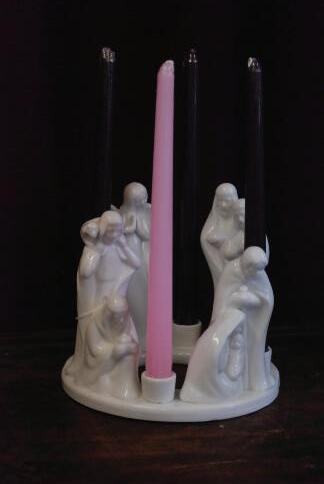




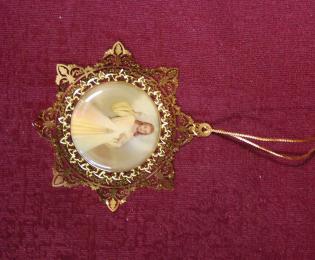
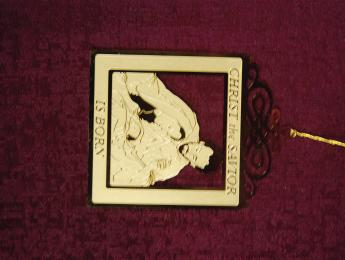
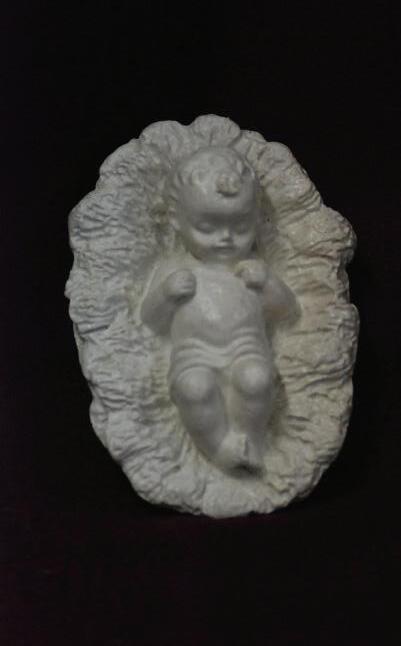

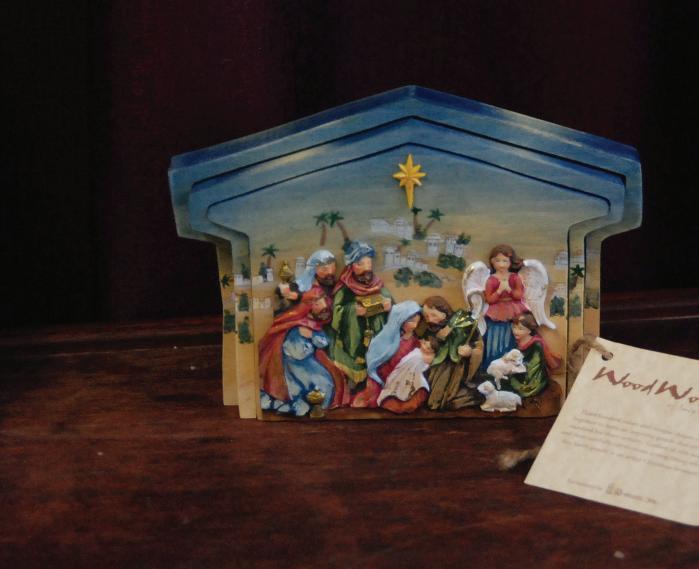
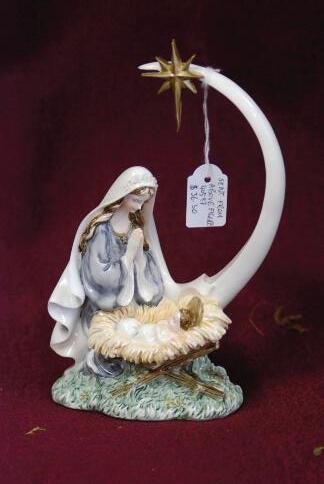

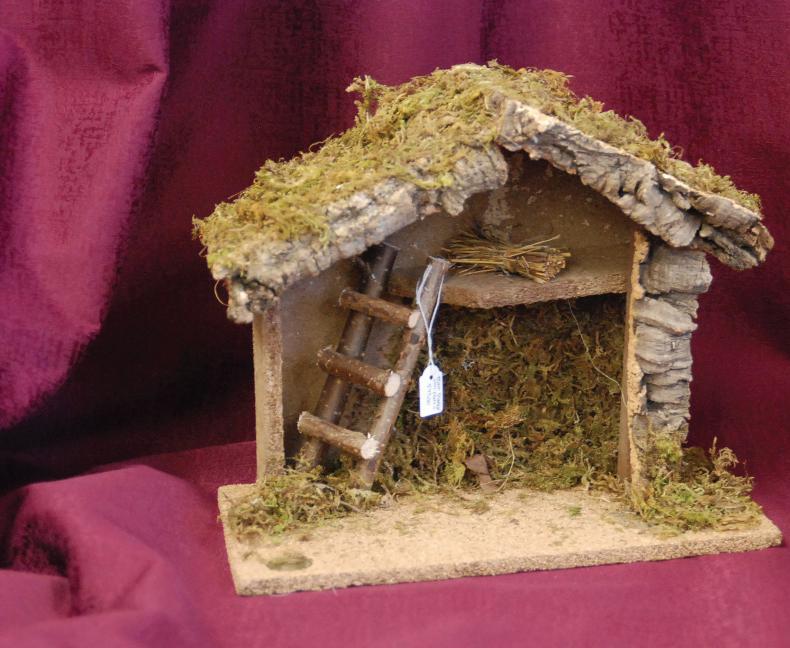
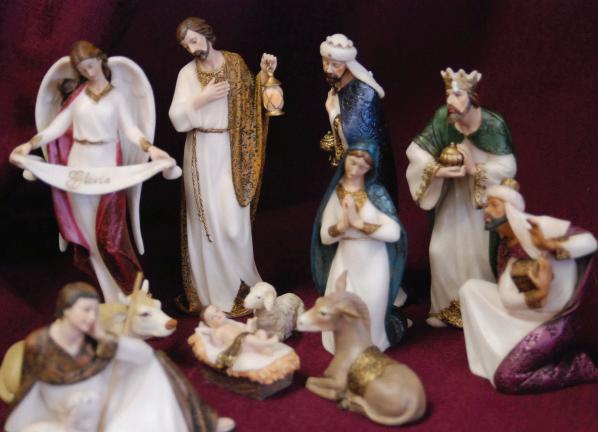

ADVENT BRASS RING RRP $19.95 NATIVITY WREATH WHITE PORCELAIN RRP $88.95 HOLY FAMILY WITH ANGEL FIGURE RRP $77.50 ANGEL FOR GOD SO LOVED THE WORLD FIGURE RRP $130.75
WITH
PLAQUE
WOODLAND HOLY FAMILY WITH ANGEL FIGURE RRP $70.95 BABY JESUS MADE FROM VOLCANIC ASH FROM THE 1991 ERUPTION OF MT PINATUBO, PHILLIPINES RRP $21.95 CHRISTMAS ORNAMENT BRASS DIVINE MERCY RRP $5.95 CHRISTMAS ORNAMENT BRASS CHRIST THE SAVIOUR RRP $2.95 WOODWORKS NATIVITY 3 TIER CRO SENT FROM ABOVE FIGURE RRP $36.30 PEACE ON EARTH FIGUR R FONT STABLE WIT RR DOMASK NATIVITY 11 PIECE SET 18CM RESIN AND PAINTED RRP $267.90 Christmas Candles and Ornaments Christmas Nativity Set CHRISTMAS ORNAMENT BRASS JOY TO THE WORLD RRP $2.95 Limited Stock on all Christmas Items 50% off on
ANGEL
BABY JESUS WALL
RRP $59.95


all Items



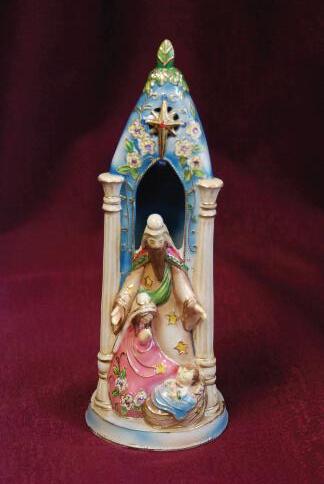

Christmas Advent Books




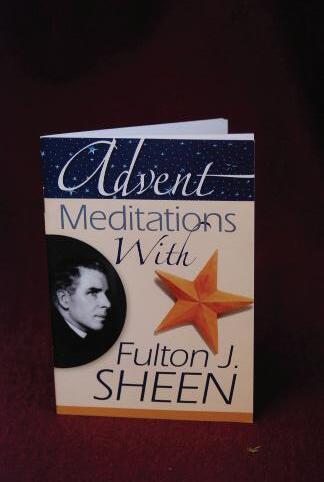






 OSS PLAQUE RRP $49.95
SHEEP FIVE PIECE SET RRP $48.50
RE LARGE RRP $43.55
TH FAMILY RP $169.40
HOLY FAMILY FLIGHT TO EGYPT RRP $54.95
THREE KINGS SET RRP $108.90
SILENT NIGHT RRP $73.80
ADVENT MEDITATIONS WITH FULTON J SHEEN $2.95 + P/H
ADVENT MEDITATIONS WITH PADRE PIO $2.95 + P/H
ADVENT BEGINS AT HOME $6.95 + P/H
DAILY REFLECTIONS FOR ADVENT & CHRISTMAS $4.95 + P/H
THE CHRISTMAS MIRACLE $19.95 + P/H
NEW COMPANION TO ADVENT & CHRISTMAS $6.95 + P/H
ADVENT ARTS AND CHRISTMAS CRAFTS $22.95 + P/H
THE LION BOOK OF CHRISTMAS CAROLS $15.95 + P/H
THE NATIVITY STORY $17.95 + P/H
EAST NATIVITY SCENE STICKER PICTURE PUZZLE $2.95 + P/H
OSS PLAQUE RRP $49.95
SHEEP FIVE PIECE SET RRP $48.50
RE LARGE RRP $43.55
TH FAMILY RP $169.40
HOLY FAMILY FLIGHT TO EGYPT RRP $54.95
THREE KINGS SET RRP $108.90
SILENT NIGHT RRP $73.80
ADVENT MEDITATIONS WITH FULTON J SHEEN $2.95 + P/H
ADVENT MEDITATIONS WITH PADRE PIO $2.95 + P/H
ADVENT BEGINS AT HOME $6.95 + P/H
DAILY REFLECTIONS FOR ADVENT & CHRISTMAS $4.95 + P/H
THE CHRISTMAS MIRACLE $19.95 + P/H
NEW COMPANION TO ADVENT & CHRISTMAS $6.95 + P/H
ADVENT ARTS AND CHRISTMAS CRAFTS $22.95 + P/H
THE LION BOOK OF CHRISTMAS CAROLS $15.95 + P/H
THE NATIVITY STORY $17.95 + P/H
EAST NATIVITY SCENE STICKER PICTURE PUZZLE $2.95 + P/H
n
LITTLE ADVENT CALENDAR $2.95 + P/H

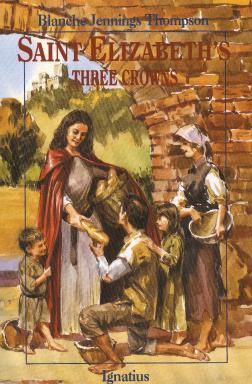

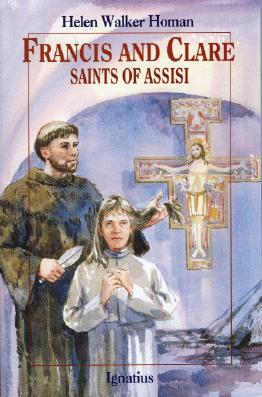
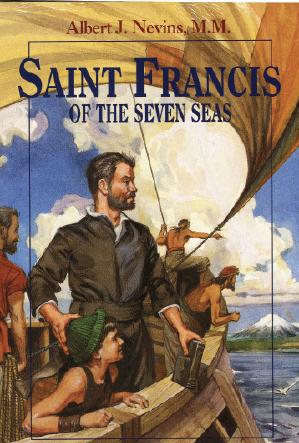





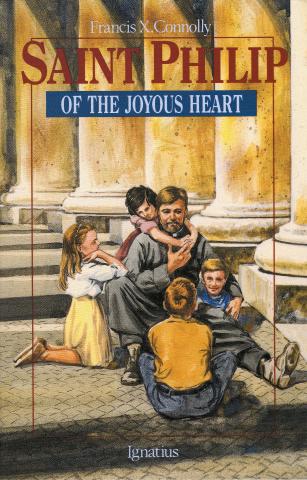


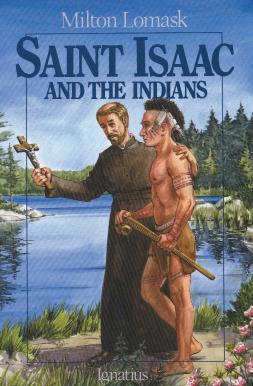

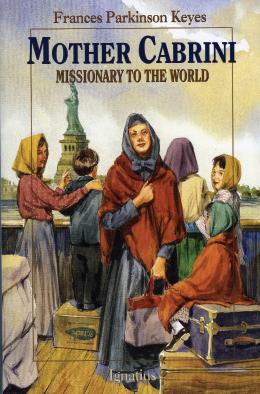



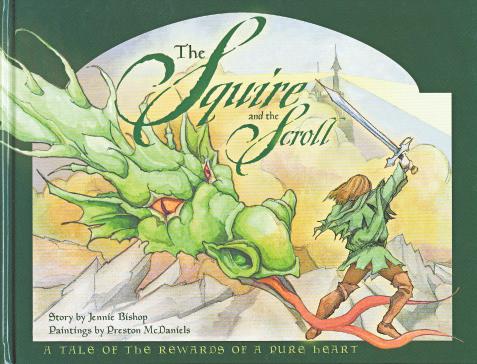
COMMUNION OF THE SAINTS Children’s Books ALL BOOKS $19.95+postage
Nativity Stained Glass Colouring Book $11.95 + P/H
Christmas Activity Books
The very first Christmas - Sticker activity book $7.95 + P/H
I can make Starry things for Christmas $14.95 + P/H
The Princess and the Kiss $18.95 + P/H
The Squire and the Scroll $18.95 + P/H
Great Women of the Bible $2.50 + P/H
Jesus Christmas Party $19.95 + P/H
The First Christmas $10.95 + P/H
I DON’T WANT TO GO TO CHURCH!
Turning the Struggle into a Celebration
By Br Mark Falkenhain, OSB, illustrated by RW Alley
It’s normal and natural for children to go through phases when they don’t want to go to Church. This book helps make the experience more meaningful, and even something to look forward to.
LEARNING TO BE A GOOD FRIEND
A Guidebook for Kids
By Christine A Adams, illustrated by RW Alley
This book shows children how to make friends, choose friends wisely and how to maintain these friendships. It illustrates the pitfalls of peer pressure, and what to do when you can’t find a friend or have lost your best friend.
MAD ISN’T BAD
A Child’s Book About Anger
By Michaelene Mundy, illustrated by RW Alley
It is OK to feel angry once in a while, but what should we do with our anger. Through understanding what anger feels like and what triggers it, we can learn healthy ways to handle it.
FORGIVING Is Smart for Your Heart
By Carol Ann Morrow, illustrated by RW Alley
This book teaches children that they have a choice: they can let hurt and anger hold their heart hostage, or they can let go and experience the freeing power of forgiveness.
GOD IS MY FRIEND
A Kid’s Guide to God
By Lisa O Engelhardt, illustrated by RW Alley
Through charming images and illustrations, this book helps young believers come to know God as an everyday, everywhere, anytime kind of Best Friend.
MY BODY IS SPECIAL
A Family Book About Sexual Abuse
By Cynthia Geisen, illustrated by RW Alley
This will help parents and carers to equip children with a clear sense of their personal boundaries as well as a plan of action in the event that a boundary is violated.
OTHER TITLES AVAILABLE:
ONE CARING KID
A Book About YOU – and What Your Kindness Can Do! PLAYING FAIR, HAVING FUN
A Kid’s Guide to Sports and Games



The following books are part of a popular series designed to teach and guide children in language they can understand. They provide thought-provoking insights into life’s journey, accompanied by colourful and meaningful illustrations.
SAYING GOODBYE, SAYING HELLO…
When Your family is Moving SHYNESS ISN’T A MINUS
How to Turn Bashfulness Into a Plus STANDING UP TO PEER PRESSURE
A Guide to Being True to You WHEN BAD THINGS HAPPEN
A Guide to Help Kids Cope RESPECT
Dare to Care, Share and Be Fair!
SAD ISN’T BAD
A Good Grief Guidebook for Kids Dealing with Loss PLAYING IT SAFE
A Kid’s Guide to Staying Healthy, Happy and Secure WHEN SOMEONE YOU LOVE HAS CANCER
A Guide to Help Kids Cope
A NEW BABY IS COMING!
A Guide for a Big brother or Sister BE THE STAR THAT YOU ARE
A Book for Kids Who Feel Different BYE – BYE BULLY!
A Kid’s Guide for Dealing With Bullies KNOW HOW TO SAY NO TO DRUGS AND ALCOHOL
A Kid’s Guide
GOD MADE US ONE BY ONE
How to See Prejudice and Celebrate Differences
KEEPING FAMILY FIRST
A Kid’s Guide
MAKING A BORING DAY BETTER
A Kid’s Guide to Battling the Blahs
LEARNING ABOUT VIRTUES
A Guide to Making Good Choices
HELP IS HERE FOR FACING FEAR!
KEEPING SCHOOL COOL!
A Kid’s Guide to Handling School Problems
MAKING CHRISTMAS COUNT!
A Kid’s Guide to Keeping the Season Sacred
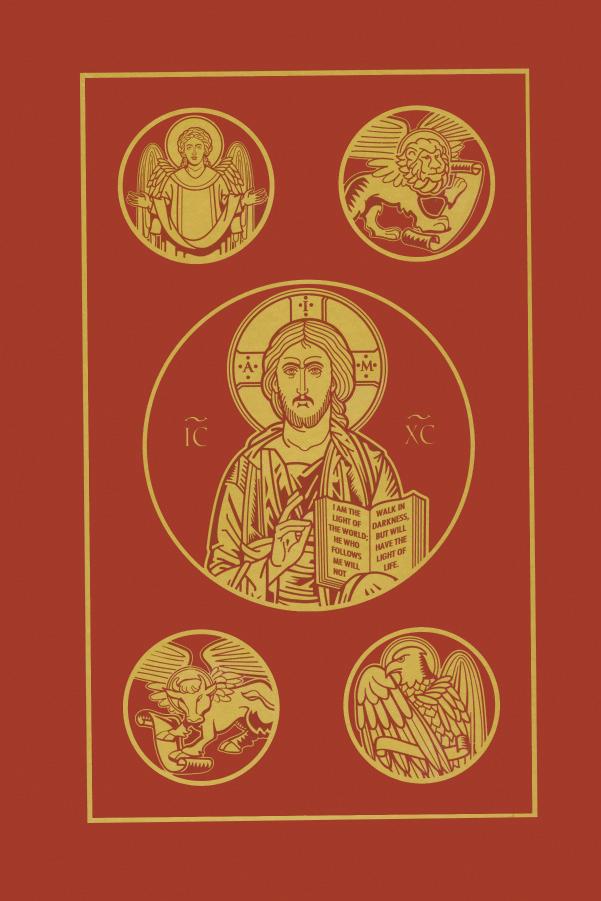



Each book costs $14.95 + P/H
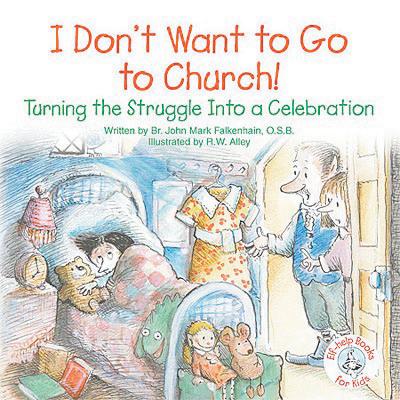




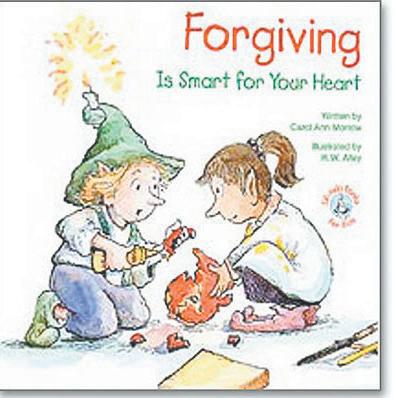



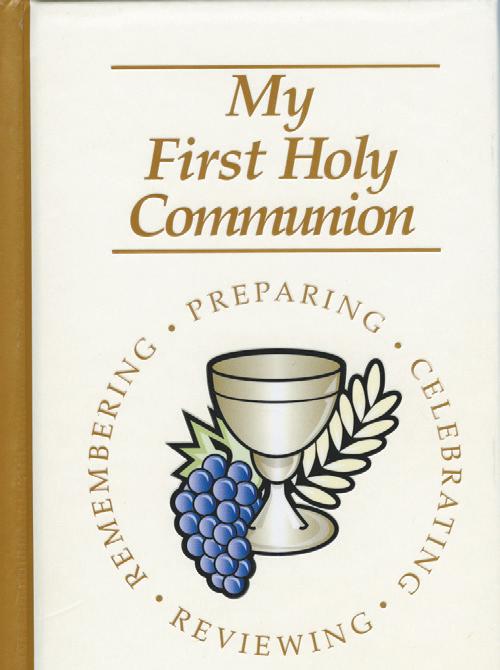




Elf Help Books DISCOUNT!
buy 5 or more, $12.95 each
If you
CTS NEW CATHOLIC BIBLE STANDARD EDITION By Catholic Truth Society RRP $59.95+ P/H IGNATIUS BIBLE
2nd Edition By Ignatius Press RRP $39.95 MY FIRST HOLY COMMUNION Remembering, Preparing, Celebrating, Reviewing By Frances C Heerey RRP $14.95 + P/H CTSNEWCATHOLICBIBLE HOLY BIBLE Catholic Family Edition Black RSV Padded Cover RRP $135.95 ST PAUL EVERY DAY BIBLE By Rhona Davies RRP $19.95+ P/H NEW TESTAMENT MIRACLES: ART REVELATIONS By Sean Connolly RRP $38.95 NOW $19.95 ONLY AVAILABLE WHILE STOCKS LAST!
RSV
Jesus of Nazareth $24.95 + P/H
Building with Conviction
Available now from The Record
William
Wardell:
Building with Conviction
By AG Evans
Now Available
ISBN 9781921421433 (paperback)
Paperback, 314 pages
Over 60 Black and White Photos
Paperback $39.95 + postage/handling
Hardback $49.95 + postage/handling
Born into lowly circumstances in London’s East End in 1823, WILLIAM WILKINSON WARDELL became one of Australia’s greatest architects whose crowning works are his two Cathedrals, St Mary’s in Sydney and St Patrick’s in Melbourne.
As well as being a leading exponent of Gothic Revival architecture of the 19th century, he served for a period as Chief Architect in the Victorian Public Works Department where he stamped his character and his high standards on many of Melbourne’s best-loved public buildings including his own design, Government House. Wardell was a contemporary and devoted admirer of Pugin.
Both were converts to the Catholic Faith and both shared a deep religious conviction in the superiority of Gothic architecture for Church building.
As a young architect, he enjoyed the friendship and intimacy of Charles Dickens and other prominent writers, artists, and actors, but he feared for his health in 1858 due to the wretched climatic conditions that claimed the lives of thousands of Londoners at that time.
To the sorrow of his friends, Wardell chose to sail with his family for Melbourne, lured by the climate and the urgent need for new churches for the burgeoning population. During his early years in Australia, Wardell suffered sectarian animosity and jealousy among members of his profession. Forced unfairly to leave Victoria in 1878, he was welcomed in Sydney where he was honoured and revered as a leader of his profession.
At his death aged 76, a newspaper stated: ‘He closed his life of noble labours, a life crowded with artistic triumphs in a manner in keeping with the modest gentleness of his whole career.’
In this first major biography of Wardell, Evans reveals for the first time his early life and influences at home in a workhouse, his apprenticeship at sea, and his work in England and Scotland where he was responsible for over twenty much admired churches, schools, and private houses.
His architectural legacy in Australia is rich and varied but it is for his two monumental Cathedrals that he is best remembered. He lavished much of his time, his love and his exacting standards on each of them simultaneously so that now they are emblematic of their cities and judged by architectural historians as among the finest examples of the Gothic style anywhere in the world.
The Conscious Stone: “This is a book which stirs the imagination and emotions. It repays more than one reading.”
ELIZABETH JOLLEY
Fanatic Heart: “Writing with real literary flair and lively authorial imagination, [Evans] has produced the best biography we are ever likely to have.’
NEW ENGLAND QUARTERLY
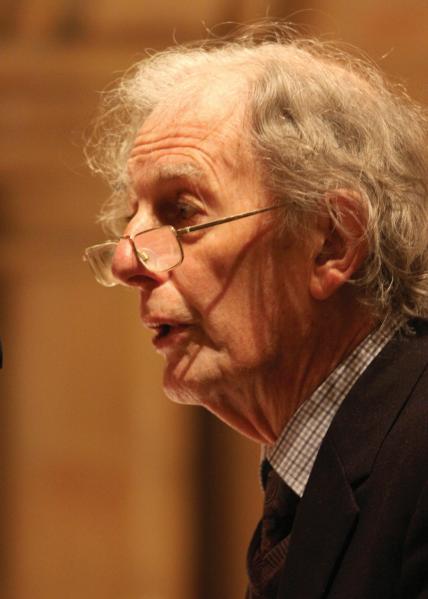
AG (Tony) EVANS was a producer with the ABC for many years, working as a presenter, reporter/writer and producer for television and radio. In 1989, he left the ABC to concentrate on freelance writing. His first published book, The Conscious Stone, a biography of the priestarchitect, John Cyril Hawes, won the Western Australian Premier’s Literary Award for non-fiction in 1985. Later books included Fanatic Heart, the biography of John Boyle O’Reilly, short-listed for the National Biography Prize; and CY O’Connor, His Life and Legacy, published in 2001. Evans lives in Western Australia.

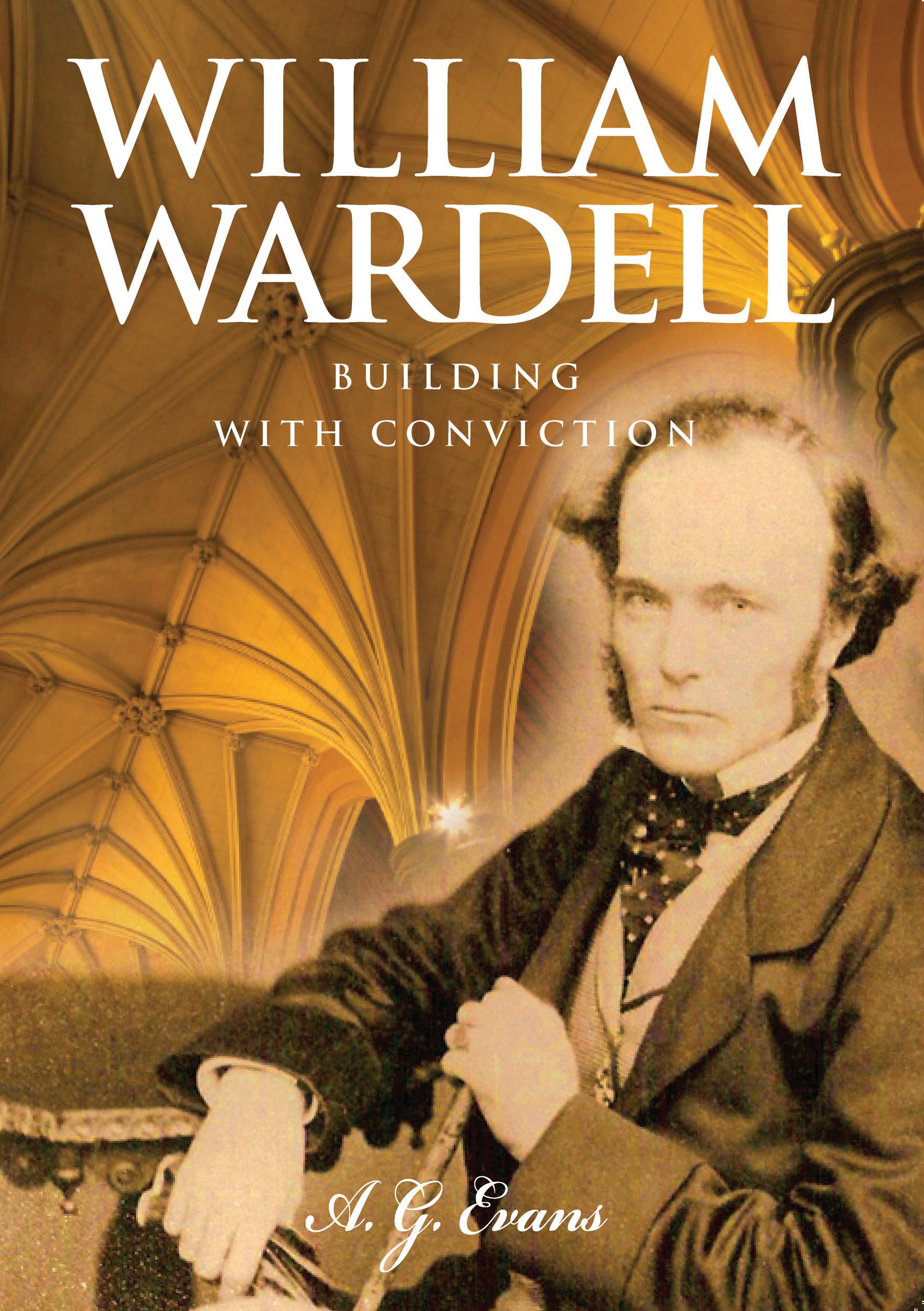


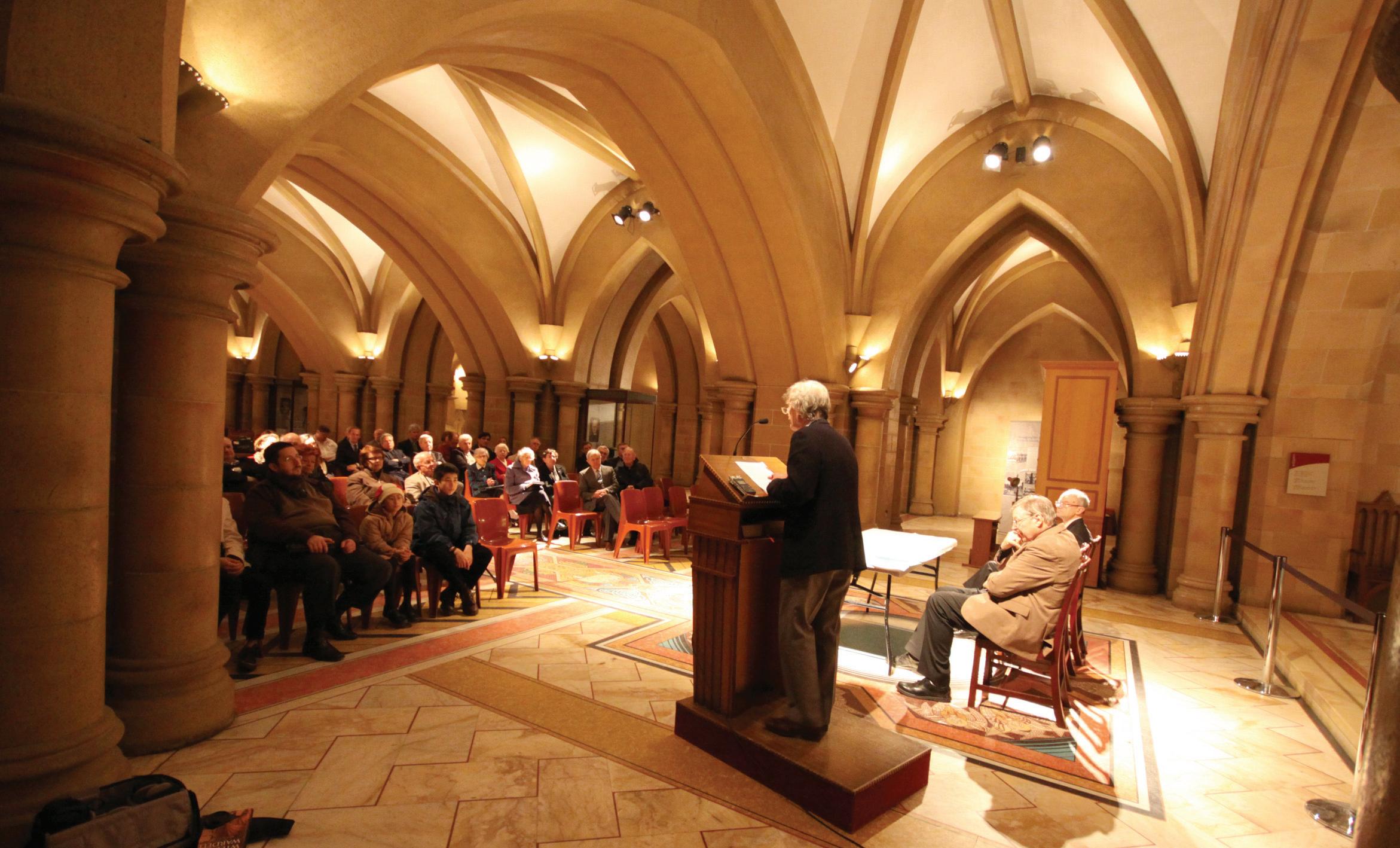

CHRISTMAS IDEA
Phone Bibiana or Anne on 9220 5900
With Cardinal George Pell of Sydney sitting beside him, author Tony Evans, a contributor to The Record, speaks at the launch in the crypt of St Mary’s Cathedral, Sydney, of his latest biography, the story of the life and architecture of William Wardell.
Mary Tim’s tips offer visitors variety in eternal city
aint, from films to or to the Vatican, Tim
immortalised on a gold and silver brate her 17 October Canonisation VI.
congregational leader of the Sisters Heart which Blessed MacKillop co1866, unveiled the tribute coins at n 30 September.
silver and 1/10oz of 99.99 per cent ustralian legal tender. g currency, legal tender is the of the purity and weight of the he Record Blessed Mary and the inscriptions aint, the 2010 year date and the ‘P’ d them to celebrate her 17 October presented in a gift box accompanticity.
ns will be issued by the Perth Mint, oins “further recognises the year in ”, the Perth Mint spokeperson told being faced with resistance, Mary eryone had the right to be accepted, of their position in society, level of arbuz said in a 30 September statecoin tributes are befitting of this of the compassion and generosity
Silver Coin will retail for n can be obtained for $275.
ordered from The Perth Mint Shop Freecall 1800 098 817, or via the m.au and from Australia Post.
Passport information and informal tips for those visiting Rome from Tim Fischer, Australian Ambassador to the Holy See
Hundreds of Australian passports are stolen or lost in Italy each year, particularly around Rome Termini Station; therefore, exercise sensible caution at all times with personal security.
The Australian Embassy to Italy, at Via Antonio Bosio 5 - 00161 Rome, handles all consular matters and the switchboard is +39 06 852 721.
Blessed Mary MacKillop frequently attended St Ignatius Church in Piazza Sant’Ignazio just off the Via Del Corso, broadly between the Trevi and the Pantheon, in 1873 and 1874. This church has an unusual dome when viewed from inside and looking up. It is extraordinary and you need to look at it closely, particularly from the circular tile in the centre aisle to work it out.
Bus No 64 operates from Termini to St Peter’s Square and queues are a lot shorter earlier in the morning around 7.30 for entry to St Peter’s Basilica (free of charge) when it is open to the public. Tickets are required for the lift and to climb to the top of St Peter’s Dome and for the Vatican Museum, which is the only way to gain entry to the Sistine Chapel. Go to the Vatican website for ways to book a time: www.vatican.va.
There are three big Basilicas in Rome, all near metro stations, namely Maria Maggiore, St Paul’s outside the Walls and St John Lateran. There is also the Great Synagogue of Rome, opened most days with English tours on the hour, located alongside the Tiber. It is a unique building, which was not bulldozed by the occupying Nazis in WWII, well worth a visit.
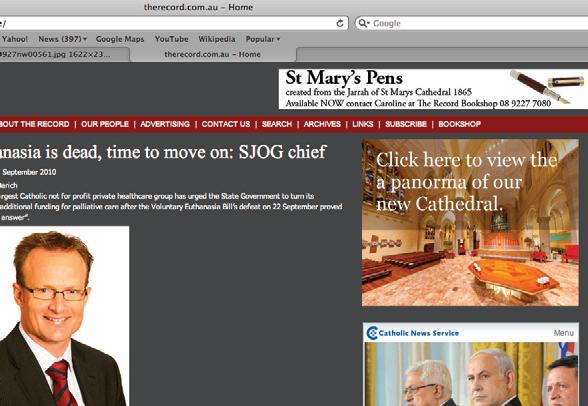
Next to St John Lateran Basilica, there is the Lateran museum, entrance through the large double door to the right of the old green copper Roman Senate door. Open Monday to Saturday, tours 9, 10 and 11am and 12 noon (5 euro). For a snapshot of precious Vatican artefacts, a range of vestments and military uniforms from over 500
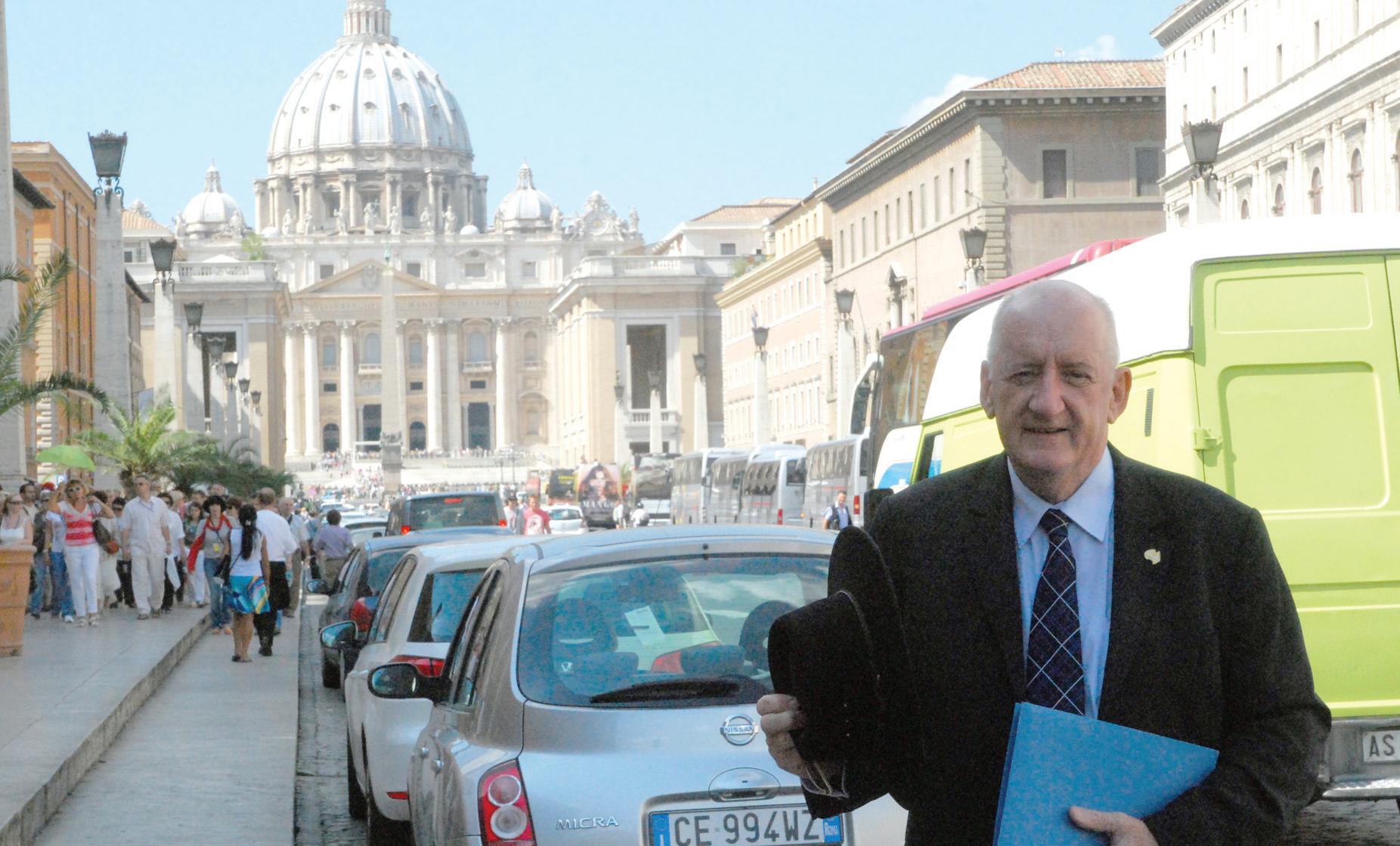
years, with muskets and swords to match, this is it. Bonus is one of the largest rooms in Rome with extraordinary ceiling, the Lateran Treaty Room, where Mussolini and the Papal Secretary of State signed the reduction of the Papal States, from 44 thousand square kilometres or thereabouts (Bologna to Rome) to just 44 hectares.
At 10am daily, or thereabouts, an electric train departs from Termini for Castel Gandolfo, arriving around 10.40. Enjoy the magnificent views across Crater Lake (you can walk around it in three hours), or walk uphill to the Pope’s Summer Palace and the Piazza. Nearby there is the pink coloured Pagnanelli Restaurant with WA connections. So spare your busy hosts and take yourself away for the day on this easy to navigate excursion.
The Quirinale, namely the Palace of the President of Italy, which includes the lavish original Throne Room of previous Popes, can be accessed most Sunday mornings for about 5 euro and the state rooms and chapel are worth seeing. It pays to get there around 08.30 ahead of the big queues and entry closes off around 12 noon.
If visitors need help they can contact the Australian Embassy to the Holy SeeCorso Vittorio Emmanuele II, 349 - 00186 ROME Tel: +39 06 686 261.
Ambassador tweets and prepares for thousands
BY : BRIDGET SPINKS
The Department of Foreign Affairs and Trade expects more than 8,000 Australians will attend the Canonisation of Bl Mary of the Cross MacKillop in St Peter’s Square on 17 October.
While additional consular services and resources are being arranged, Australia’s Ambassador to the Holy See, Tim Fischer, urged travellers to take care with their valuables.
Four hundred Australian replacement passports were issued last year, of which 200 were stolen in Rome, Mr Fischer told The Record
“There will be some loss of passports and the like and we stand ready to provide as much help as we can,” he said.
On 15 October, he will host a morning tea for 130 visiting Sisters of St Joseph on the banks of the Tiber River at the UISG HQ.
Since
10 September, Tim Fischer has been sending daily Tweets in the lead up to the
October: who are they, and how will it happen?

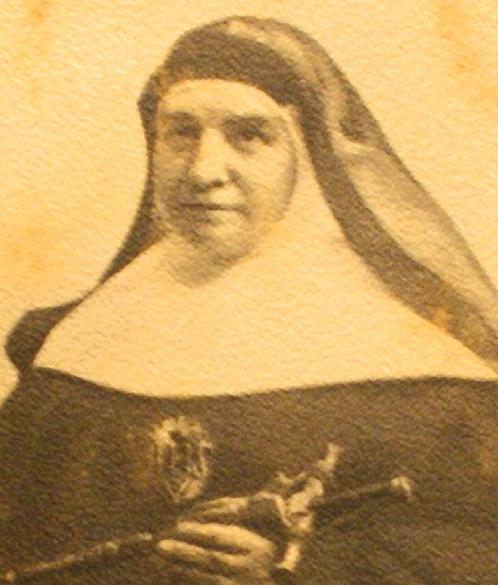
Church asks your Holiness that these blessed ones be written in the Book of Saints and thus be invoked as such by all Christians”. The Prefect will then present a brief biography of those to be canonised.
Prayer and Litany of the Saints will follow with the concluding prayer to the Litany.
Then the Holy Father will pronounce the offical formula of canonisation.
All respond with the sung AMEN.
The relics of the Saints are then placed near the altar.
The choir/cantor will sing alleluia three times.
The assembly repeats the above alleluia three times.
The choir/cantor will then sing a brief acclamation.
The Prefect then thanks the Holy Father and asks that arrangements be made that the Apostolic Letter be written regarding the Canonisation.
Holy Father responds with, “May this be so!”
Canonisation. To keep up with the buzz and for travel advice, follow Tim Fischer at twitter. com/MacKillop2010AU.
Fr Federico Lombardi, press office director for the Holy See, has been overwhelmed by Australian media interest in the Canonisation of Bl Mary MacKillop.
“This is something that will be a very exceptional situation of communication between Rome and Australia,” Fr Lombardi told The Record
“There is a big interest in such an occasion,” he said, adding that there was “a lot of media” coming from Australia.
“They are asking me already for interviews on the day before for special programmes,” he said.
Fr Lombardi said there is also a lot of media coming from Canada ahead of the canonisation of Bl André Bessette, a professed Religious brother of the Congregation of the Holy Cross on 17 October.
ceremony. This will feature short readings or prayers written by the Blessed. At this point, there will be a prayer or hymn (chosen to fit the biography which has been submitted by each Postulator).
At 10am, the Holy Father will celebrate Mass for the Rite of Canonisation and the Pope will begin with a greeting.The Prefect of the Congregation for the Causes of Saints will accompany the Postulators to the Holy Father and will request the Holy Father proceed with the Canonisation of the Blesseds using the formula: “Most blessed Father, the holy Mother
The Prefect and the Postulators exchange a sign of peace with Pope Benedict XVI.
The Mass will continue as normal with the Gloria, the opening Prayer, the Readings, etc.
NB: The formal aspects of the Canonisation ceremony happen prior to the Gloria.
In Australia, festivals are set to take place at UNDA Sydney & Fremantle:
The Sydney campus of the University of Notre Dame
Australia will host a WYD-style festival in anticipation of Mary of the Cross’ Canonisation on 12 October from 10am to 8pm.
The day will include a Courtyard Festival of Life with Live Music and Bands, a Church display of ‘Mary’s Story’ with banners featuring the life of Mary MacKillop, as well as a Catholic Culture Expo. Talks are scheduled for 11am and 1.30pm to shed light on why saints are important and discuss the life of Bl Mary of the Cross MacKillop. Adoration will be available all day including a Holy Hour of Power at 3.30 and MacKillop Festival Mass at 4.30pm. The evening will be capped off with Twilight dinner and drinks.
The Fremantle Campus of the University of Notre Dame will come alive on the day of the canonisation on 17 October from 1-7pm. Remember, when it is 1pm in Australia, it is 7am in Rome, so you will be able to see how St Peter’s Basilica and square will fill with up to 50,000 international pilgrims in Rome for the event and watch the canonisation take place.
The campus will come alive with the story of Mary MacKillop’s life, a variety of street stalls, music, games and the opportunity to watch the Canonisation taking place in Rome, streamed ‘live’ into our lecture theatres and halls on the day of her Canonisation in Rome. Perth Archbishop Barry Hickey has declared the Festival at Fremantle UNDA as the official event for Perth for the afternoon.
Page 11
VISTA 6 October 2010, The Record
Killop, five other individuals will be canonised in the same ceremony. chists, André Bessete, a Canadian and, at far right, Candida Barriola, PHOTOS: CNS
Tim Fischer, Australia’s ambassador to the Holy See, in front of St Peter’s Basilica at the Vatican on 13 September.
n 17
PHOTO: BRIDGET SPINKS
ader of the Sisters of St Joseph of the co-founded in Penola, South Australia ays the new coin produced by Perth es’ North Sydney headquarters on 30 PHOTO: COURTESY OF PERTH MINT
Catholic press must foster intellectual engagement with faith, not parish tea parties

Vatican meeting looks at mission of Catholic press
BY CINDY WOODEN Catholic News Service
VATICAN CITY - Budget crunches, the availability of free information from the Internet and suspicion about the Catholic Church in the wake of the clerical sex abuse crisis have all combined to present a serious challenge to the future of the Catholic press, said speakers at a Vatican conference.
But the importance of information in Catholics’ daily lives and the need for the Church to communicate and to help people grow in responsibility and holiness also combine to encourage the Catholic press to find ways to stay afloat, they said.
The “difficult and painful” cases of abuse must lead “the entire believing community to a greater commitment to following the Lord and placing itself at the service of humanity with an even greater witness of life capable of demonstrating what we bear in our hearts,” said Archbishop Claudio Maria Celli, president of the Pontifical Council for Social Communications.
Archbishop Celli’s office sponsored a 4-7 October Catholic Press Congress to discuss the present and future role and challenges facing Catholic journalism. Representatives from 83 countries gathered at the Vatican for the congress.
The Archbishop told the journalists and communications directors that the Catholic press must have a clear idea of its mission and role within the Church and society, and must look at how it can help people face their worries and desires in a truly Catholic way.
“Of no less importance,” he said, is “the role that the Catholic press has within the Church because it can be a privileged instrument in the not easy task of promoting and
nourishing an intellectual understanding of the faith.”
Greg Erlandson, president of Our Sunday Visitor Publishing in the US, told the conference that the Catholic press faces the financial pressures all newspapers are facing.
But, additionally, he said, the Catholic press suffers because Catholics know less about their faith, there is “a growing distrust of institutions” and, consequently, there is “a resulting decline in Catholic identity.”
At the same time, he wrote in remarks prepared for the meeting, the Internet allows Catholic media to reach different audiences in different ways at a relatively low cost.
Erlandson also said the sex abuse crisis is, or should be, forcing the Church to change the way it communicates.
“Church leaders have become increasingly aware that most of their flock gets its news about its own Church from the secular media and that media is often an unreliable source,” he said. He told the congress he hoped the experience would help Church leaders understand the value of the Catholic press and the fact that if they allow Catholic newspapers to be “transparent and honest, they will gain in credibility over the long haul.”
Amy Mitchell, vice director of the Pew Research Centre’s Project for Excellence in Journalism, presented statistics on the decline in US secular newspaper subscriptions and their plummeting advertising revenues, as well as on the fact that people are increasingly “news grazers,” getting their news and information from an average of two to five media platforms each day.
In the new media environment, she said, “journalism is not a product, but a service” that gives people verified information.
By serving as a credible eyewitness and pulling together information from reliable sources, she said, journalists help people make sense of the news and empower
Catholic media must counter secular press spin

them to act. Even as outlets offering free information mushroom, the Church - like society in general - needs trained journalists able to present accurate news and ask the right questions to help people understand what is going on around them, she told CNS.
Although the world of journalism has changed enormously over the past 20 years, “the principles of journalism haven’t changed.
“The ideas of verification, authentication, of being transparent with your readers or listeners about the information you know, the information you don’t know, about where you’re coming from, the influences you have - all of those remain constant,” she said.
“Covering important events from the perspective of a Catholic point of view still involves solid reporting,” she said, and Pew surveys have shown that people “really do understand the differences” between the various outlets they access for information. They go to different places for analysis and “sense-making,” than for quick takes or entertaining debate, she said.
Michael Pruller, vice director of the Die Presse newspaper company in Austria, was a bit more optimistic about the future of printed news because, he said, “to have something printed in black and white on paper still matters.”
While encouraging the Catholic press to look at new opportunities to create revenue with digital products, he said it would be stupid to kill off a Catholic paper “just because you are afraid it’s dying.”
Although newspapers are making less of a profit than they were 10 years ago, “it’s still easier to make money in print than online,” he said.
Pruller told the journalists one thing they still have going for them is “the irresistible force of curiosity,” which makes people wonder what is in each issue delivered to their home.
“Your job is to make your customers curious about what is in each issue,” he said.
ROME, Italy (CNA/EWTN News) - The role of the Catholic press today might be one of providing a service of “counterinformation,” the director of Italy’s arguably most important Catholic newspaper Avvenire said on 4 October.
Speaking of the global challenges to the Catholic media today, the director of the Italian Bishops’ Avvenire newspaper, Marco Tarquinio, called for news sources to strongly bear witness to the authenticity of Christianity. He addressed the first day of the Catholic Press Congress being hosted by the Pontifical Council for Social Communications.
He was one of four directors from major Catholic publications to address the assembly during a session on global challenges to Catholic media.
Emphasising to participants that “the message is everything,” he said that all too often the truth of Christianity is recounted in the media only when it enters into crisis or participates in some way in the more general “crisis of the times.”
In this context, he noted, it is made to appear that the Christian voice enters the debate already on the defensive, engaging in a fight “destined to inevitably conclude with surrender.”
Tarquinio underscored that this is not the case.
He used the terminology of Benedict XVI, saying that “the destiny of Christian communities, even when they are a minority” is to be “a sign, a sign of contradiction.”
The digital age, he said, calls the Catholic press to be present in a new space with a new language, without leaving the “authenticity” of the message behind.
Turning then to the struggle between information and “counter-information” today, he recalled a list of stories that received greater coverage in
the Catholic media while being practically ignored by other news sources. The three that he detailed were the “illusory security” of the condom as protection against transmitting AIDS, the plague of paedophilia in all of society and the untold persecution of Christians.
Given the way that these stories are routinely neglected by the world media, he posed the question of whether “today, more than ever, with the style and depth that are proper of Catholic mass media, our role and our duty might not be that of serenely and tenaciously being ‘counter-informers’.
“We cannot and we do not want to give in to the logic of the media circus,” he said, adding, “(a)nd we’re freer than anyone else to do it.”
In this light, Tarquinio identified several story lines that the Catholic press must challenge itself to cover. One of these is the need to defend the inviolability of Pope Benedict and to communicate the words of “depth and truth” of his teaching that “the social questions have largely become anthropological question(s),” he said.
Avvenire’s director finished his address by pointing to a final area that Catholic media professionals need to cover. “As journalists and Catholics, but also only as lovers of humanity,” Catholic media personnel should be able to “recount and bear witness to times when business and ‘straw’ are made of the values of life,” he said.
Tarquinio added that they must know how to do so amidst attacks on the role of the family that render social fabric “uncertain,” where “the crucial liberty of believing and educating is under discussion and even negated” and where “the future and the common good are humiliated and threatened.”
Page 12 6 October 2010, The Record THE WORLD
A participant uses an Apple iPad during the Catholic Press Congress at the Vatican on 4 October.
PHOTO: CNS/PAUL HARING
Media professionals from around the world attend the Catholic Press Congress at the Vatican on 4 October.
PHOTO: CNS/PAUL HARING
Religious life at ‘critical juncture’
Next steps proposed to attract new generations to Religious life
BY NANCY FRAZIER O’BRIEN Catholic News Service
WASHINGTON - At what one participant called a “critical juncture in consecrated life,” dozens of Religious and Catholic lay leaders gathered in Chicago recently to hash out the next steps needed to attract young people to Religious life today.
“Together, we are seeking to discover a truth of how we may effectively promote Religious life to a new generation in a new century,” said Holy Cross Brother Paul Bednarczyk, executive director of the National Religious Vocation Conference, as he opened the invitation-only symposium titled “Moving Forward in Hope.”
The gathering, funded by a foundation that wished to remain anonymous, featured a combination of talks and small group discussions designed to result in an action plan for promoting vocations in the United States. Br Bednarczyk said a final report on the symposium and the proposed plans would be presented to the foundation by the end of the year, and made public after a board meeting of the vocation conference in February.
Participants in the symposium included vocations directors, Catholic educators, major superiors, diocesan personnel, parents, young adult and campus ministers, younger Religious, media and communications experts, and Church researchers and statisticians.
The gathering was a follow-up to a study of recent vocations to Religious life conducted by the Centre for Applied Research in the Apostolate for the vocation conference. The study, released in August 2009, found that although the numbers in Religious Orders may be decreasing, new members are passionate about Religious life and Religious communities following more traditional practices have better success attracting younger members today.
Br Bednarczyk said young people today no longer have the opportunity that past generations

had to interact with members of Religious communities. “Just recall the impact that men and women Religious have had in your own life,” he said.
“While they taught you how to multiply numbers and how to diagram a sentence properly, through their example they also taught you how to treat others justly and fairly and to show a special sensitivity to the needs of the poor and less fortunate. Maybe during a time of personal crisis, illness or grief, they taught you the importance of a caring presence.”
But “a smaller and older Religious population has lessened the opportunity for such encounters to occur today, especially with our younger Catholics,” he said. “It is testimony to God’s providence that despite their lack of knowing another Religious personally, today’s men and women, even though they are in smaller numbers, continue to come to the vowed life.”
Citing divisions in the Church on issues ranging from hierarchal leadership to women’s roles
to sexuality and immigration, Br Bednarczyk noted that the study conducted by CARA showed that younger Catholics entering Religious life “are clearly disheartened by this polarisation they see in the Church, in Religious life and in their Religious institutes.”
Those divisions must be acknowledged as part of “the reality to which we attempt to invite women and men to a radical following of the Gospel of Jesus Christ in a life of consecrated chastity, poverty and obedience,” he said.
Other speakers raised similar issues, citing a need to recognise the differing world view of today’s young Catholics in order to discover what might attract them to Religious life.
For them, “Vatican II is someone else’s history,” said Br Sean D Sammon, a former Superior General of the Marist Brothers and former president of the Conference of Major Superiors of Men. “Today, a new generation, many of whose members lack a strong Catholic identity as defined by the practices of the past, is looking at Religious
life and mission through eyes shaped by a world that is foreign to many of us over the age of 50,” he said. “Theirs does not include John F Kennedy or the Cold War. Nor is it a world that has cause to remember Woodstock, the sexual revolution, Dag Hammarskjold, a war in Vietnam, Watergate, the early days of the women’s movement.
“These persons and events may have been a part of your world or mine, but for the emerging generation, they serve as content of the history books that they read.”
He said the greatest differences between the younger and older generations are seen in the “desire to belong to a group whose commitment and fidelity to the Church is unquestioned, the wearing of a Religious habit, the form of community life and style of prayer.”
Br Sammon said a key ingredient in establishing “the necessary lines of communication between this population and our congregations” is the creation of a “culture of vocation promotion,” including the appointment of at least one full-time vocation promoter in each of the congregation’s provinces or districts.
“If General Motors or IBM faced the personnel crisis that we have had on our hands for the last few decades, they would have long ago had their best people in the work of recruiting men and women for a career with their corporations,” he said. “At the same time, each of us must learn to take some responsibility for this work.”
He also suggested taking advantage of “opportunities available to educate as wide a population as possible,” such as with a parish adult education course on Religious life, yesterday and today.
“In so doing, we might consider targeting parents especially,” Brother Sammon said. “They were once one of the strongest allies of those encouraging vocations; they need to be brought into that same position again.” Another crucial factor is visibility, he said, noting that “a number of us from older generations of Religious have, to a large extent, become invisible in the places in which we serve and the communities in which we live.” “If we are truly interested in improving the witness value of our way of life,” he said, “a number of us will need to find some new and more effective ways to be more visible.”
Relationship with God lies in liturgy
VATICAN CITY (CNS)
- Describing the exemplary life of a 13th century German nun, Pope Benedict XVI stressed the importance of liturgy in building a close relationship with God.
The Pope illustrated the virtues of St Matilda of Hackeborn during his 29 September weekly general audience with several thousand pilgrims gathered in St Peter’s Square.
St Matilda was one of several strong and influential women who lived at the convent of Helfta in the Saxony region of the Pope’s native Germany, he said.
St Matilda, a mystic whose lovely voice led her to become the leader of the convent’s choir, progressed in spiritual understanding through the formal prayers of the Church, the Pope said.
“Dear friends, the personal and liturgical prayers, especially the Liturgy of the Hours and holy Mass, are the roots of the spiritual experience of St Matilda of Hackeborn,” Pope Benedict said.
“By letting herself be guided by the sacred Scriptures and nourished by the bread of Holy Communion, she followed a path of intimate union with the Lord,” he said.
Her example can teach contemporary Christians to “intensify our friendship with the Lord, especially through daily prayer and attentive, faithful and active participation in the Mass.”
St Matilda was born in 1241 or 1242 to a noble family whose eldest daughter already served as abbess at the Helfta convent, he said.
Fascinated by her elder sister and the atmosphere of the convent, the young Matilda decided early on that she wanted to follow a life of contemplation and service to God, Pope Benedict said. She soon came became known as an intensely spiritual and intellectual figure who was able to understand and console her spiritual sisters when they were troubled.
US ‘pressured Filipino president’ on birth control

MANILA, Philippines (CNS)
- The head of the Philippine Bishops’ Commission on Family and Life has accused the United States of meddling in Philippine affairs, reported the Asian Church news agency UCA News.
“I’m certain that the US government influenced President Aquino’s abrupt decision to support population control,” Fr Melvin Castro, executive secretary of the Commission, said on 29 September, two days after Aquino announced during his visit to the United States that he may give assistance to Filipino couples needing contraceptives.
“The government might help those who are without means if they want to employ a particular method,” the President said.
Fr Castro, however, said Aquino’s statement was a clear surrender to the dictates of the United States and was unethical. He said it is no secret that foreign countries
such as the United States have tried to pressure the Philippines to implement a more aggressive birth control programme. “This is clearly a form of colonisation of morality. They are imposing their morals on us, disrespecting our own principles,” Fr Castro said. He said if the United States is sincere in helping Filipinos, it should give aid with “no strings attached” and without preconditions. “Assistance should be selfless,” the priest said.
But presidential spokesman Edwin Lacierda said on 28 September that Aquino, a Catholic, has always supported responsible parenthood and informed choice in family planning.
Lacierda told journalists that the President respects that parents should decide the size of their family and said Aquino had made his position clear during the presidential campaign. “It’s more of responsible parenthood,” he said.
Lay Catholic organisations met on 29 September to plan actions to protest against the President’s statement. Among the lay organisations represented were the Knights of Columbus, Couples for ChristFoundation for Family and Life, Couples for Christ and diocesan representatives of the Episcopal Commission on Family and Life.
Eric Manalang, president of Pro-Life Philippines, said the organisations would ask Aquino to disclose details of the US$434 million grant he received from the US-run Millennium Challenge Corporation and to issue a statement clarifying his stand on contraception.
The Philipines’ Bishops’ conference president had said last month that the Church was open to dialogue with the President of the country about his proposal to distribute contraceptives but warned the plan could be considered an “accessory” to abortion.
Page 13 6 October 2010, The Record THE WORLD
Sister Camille Rose poses with resident Maria Ruhland at the Little Sisters of the Poor residence in Washington in this 2009 file photo. A study last year found that although the numbers in US Religious Orders may be decreasing, new members are passionate about Religious life and Religious communities following more traditional practices have better success attracting younger members today.
PHOTO: CNS/NANCY WIECHEC
PHOTO: CNS/ROMEO RANOCO, REUTERS
Members of the Reproductive Health Advocacy Network display condoms to support the passage of the Reproductive Health bill during a protest outside the presidential palace in Manila, Philippines on 1 October. The President of the Philippine Bishops’ conference said the Church was open to dialogue with President Benigno Aquino III about his proposal to distribute contraceptives but said the plan could be considered an “accessory” to abortion.
Religious life at ‘critical juncture’
Next steps proposed to attract new generations to Religious life
BY NANCY FRAZIER O’BRIEN Catholic News Service
WASHINGTON - At what one participant called a “critical juncture in consecrated life,” dozens of Religious and Catholic lay leaders gathered in Chicago recently to hash out the next steps needed to attract young people to Religious life today.
“Together, we are seeking to discover a truth of how we may effectively promote Religious life to a new generation in a new century,” said Holy Cross Brother Paul Bednarczyk, executive director of the National Religious Vocation Conference, as he opened the invitation-only symposium titled “Moving Forward in Hope.”
The gathering, funded by a foundation that wished to remain anonymous, featured a combination of talks and small group discussions designed to result in an action plan for promoting vocations in the United States. Br Bednarczyk said a final report on the symposium and the proposed plans would be presented to the foundation by the end of the year, and made public after a board meeting of the vocation conference in February.
Participants in the symposium included vocations directors, Catholic educators, major superiors, diocesan personnel, parents, young adult and campus ministers, younger Religious, media and communications experts, and Church researchers and statisticians.
The gathering was a follow-up to a study of recent vocations to Religious life conducted by the Centre for Applied Research in the Apostolate for the vocation conference. The study, released in August 2009, found that although the numbers in Religious Orders may be decreasing, new members are passionate about Religious life and Religious communities following more traditional practices have better success attracting younger members today.
Br Bednarczyk said young people today no longer have the opportunity that past generations

had to interact with members of Religious communities. “Just recall the impact that men and women Religious have had in your own life,” he said.
“While they taught you how to multiply numbers and how to diagram a sentence properly, through their example they also taught you how to treat others justly and fairly and to show a special sensitivity to the needs of the poor and less fortunate. Maybe during a time of personal crisis, illness or grief, they taught you the importance of a caring presence.”
But “a smaller and older Religious population has lessened the opportunity for such encounters to occur today, especially with our younger Catholics,” he said. “It is testimony to God’s providence that despite their lack of knowing another Religious personally, today’s men and women, even though they are in smaller numbers, continue to come to the vowed life.”
Citing divisions in the Church on issues ranging from hierarchal leadership to women’s roles
to sexuality and immigration, Br Bednarczyk noted that the study conducted by CARA showed that younger Catholics entering Religious life “are clearly disheartened by this polarisation they see in the Church, in Religious life and in their Religious institutes.”
Those divisions must be acknowledged as part of “the reality to which we attempt to invite women and men to a radical following of the Gospel of Jesus Christ in a life of consecrated chastity, poverty and obedience,” he said.
Other speakers raised similar issues, citing a need to recognise the differing world view of today’s young Catholics in order to discover what might attract them to Religious life.
For them, “Vatican II is someone else’s history,” said Br Sean D Sammon, a former Superior General of the Marist Brothers and former president of the Conference of Major Superiors of Men. “Today, a new generation, many of whose members lack a strong Catholic identity as defined by the practices of the past, is looking at Religious
life and mission through eyes shaped by a world that is foreign to many of us over the age of 50,” he said. “Theirs does not include John F Kennedy or the Cold War. Nor is it a world that has cause to remember Woodstock, the sexual revolution, Dag Hammarskjold, a war in Vietnam, Watergate, the early days of the women’s movement.
“These persons and events may have been a part of your world or mine, but for the emerging generation, they serve as content of the history books that they read.”
He said the greatest differences between the younger and older generations are seen in the “desire to belong to a group whose commitment and fidelity to the Church is unquestioned, the wearing of a Religious habit, the form of community life and style of prayer.”
Br Sammon said a key ingredient in establishing “the necessary lines of communication between this population and our congregations” is the creation of a “culture of vocation promotion,” including the appointment of at least one full-time vocation promoter in each of the congregation’s provinces or districts.
“If General Motors or IBM faced the personnel crisis that we have had on our hands for the last few decades, they would have long ago had their best people in the work of recruiting men and women for a career with their corporations,” he said. “At the same time, each of us must learn to take some responsibility for this work.”
He also suggested taking advantage of “opportunities available to educate as wide a population as possible,” such as with a parish adult education course on Religious life, yesterday and today.
“In so doing, we might consider targeting parents especially,” Brother Sammon said. “They were once one of the strongest allies of those encouraging vocations; they need to be brought into that same position again.” Another crucial factor is visibility, he said, noting that “a number of us from older generations of Religious have, to a large extent, become invisible in the places in which we serve and the communities in which we live.” “If we are truly interested in improving the witness value of our way of life,” he said, “a number of us will need to find some new and more effective ways to be more visible.”
Relationship with God lies in liturgy
VATICAN CITY (CNS)
- Describing the exemplary life of a 13th century German nun, Pope Benedict XVI stressed the importance of liturgy in building a close relationship with God.
The Pope illustrated the virtues of St Matilda of Hackeborn during his 29 September weekly general audience with several thousand pilgrims gathered in St Peter’s Square.
St Matilda was one of several strong and influential women who lived at the convent of Helfta in the Saxony region of the Pope’s native Germany, he said.
St Matilda, a mystic whose lovely voice led her to become the leader of the convent’s choir, progressed in spiritual understanding through the formal prayers of the Church, the Pope said.
“Dear friends, the personal and liturgical prayers, especially the Liturgy of the Hours and holy Mass, are the roots of the spiritual experience of St Matilda of Hackeborn,” Pope Benedict said.
“By letting herself be guided by the sacred Scriptures and nourished by the bread of Holy Communion, she followed a path of intimate union with the Lord,” he said.
Her example can teach contemporary Christians to “intensify our friendship with the Lord, especially through daily prayer and attentive, faithful and active participation in the Mass.”
St Matilda was born in 1241 or 1242 to a noble family whose eldest daughter already served as abbess at the Helfta convent, he said.
Fascinated by her elder sister and the atmosphere of the convent, the young Matilda decided early on that she wanted to follow a life of contemplation and service to God, Pope Benedict said. She soon came became known as an intensely spiritual and intellectual figure who was able to understand and console her spiritual sisters when they were troubled.
US ‘pressured Filipino president’ on birth control

MANILA, Philippines (CNS)
- The head of the Philippine Bishops’ Commission on Family and Life has accused the United States of meddling in Philippine affairs, reported the Asian Church news agency UCA News.
“I’m certain that the US government influenced President Aquino’s abrupt decision to support population control,” Fr Melvin Castro, executive secretary of the Commission, said on 29 September, two days after Aquino announced during his visit to the United States that he may give assistance to Filipino couples needing contraceptives.
“The government might help those who are without means if they want to employ a particular method,” the President said.
Fr Castro, however, said Aquino’s statement was a clear surrender to the dictates of the United States and was unethical. He said it is no secret that foreign countries
such as the United States have tried to pressure the Philippines to implement a more aggressive birth control programme. “This is clearly a form of colonisation of morality. They are imposing their morals on us, disrespecting our own principles,” Fr Castro said. He said if the United States is sincere in helping Filipinos, it should give aid with “no strings attached” and without preconditions. “Assistance should be selfless,” the priest said.
But presidential spokesman Edwin Lacierda said on 28 September that Aquino, a Catholic, has always supported responsible parenthood and informed choice in family planning.
Lacierda told journalists that the President respects that parents should decide the size of their family and said Aquino had made his position clear during the presidential campaign. “It’s more of responsible parenthood,” he said.
Lay Catholic organisations met on 29 September to plan actions to protest against the President’s statement. Among the lay organisations represented were the Knights of Columbus, Couples for ChristFoundation for Family and Life, Couples for Christ and diocesan representatives of the Episcopal Commission on Family and Life.
Eric Manalang, president of Pro-Life Philippines, said the organisations would ask Aquino to disclose details of the US$434 million grant he received from the US-run Millennium Challenge Corporation and to issue a statement clarifying his stand on contraception.
The Philipines’ Bishops’ conference president had said last month that the Church was open to dialogue with the President of the country about his proposal to distribute contraceptives but warned the plan could be considered an “accessory” to abortion.
Page 13 6 October 2010, The Record THE WORLD
Sister Camille Rose poses with resident Maria Ruhland at the Little Sisters of the Poor residence in Washington in this 2009 file photo. A study last year found that although the numbers in US Religious Orders may be decreasing, new members are passionate about Religious life and Religious communities following more traditional practices have better success attracting younger members today.
PHOTO: CNS/NANCY WIECHEC
PHOTO: CNS/ROMEO RANOCO, REUTERS
Members of the Reproductive Health Advocacy Network display condoms to support the passage of the Reproductive Health bill during a protest outside the presidential palace in Manila, Philippines on 1 October. The President of the Philippine Bishops’ conference said the Church was open to dialogue with President Benigno Aquino III about his proposal to distribute contraceptives but said the plan could be considered an “accessory” to abortion.
Urgent Synod to renew besieged believers
Unity and identity:
Synod aims to bolster Middle East Church presence
BY JOHN T HAVIS Catholic News Service
VATICAN CITY - The Vatican is setting the stage for another Synod of Bishops in mid-October, this one aimed at turning a spotlight on the Christian communities of the Middle East.
Synods are typically drawn-out affairs, requiring several years of planning and more years of followup. But there’s a greater sense of urgency about this Synod: Pope Benedict XVI convened it rather unexpectedly a year ago, after Church leaders from the region - particularly Iraq - requested the special assembly.
The problems of the minority Christian Churches in the Middle East are well-known.
A short list would include the massive emigration of Christians, political and military conflict, economic hardship, travel restrictions, discrimination and interreligious tensions, especially in predominantly Muslim countries.
The Pope decided a Synod was needed when he visited the Holy Land last year. The papal visit briefly turned the Church’s attention to the daily struggles of Christian communities there; now the Pope wants to bring those struggles to the heart of the universal Church for more systematic discussion.
The Synod will run from 10-24 October and focus on the theme, The Catholic Church in the Middle East: Communion and Witness: ‘Now the company of those who believed were of one heart and soul.’ The quotation comes from the Acts of the Apostles, and reflects the unity of the early Church - something that plays into the agenda of this assembly.
As the Vatican explains it, the goal of the Synod is to strengthen Christians in their faith identity and deepen communion among the mosaic of particular Churches that exist in the region, so that they can witness the faith more effectively in their societies.
Synod planners are underlining ecumenical cooperation as an essential aspect of credible Christian witness in the Middle


East. Representatives from other Christian Churches have been invited to speak at the Synod, and so have Jewish and Muslim guests. With Catholic representatives numbering well over 150, there will be many voices to hear in a relatively short time span. To some extent, the Christian plight in the Middle East can be seen in numbers.
According to estimates provided by the Franciscan Custody of the Holy Land, there are about 16.5 million Christians in the Middle East today, representing 4.6 per cent of the population. Of that number, 5.7 million are Catholics, or 1.6 percent of the total population.
Those numbers are down considerably from 100 years ago, and in some countries the drop has been steepest in recent years. In Iraq, Christians represented close to 7 per cent of the population 30 years ago; now it’s 1.2 per cent.
Lebanon was the only Middle Eastern country with a Christian majority 40 years ago, but the Christian population today is thought to be well below 50 percent.
Syria and Jordan have also experienced widespread Christian emigration andn in the Palestinian territories of the Holy Land, the Christian population is estimated by Church officials at 200,000 -
and only 35,000 Catholics - but many think the actual number might be much lower.
The Synod will gather Bishops and other participants from Middle Eastern countries that stretch from Egypt to Iran, as well as representatives from other countries. Pope Benedict has modified Synod rules to allow for more free discussion, but the main topics of this assembly have already been distilled in preliminary documents:
● Relations with Muslims. The crux here is religious freedom, and the Synod’s working document analysed the problem in unusually blunt language. It said that in predominantly Muslim countries where Islam is the state religion or where Islamic law is applied in society, human rights are eroded.
“Islamic states generally do not recognise religious freedom and freedom of conscience; instead they acknowledge freedom of worship, which excludes the freedom to preach a religion different from Islam, much less embrace a religion other than Islam. Furthermore, with the rise of Islamic fundamentalism, attacks against Christians are increasing almost everywhere,” the document said.
● Religious extremism. While being careful not to criticise Islam with too broad a brush, the Synod’s preparatory documents have underlined the threat posed by the
rise of a radical “political Islam” that doesn’t hesitate to resort to violence.
The Bishops are expected to call for joint Christian-Muslim action against extremist currents.
● Regional political conflicts. In particular, the Synod will hear reports from Bishops in Iraq, Lebanon, Israel and the Palestinian territories. The Israeli-Palestinian conflict will undoubtedly receive detailed discussion at the Synod.
● Emigration. The Synod will examine the causes of what has been called a Christian “exodus” from the Middle East. In general, the Bishops are convinced that peace and democracy, combined with economic development, will create social and cultural environments in which Christians no longer feel the need to leave.
At the same time, emigration is not being seen as a strictly negative phenomenon, because it has created a network of support around the world. The Synod will also look at the more recent arrival of Christian immigrants from Africa and Asia, who are often subject to new forms of discrimination.
● Relations with Judaism. The Synod will discuss Catholic-Jewish relations, but in doing so will try to distinguish between the religious sentiments of anti-Judaism and the political animosity between Arabs and Jews.
● Catholic educational and social services. Education is seen as the Church’s best investment for the future in the Middle East.
As its network of schools, hospitals and charity activities are open to all, they also demonstrate in concrete terms the Church’s openness and willingness to find common ground with Muslims and others.
The Bishops are likely to remind the universal Church that these activities rely on outside assistance.
● Changing religious and cultural values. The Synod’s preparatory documents have emphasised that the Middle East is not immune from the values - or loss of valuesintroduced by the mass media and electronic communications.
This “ambiguity of modernity,” as Synod planners have termed it, is seen as a threat to Christians and is also an issue with many Muslims, who perceive it as a cultural invasion from the West.
Protecting the nature and stability of the family is viewed as a particular concern by Synod fathers.
● Scripture. Finally, the Synod is expected to underline the importance of Scripture in a biblical land, and urge Middle Eastern Catholics to read and reflect on the Bible in order to strengthen their historical identity.
Conversion will help Oblates face missionary challenges: new Superior
BY CAROL GLATZ Catholic News Service
ROME - Continual conversion and centring one’s life on Christ will help members of the Missionary Oblates of Mary Immaculate be better missionaries and attract vocations, said the Order’s newly elected Superior General.
Oblate Fr Louis Lougen said his Order’s founder, St Eugene de Mazenod, called on his brothers to be saints. Fr Lougen said, “I think that if we continually hand our lives over to the Lord in conversion, we will be Oblates, we will make of our lives an oblation, we will be better missionaries, better leaders,” attract vocations and be closer to the poor.
Members of the Oblate general chapter elected Fr Lougen, who served as provincial of the United
States since 2005, to a six year term as Superior General on 28 September, his 58th birthday.
Like many Religious Orders, the Oblates are facing a major demographic shift with vocations falling in Europe and North America, but growing in Latin America, Asia and Africa, he said.
He said recruiting new Oblates and rallying support for the vocations they have, especially in poorer regions, are some of the challenges facing the Order which has 4,000 missionaries working in 66 countries around the world.
While prayer is an important element in their vocations strategy, personal conversion and an expanded communications effort are also key, he said. If the missionaries live their lives centred on Christ and live their communal life “with joy, with conviction and with a real

commitment, I think that is the best vocations ministry we could have. Our own life will attract” new members, he said.
“As Oblates, our charism is that we don’t blow our own horns. So we work hard, we are close to the poor, we do wonderful work, but we don’t tell our stories,” he said.
Getting the word out “in a way that is humble and true” about
who they are, how they live and what they are doing should help foster vocations, promote joint initiatives with other Religious communities, laypeople and dioceses, and attract donors who want to support the good work they are doing, he said.
Fr Lougen said at first he felt “terrified,” then just “a bit overwhelmed” at the thought of being the new Superior General of the Oblates. But, he said, many Oblates saw his background in spending 18 years as a missionary in some of the poorest areas of Brazil and serving as the US provincial superior as being valuable assets for his new role.
Those who chose him to lead the US province “did not want a CEO. They wanted a brother, someone who was present” to all the priests and brothers, he said.
“In my five and a half years as
provincial, I lived out of a suitcase so that I could be among the province, meeting the men” and seeing the work they were doing in the US, Canada, northern Mexico and Zambia, he said.
He will continue to bring that gift to the order as Superior General, he said, “to be present to people, to know them, to be a friend, to be a brother.”
Fr Lougen succeeds Fr Wilhelm Steckling, who served the maximum of two six year terms as Superior General. The new Superior, from Buffalo, New York, attended the Oblate-run Bishop Neumann High School in Buffalo and entered the Oblate’s juniorate in Newburgh, New York in 1970. He attended the novitiate in Godfrey, Illinois and continued his formation at Oblate College in Washington, DC, earning degrees in Philosophy and Theology.
Page 14 6 October 2010, The Record THE WORLD
A man helps an altar server light a candle during Mass at the Melkite Catholic Church in the Bedouin village of Smakieh, Jordan on 19 September. The village is located in a rugged desert region outside of Amman. PHOTO: CNS/PAUL HARING
A clergy member prays during Mass at the Melkite Catholic Church in the Bedouin village of Smakieh, Jordan on 19 September.
PHOTO: CNS
Oblate Fr Louis Lougen
UN distorting family: Holy See
LEON, Mexico (Zenit.org) - The Holy See is stressing the necessary role of parents in the lives of their children, especially in the area of education on sexuality on the global stage at the Unted Nations.
This was one of the points underlined by the Holy See delegation to the 2010 UN World Youth Conference in Leon from 23-26 August.
The Holy See released a 17 September statement outlining its official position with regard to the Guanajuato Declaration, the final document of the youth conference, in which it pointed out various “serious procedural and substantive issues.”
It noted that “the word ‘parents’ does not appear once in an outcome document devoted to youth, which means that the vital role parents must play in fulfilling their responsibilities for them has not been recognised.”
“This cannot and will not escape notice,” the Holy See asserted.
The Holy See expressed concern that “the reference to ‘comprehensive education on human sexuality’ stands alone without reference to parents’ ‘prior right to choose the kind of education that shall be given to their children,’ including religious, moral and spiritual dimensions of authentic human love, and related matters concerning the nature of sexuality, marriage and the family.”
In an intervention given to the participants during the conference, the Holy See delegation noted that “young people have a right to receive an education based upon a fundamental respect for the intrinsic dignity and worth of the human person, an education they first receive from their parents and by which they are gradually formed to become responsible adults.”
“Young people have the right to receive education that fully respects the moral and spiritual dimensions of human life and this includes the basic right of parents to educate their children in the nature of sexuality, marriage and the family,” it added.
The delegate affirmed that “every family also has the right to live freely its own domestic reli-
Nobel prize ‘ignores IVF problems’
VATICAN CITY (CNS)
- Honouring one of the inventors of in vitro fertilisation with the Nobel Prize for Medicine “ignores all the ethical problems” connected to the creation of so-called “test tube babies,” an Italian professor told Vatican Radio.
British scientist Robert Edwards, a retired professor at the University of Cambridge, England, was named the Nobel winner on 4 October for the development of in vitro fertilisation. His work led to the birth in 1978 of Louise Brown, the world’s first “test-tube baby.”
In a press release, the award committee said, “Approximately 4 million individuals have so far been born following IVF. Many of them are now adult and some have already become parents. A new field of medicine has
gious life under the guidance of the parents, as well as the right to profess that faith publicly.”
In the official position statement on the final document, the Holy See also expressed concern that “with respect to the procedural aspects of the 2010 World Youth Conference,” the “process and methods for generating the outcome document were unclear, and inconsistent. The irregularities and defects, which were of significant number and magnitude, continue a pattern that was also evident at the 2008 Third World Conference on the Sexual Exploitation of Children and Adolescents, Rio de Janeiro, Brazil, and its outcome document to which the Holy See entered reservations”.
The delegation noted, “In regard to the term ‘sexual and reproductive health’, the Holy See considers this expression as applying to a holistic concept of health which

emerged, with Robert Edwards leading the process all the way from the fundamental discoveries to the current, successful IVF therapy. His contributions represent a milestone in the development of modern medicine.”
Lucio Romano, president of the Italian association Science and Life, told Vatican Radio on 4 October that Edwards did make a huge mark on modern science because he took techniques used for breeding livestock and
embraces the person in the entirety of his or her personality, mind and body, and which fosters the achievement of personal maturity in sexuality and in the mutual love and decision-making that characterise the conjugal relationship in accordance with moral norms.”
Thus, it continued, “the Holy See does not consider abortion or access to abortion as a dimension of this concept, nor contraception or the use of condoms as an acceptable family planning measure.”
The statement addressed the issue of the terms “gender,” and “gender equality,” noting that “the Holy See reserves its position with the understanding that ‘gender’ is grounded in biological sexual identity, that is, the two sexes, male and female.”
The Holy See reaffirmed its final statement to the 1995 Beijing Conference “and in so doing excludes dubious interpretations
applied them to human beings. “This absolutely does not represent progress for the human person,” said Romano, a professor of obstetrics and gynaecology at Frederick II University in Naples, Italy.
Awarding the Nobel to Edwards, he said, ignores all the ethical problems connected with IVF in which human eggs are removed from a woman and fertilised in a laboratory.
The fertilised eggs are implanted in a woman’s uterus with the hope the pregnancy will progress normally from that point. Usually, multiple eggs are fertilised at once with only a select few being implanted.
A 2008 document on bioethics issued by the Congregation for the Doctrine of the Faith repeated earlier Vatican condemnations of in vitro fertilisation because it separates procreation from the conjugal act in marriage, and because, in practice, unused embryos are often discarded, thus violating the principle that “the human being is to be respected and treated as a person from the moment of conception.”
based on world views which assert that sexual identity can be adapted indefinitely to suit new and different purposes.”
“It also dissociates itself from the biological determinist notion that all the roles and relations of the two sexes are fixed in a single static pattern,” the delegation stated.
With respect to the term “family … in its plurality of forms,” the Holy See stated its recognition of “one family form based on marriage, the equal partnership between one man and one woman, that is, husband and wife, and the duty of the state to strengthen the family.”
The Holy See concluded its official statement with a request that the document “be reflected verbatim, and annexed to the Guanajuato Declaration” and included in the official record of the conference.
Pope’s man to assess Legion’s lay movement
VATICAN CITY (CNS) - A Spanish Archbishop who was part of the Vatican-led investigation of the Legionaries of Christ will be the apostolic visitor of the congregation’s lay movement Regnum Christi.
Archbishop Ricardo Blazquez of Valladolid is one of a number of appointees named recently to help the papal delegate, Archbishop Velasio De Paolis, in his task of governing the Legionaries and helping reform the Order.
The four advisers who will help Archbishop De Paolis are Bishop Brian Farrell, a member of the Legionaries and secretary of the Pontifical Council for Promoting Christian Unity, and three canon lawyers: Jesuit Fr Gianfranco Ghirlanda, Sacred Heart Fr Agostino Montan and Mgr Mario Marchesi, according to media reports.
The papal delegate, Italian Archbishop De Paolis, has broad powers of authority over the Legionaries of Christ as part of a major Vatican-led reform of the Order.
Archbishop De Paolis will lead
a commission in charge of revising the Order’s constitutions, and all members of the Order have been encouraged to take an active part in the reform.
The role the advisers will play is flexible. According to the Vatican decree published in July detailing the papal delegate’s role, “the delegate will have four personal advisers to aid him in carrying out his work, according to the circumstances and possibilities. These aides may be assigned specific tasks, particularly visits ad referendum. With their help, the papal delegate will identify, discuss, and clarify the principal topics as they arise during the process he is called to lead.”
Archbishop De Paolis, who will coordinate the visitation of the Legionaries’ Regnum Christi movement, was in charge of naming the movement’s visitor, Archbishop Blazquez.
Archbishop Blazquez, 68, served as president of the Spanish Bishops’ conference from 2005 to 2008 and headed the Bishops’ commission for the doctrine of the faith from 1993 to 2003.
The former professor of the-
ology was one of five Bishops appointed by Pope Benedict XVI in 2009 to conduct a visitation of the Legionaries of Christ. He led the investigation of the congregation’s centres and institutions in Europe, excluding Italy.
Among the four advisers to Archbishop DePaolis is Bishop Farrell, 66, who was born in Dublin and ordained a priest for the Legionaries in 1969. He served from 1970 to 1976 as director of the Legionaries’ US novitiate in Orange, Connecticut.
Italian Mgr Marchesi is the vicar-general of the Diocese of Cremona and has taught canon law at the Legionaries’ Pontifical Regina Apostolorum University in Rome.
Fr Montan, a member of the Congregation of the Sacred Heart of Jesus, is episcopal vicar of the Rome Diocese’s office for consecrated life and a professor of canon law at the Pontifical Lateran University in Rome.
Fr Ghirlanda is a canon lawyer and the former rector of the Pontifical Gregorian University.
The papal delegate and his four advisers have had the chance to
Vatican marriage guide out soon
VATICAN CITY (Zenit. org) - The Pontifical Council for the Family aims to release its new marriage preparation handbook for the 2012 World Meeting of Families.
Cardinal Ennio Antonelli, the council president, presented the plan for the marriage preparation handbook to Benedict XVI last February. In a press conference on Friday, the council leaders stated that they hope to complete the project by the 2012 world meeting, which will take place 30 May to 3 June in Milan, Italy.
The press conference was called for the presentation of a letter from the Pope written for the occasion of this 7th World Meeting of Families.
Cardinal Antonelli told journalists that this letter offers “precious” elements “to guide reflection in local Churches” on the importance of the reconciliation between family life and work.
The theme of the world gathering in Milan is The Family: Work and Celebration
The letter, said the Cardinal, “presents the family, work and feast days as blessings and gifts of God, intimately united and necessary for human and integral development.” He added that to live and develop, man needs, on one hand, instrumental goods that are desired in view of something more, and on the other, “free goods that are desired for themselves”.
Understanding of the useful and of the gratuitous, as the recent encyclical Caritas in Veritate happily stressed, is indispensable for persons, for society and for economic efficiency itself,” the prelate pointed out.
He warned that, increasingly, “the logic of the greatest output tends to increase production and consumption, in detriment of human relations and spiritual values.”
work together before in their roles as advisers to several important Vatican agencies.
Archbishop De Paolis, Fr Ghirlanda and Fr Montan are consultors to the Vatican Congregation for Institutes of Consecrated Life and Societies of Apostolic Life.
Mgr Marchesi and Fathers Ghirlanda and Montan serve as consultors to the Vatican Congregation for the Evangelisation of Peoples.
Archbishop De Paolis and Fr Ghirlanda also are members of the Vatican’s Supreme Court of the Apostolic Signature and the Pontifical Council Legislative for Texts.
The Vatican-led investigation into the Legionaries and Regnum Christi came in the wake of revelations that the Legionaries’ founder, the late Father Marcial Maciel Degollado, had fathered children and sexually abused seminarians. His “most grave and objectively immoral conduct” called for “a path of profound revision” in the Order, the Vatican said. Father Maciel’s “true crimes” reflected “a life devoid of scruples and of authentic religious sentiment,” it said.
The Cardinal expressed his concern over the fact that, at times, an employee is forced to work seven days a week and that the day of rest is dedicated solely to evasion and not to activities that elevate the spirit and foster family ties. He was concerned that, in some cases, bosses consider single persons more productive, given that they do not have family responsibilities.
Cardinal Antonelli stated that many times the family “does not receive adequately the cultural, juridical, economic and political support” that it needs, and thus it is subjected to the “weighty conditioning of complex, disintegrating dynamics.”
The worker must always see his productivity within a company “not as the greatest output at any cost but as just output compatible with the exigencies of the jobs, families, the society, the protection of the environment, offering in work relations a flexibility to the measure of the family,” said the Cardinal.
He said the Pope considers married couples “gifts and blessings of God to help us to live a fully human existence.”
Page 15 THE WORLD 6 October 2010, The Record
Robert Edwards
Urgent Synod to renew besieged believers
Unity and identity:
Synod aims to bolster Middle East Church presence
BY JOHN T HAVIS Catholic News Service
VATICAN CITY - The Vatican is setting the stage for another Synod of Bishops in mid-October, this one aimed at turning a spotlight on the Christian communities of the Middle East.
Synods are typically drawn-out affairs, requiring several years of planning and more years of followup. But there’s a greater sense of urgency about this Synod: Pope Benedict XVI convened it rather unexpectedly a year ago, after Church leaders from the region - particularly Iraq - requested the special assembly.
The problems of the minority Christian Churches in the Middle East are well-known.
A short list would include the massive emigration of Christians, political and military conflict, economic hardship, travel restrictions, discrimination and interreligious tensions, especially in predominantly Muslim countries.
The Pope decided a Synod was needed when he visited the Holy Land last year. The papal visit briefly turned the Church’s attention to the daily struggles of Christian communities there; now the Pope wants to bring those struggles to the heart of the universal Church for more systematic discussion.
The Synod will run from 10-24 October and focus on the theme, The Catholic Church in the Middle East: Communion and Witness: ‘Now the company of those who believed were of one heart and soul.’ The quotation comes from the Acts of the Apostles, and reflects the unity of the early Church - something that plays into the agenda of this assembly.
As the Vatican explains it, the goal of the Synod is to strengthen Christians in their faith identity and deepen communion among the mosaic of particular Churches that exist in the region, so that they can witness the faith more effectively in their societies.
Synod planners are underlining ecumenical cooperation as an essential aspect of credible Christian witness in the Middle


East. Representatives from other Christian Churches have been invited to speak at the Synod, and so have Jewish and Muslim guests. With Catholic representatives numbering well over 150, there will be many voices to hear in a relatively short time span. To some extent, the Christian plight in the Middle East can be seen in numbers.
According to estimates provided by the Franciscan Custody of the Holy Land, there are about 16.5 million Christians in the Middle East today, representing 4.6 per cent of the population. Of that number, 5.7 million are Catholics, or 1.6 percent of the total population.
Those numbers are down considerably from 100 years ago, and in some countries the drop has been steepest in recent years. In Iraq, Christians represented close to 7 per cent of the population 30 years ago; now it’s 1.2 per cent.
Lebanon was the only Middle Eastern country with a Christian majority 40 years ago, but the Christian population today is thought to be well below 50 percent.
Syria and Jordan have also experienced widespread Christian emigration andn in the Palestinian territories of the Holy Land, the Christian population is estimated by Church officials at 200,000 -
and only 35,000 Catholics - but many think the actual number might be much lower.
The Synod will gather Bishops and other participants from Middle Eastern countries that stretch from Egypt to Iran, as well as representatives from other countries. Pope Benedict has modified Synod rules to allow for more free discussion, but the main topics of this assembly have already been distilled in preliminary documents:
● Relations with Muslims. The crux here is religious freedom, and the Synod’s working document analysed the problem in unusually blunt language. It said that in predominantly Muslim countries where Islam is the state religion or where Islamic law is applied in society, human rights are eroded.
“Islamic states generally do not recognise religious freedom and freedom of conscience; instead they acknowledge freedom of worship, which excludes the freedom to preach a religion different from Islam, much less embrace a religion other than Islam. Furthermore, with the rise of Islamic fundamentalism, attacks against Christians are increasing almost everywhere,” the document said.
● Religious extremism. While being careful not to criticise Islam with too broad a brush, the Synod’s preparatory documents have underlined the threat posed by the
rise of a radical “political Islam” that doesn’t hesitate to resort to violence.
The Bishops are expected to call for joint Christian-Muslim action against extremist currents.
● Regional political conflicts. In particular, the Synod will hear reports from Bishops in Iraq, Lebanon, Israel and the Palestinian territories. The Israeli-Palestinian conflict will undoubtedly receive detailed discussion at the Synod.
● Emigration. The Synod will examine the causes of what has been called a Christian “exodus” from the Middle East. In general, the Bishops are convinced that peace and democracy, combined with economic development, will create social and cultural environments in which Christians no longer feel the need to leave.
At the same time, emigration is not being seen as a strictly negative phenomenon, because it has created a network of support around the world. The Synod will also look at the more recent arrival of Christian immigrants from Africa and Asia, who are often subject to new forms of discrimination.
● Relations with Judaism. The Synod will discuss Catholic-Jewish relations, but in doing so will try to distinguish between the religious sentiments of anti-Judaism and the political animosity between Arabs and Jews.
● Catholic educational and social services. Education is seen as the Church’s best investment for the future in the Middle East.
As its network of schools, hospitals and charity activities are open to all, they also demonstrate in concrete terms the Church’s openness and willingness to find common ground with Muslims and others.
The Bishops are likely to remind the universal Church that these activities rely on outside assistance.
● Changing religious and cultural values. The Synod’s preparatory documents have emphasised that the Middle East is not immune from the values - or loss of valuesintroduced by the mass media and electronic communications.
This “ambiguity of modernity,” as Synod planners have termed it, is seen as a threat to Christians and is also an issue with many Muslims, who perceive it as a cultural invasion from the West.
Protecting the nature and stability of the family is viewed as a particular concern by Synod fathers.
● Scripture. Finally, the Synod is expected to underline the importance of Scripture in a biblical land, and urge Middle Eastern Catholics to read and reflect on the Bible in order to strengthen their historical identity.
Conversion will help Oblates face missionary challenges: new Superior
BY CAROL GLATZ Catholic News Service
ROME - Continual conversion and centring one’s life on Christ will help members of the Missionary Oblates of Mary Immaculate be better missionaries and attract vocations, said the Order’s newly elected Superior General.
Oblate Fr Louis Lougen said his Order’s founder, St Eugene de Mazenod, called on his brothers to be saints. Fr Lougen said, “I think that if we continually hand our lives over to the Lord in conversion, we will be Oblates, we will make of our lives an oblation, we will be better missionaries, better leaders,” attract vocations and be closer to the poor.
Members of the Oblate general chapter elected Fr Lougen, who served as provincial of the United
States since 2005, to a six year term as Superior General on 28 September, his 58th birthday.
Like many Religious Orders, the Oblates are facing a major demographic shift with vocations falling in Europe and North America, but growing in Latin America, Asia and Africa, he said.
He said recruiting new Oblates and rallying support for the vocations they have, especially in poorer regions, are some of the challenges facing the Order which has 4,000 missionaries working in 66 countries around the world.
While prayer is an important element in their vocations strategy, personal conversion and an expanded communications effort are also key, he said. If the missionaries live their lives centred on Christ and live their communal life “with joy, with conviction and with a real

commitment, I think that is the best vocations ministry we could have. Our own life will attract” new members, he said.
“As Oblates, our charism is that we don’t blow our own horns. So we work hard, we are close to the poor, we do wonderful work, but we don’t tell our stories,” he said.
Getting the word out “in a way that is humble and true” about
who they are, how they live and what they are doing should help foster vocations, promote joint initiatives with other Religious communities, laypeople and dioceses, and attract donors who want to support the good work they are doing, he said.
Fr Lougen said at first he felt “terrified,” then just “a bit overwhelmed” at the thought of being the new Superior General of the Oblates. But, he said, many Oblates saw his background in spending 18 years as a missionary in some of the poorest areas of Brazil and serving as the US provincial superior as being valuable assets for his new role.
Those who chose him to lead the US province “did not want a CEO. They wanted a brother, someone who was present” to all the priests and brothers, he said.
“In my five and a half years as
provincial, I lived out of a suitcase so that I could be among the province, meeting the men” and seeing the work they were doing in the US, Canada, northern Mexico and Zambia, he said.
He will continue to bring that gift to the order as Superior General, he said, “to be present to people, to know them, to be a friend, to be a brother.”
Fr Lougen succeeds Fr Wilhelm Steckling, who served the maximum of two six year terms as Superior General. The new Superior, from Buffalo, New York, attended the Oblate-run Bishop Neumann High School in Buffalo and entered the Oblate’s juniorate in Newburgh, New York in 1970. He attended the novitiate in Godfrey, Illinois and continued his formation at Oblate College in Washington, DC, earning degrees in Philosophy and Theology.
Page 14 6 October 2010, The Record THE WORLD
A man helps an altar server light a candle during Mass at the Melkite Catholic Church in the Bedouin village of Smakieh, Jordan on 19 September. The village is located in a rugged desert region outside of Amman. PHOTO: CNS/PAUL HARING
A clergy member prays during Mass at the Melkite Catholic Church in the Bedouin village of Smakieh, Jordan on 19 September.
PHOTO: CNS
Oblate Fr Louis Lougen
UN distorting family: Holy See
LEON, Mexico (Zenit.org) - The Holy See is stressing the necessary role of parents in the lives of their children, especially in the area of education on sexuality on the global stage at the Unted Nations.
This was one of the points underlined by the Holy See delegation to the 2010 UN World Youth Conference in Leon from 23-26 August.
The Holy See released a 17 September statement outlining its official position with regard to the Guanajuato Declaration, the final document of the youth conference, in which it pointed out various “serious procedural and substantive issues.”
It noted that “the word ‘parents’ does not appear once in an outcome document devoted to youth, which means that the vital role parents must play in fulfilling their responsibilities for them has not been recognised.”
“This cannot and will not escape notice,” the Holy See asserted.
The Holy See expressed concern that “the reference to ‘comprehensive education on human sexuality’ stands alone without reference to parents’ ‘prior right to choose the kind of education that shall be given to their children,’ including religious, moral and spiritual dimensions of authentic human love, and related matters concerning the nature of sexuality, marriage and the family.”
In an intervention given to the participants during the conference, the Holy See delegation noted that “young people have a right to receive an education based upon a fundamental respect for the intrinsic dignity and worth of the human person, an education they first receive from their parents and by which they are gradually formed to become responsible adults.”
“Young people have the right to receive education that fully respects the moral and spiritual dimensions of human life and this includes the basic right of parents to educate their children in the nature of sexuality, marriage and the family,” it added.
The delegate affirmed that “every family also has the right to live freely its own domestic reli-
Nobel prize ‘ignores IVF problems’
VATICAN CITY (CNS)
- Honouring one of the inventors of in vitro fertilisation with the Nobel Prize for Medicine “ignores all the ethical problems” connected to the creation of so-called “test tube babies,” an Italian professor told Vatican Radio.
British scientist Robert Edwards, a retired professor at the University of Cambridge, England, was named the Nobel winner on 4 October for the development of in vitro fertilisation. His work led to the birth in 1978 of Louise Brown, the world’s first “test-tube baby.”
In a press release, the award committee said, “Approximately 4 million individuals have so far been born following IVF. Many of them are now adult and some have already become parents. A new field of medicine has
gious life under the guidance of the parents, as well as the right to profess that faith publicly.”
In the official position statement on the final document, the Holy See also expressed concern that “with respect to the procedural aspects of the 2010 World Youth Conference,” the “process and methods for generating the outcome document were unclear, and inconsistent. The irregularities and defects, which were of significant number and magnitude, continue a pattern that was also evident at the 2008 Third World Conference on the Sexual Exploitation of Children and Adolescents, Rio de Janeiro, Brazil, and its outcome document to which the Holy See entered reservations”.
The delegation noted, “In regard to the term ‘sexual and reproductive health’, the Holy See considers this expression as applying to a holistic concept of health which

emerged, with Robert Edwards leading the process all the way from the fundamental discoveries to the current, successful IVF therapy. His contributions represent a milestone in the development of modern medicine.”
Lucio Romano, president of the Italian association Science and Life, told Vatican Radio on 4 October that Edwards did make a huge mark on modern science because he took techniques used for breeding livestock and
embraces the person in the entirety of his or her personality, mind and body, and which fosters the achievement of personal maturity in sexuality and in the mutual love and decision-making that characterise the conjugal relationship in accordance with moral norms.”
Thus, it continued, “the Holy See does not consider abortion or access to abortion as a dimension of this concept, nor contraception or the use of condoms as an acceptable family planning measure.”
The statement addressed the issue of the terms “gender,” and “gender equality,” noting that “the Holy See reserves its position with the understanding that ‘gender’ is grounded in biological sexual identity, that is, the two sexes, male and female.”
The Holy See reaffirmed its final statement to the 1995 Beijing Conference “and in so doing excludes dubious interpretations
applied them to human beings. “This absolutely does not represent progress for the human person,” said Romano, a professor of obstetrics and gynaecology at Frederick II University in Naples, Italy.
Awarding the Nobel to Edwards, he said, ignores all the ethical problems connected with IVF in which human eggs are removed from a woman and fertilised in a laboratory.
The fertilised eggs are implanted in a woman’s uterus with the hope the pregnancy will progress normally from that point. Usually, multiple eggs are fertilised at once with only a select few being implanted.
A 2008 document on bioethics issued by the Congregation for the Doctrine of the Faith repeated earlier Vatican condemnations of in vitro fertilisation because it separates procreation from the conjugal act in marriage, and because, in practice, unused embryos are often discarded, thus violating the principle that “the human being is to be respected and treated as a person from the moment of conception.”
based on world views which assert that sexual identity can be adapted indefinitely to suit new and different purposes.”
“It also dissociates itself from the biological determinist notion that all the roles and relations of the two sexes are fixed in a single static pattern,” the delegation stated.
With respect to the term “family … in its plurality of forms,” the Holy See stated its recognition of “one family form based on marriage, the equal partnership between one man and one woman, that is, husband and wife, and the duty of the state to strengthen the family.”
The Holy See concluded its official statement with a request that the document “be reflected verbatim, and annexed to the Guanajuato Declaration” and included in the official record of the conference.
Pope’s man to assess Legion’s lay movement
VATICAN CITY (CNS) - A Spanish Archbishop who was part of the Vatican-led investigation of the Legionaries of Christ will be the apostolic visitor of the congregation’s lay movement Regnum Christi.
Archbishop Ricardo Blazquez of Valladolid is one of a number of appointees named recently to help the papal delegate, Archbishop Velasio De Paolis, in his task of governing the Legionaries and helping reform the Order.
The four advisers who will help Archbishop De Paolis are Bishop Brian Farrell, a member of the Legionaries and secretary of the Pontifical Council for Promoting Christian Unity, and three canon lawyers: Jesuit Fr Gianfranco Ghirlanda, Sacred Heart Fr Agostino Montan and Mgr Mario Marchesi, according to media reports.
The papal delegate, Italian Archbishop De Paolis, has broad powers of authority over the Legionaries of Christ as part of a major Vatican-led reform of the Order.
Archbishop De Paolis will lead
a commission in charge of revising the Order’s constitutions, and all members of the Order have been encouraged to take an active part in the reform.
The role the advisers will play is flexible. According to the Vatican decree published in July detailing the papal delegate’s role, “the delegate will have four personal advisers to aid him in carrying out his work, according to the circumstances and possibilities. These aides may be assigned specific tasks, particularly visits ad referendum. With their help, the papal delegate will identify, discuss, and clarify the principal topics as they arise during the process he is called to lead.”
Archbishop De Paolis, who will coordinate the visitation of the Legionaries’ Regnum Christi movement, was in charge of naming the movement’s visitor, Archbishop Blazquez.
Archbishop Blazquez, 68, served as president of the Spanish Bishops’ conference from 2005 to 2008 and headed the Bishops’ commission for the doctrine of the faith from 1993 to 2003.
The former professor of the-
ology was one of five Bishops appointed by Pope Benedict XVI in 2009 to conduct a visitation of the Legionaries of Christ. He led the investigation of the congregation’s centres and institutions in Europe, excluding Italy.
Among the four advisers to Archbishop DePaolis is Bishop Farrell, 66, who was born in Dublin and ordained a priest for the Legionaries in 1969. He served from 1970 to 1976 as director of the Legionaries’ US novitiate in Orange, Connecticut.
Italian Mgr Marchesi is the vicar-general of the Diocese of Cremona and has taught canon law at the Legionaries’ Pontifical Regina Apostolorum University in Rome.
Fr Montan, a member of the Congregation of the Sacred Heart of Jesus, is episcopal vicar of the Rome Diocese’s office for consecrated life and a professor of canon law at the Pontifical Lateran University in Rome.
Fr Ghirlanda is a canon lawyer and the former rector of the Pontifical Gregorian University.
The papal delegate and his four advisers have had the chance to
Vatican marriage guide out soon
VATICAN CITY (Zenit. org) - The Pontifical Council for the Family aims to release its new marriage preparation handbook for the 2012 World Meeting of Families.
Cardinal Ennio Antonelli, the council president, presented the plan for the marriage preparation handbook to Benedict XVI last February. In a press conference on Friday, the council leaders stated that they hope to complete the project by the 2012 world meeting, which will take place 30 May to 3 June in Milan, Italy.
The press conference was called for the presentation of a letter from the Pope written for the occasion of this 7th World Meeting of Families.
Cardinal Antonelli told journalists that this letter offers “precious” elements “to guide reflection in local Churches” on the importance of the reconciliation between family life and work.
The theme of the world gathering in Milan is The Family: Work and Celebration
The letter, said the Cardinal, “presents the family, work and feast days as blessings and gifts of God, intimately united and necessary for human and integral development.” He added that to live and develop, man needs, on one hand, instrumental goods that are desired in view of something more, and on the other, “free goods that are desired for themselves”.
Understanding of the useful and of the gratuitous, as the recent encyclical Caritas in Veritate happily stressed, is indispensable for persons, for society and for economic efficiency itself,” the prelate pointed out.
He warned that, increasingly, “the logic of the greatest output tends to increase production and consumption, in detriment of human relations and spiritual values.”
work together before in their roles as advisers to several important Vatican agencies.
Archbishop De Paolis, Fr Ghirlanda and Fr Montan are consultors to the Vatican Congregation for Institutes of Consecrated Life and Societies of Apostolic Life.
Mgr Marchesi and Fathers Ghirlanda and Montan serve as consultors to the Vatican Congregation for the Evangelisation of Peoples.
Archbishop De Paolis and Fr Ghirlanda also are members of the Vatican’s Supreme Court of the Apostolic Signature and the Pontifical Council Legislative for Texts.
The Vatican-led investigation into the Legionaries and Regnum Christi came in the wake of revelations that the Legionaries’ founder, the late Father Marcial Maciel Degollado, had fathered children and sexually abused seminarians. His “most grave and objectively immoral conduct” called for “a path of profound revision” in the Order, the Vatican said. Father Maciel’s “true crimes” reflected “a life devoid of scruples and of authentic religious sentiment,” it said.
The Cardinal expressed his concern over the fact that, at times, an employee is forced to work seven days a week and that the day of rest is dedicated solely to evasion and not to activities that elevate the spirit and foster family ties. He was concerned that, in some cases, bosses consider single persons more productive, given that they do not have family responsibilities.
Cardinal Antonelli stated that many times the family “does not receive adequately the cultural, juridical, economic and political support” that it needs, and thus it is subjected to the “weighty conditioning of complex, disintegrating dynamics.”
The worker must always see his productivity within a company “not as the greatest output at any cost but as just output compatible with the exigencies of the jobs, families, the society, the protection of the environment, offering in work relations a flexibility to the measure of the family,” said the Cardinal.
He said the Pope considers married couples “gifts and blessings of God to help us to live a fully human existence.”
Page 15 THE WORLD 6 October 2010, The Record
Robert Edwards
Beginning Experience renews through Holy Spirit

Mauz Kay
Ilove singing songs of praise whilst walking along my local beach.
I immerse myself in the glory of God’s Creation. I thank Him for my life and share my concerns. I often find I get an answer. If not, I believe that is because I need to do something about that problem.
How I Pray
 with Debbie Warrier
with Debbie Warrier
Being of service to others is a way of prayer. I do volunteer work for the Beginning Experience ministry in loving service as Jesus would do.
The Beginning Experience is an international ministry for people who are divorced, separated or widowed.
It is difficult for Catholics who find themselves single again. There is a sense that others don’t know how to relate to them anymore now they are no longer in a marriage.
It is not up to anyone to judge but to support and accept them for who they are.
The Beginning Experience is a peer ministry of wounded leaders who have also experienced that loss of relationship. We are just vessels of the Holy Spirit who works through us during the healing process.
There is a weekend retreat designed to help grieving persons focus on their experience and emerge from the darkness of grief into the light of a new beginning.
The programme helps deal with the natural grief process and offers an opportunity, through God, for turning the pain of loss into an experience of positive growth. Participants are brought to love themselves again and to trust and love others. It brings them closer to God, trusting and loving Him.
Although there are Catholic based rituals during the retreat, we accept all denominations. Opportunities for Mass and Reconciliation are always part of each weekend. Clergy other than Catholic are also available for a blessing and prayer.
Over the weekend, we provide a safe and supportive environment for participants. It is a place where people are brought to an understanding of where they are at. The fee for accommodation, catering and the running of the programme is $200 for each person.
During the retreat we ran in August this year I had a constant feeling of grace and a tingling sensation that God was present. It is rewarding to see the way people transform.
The programme began 35 years ago and was started by a Catholic nun, Sister Josephine Stewart who was a family counsellor at the Catholic Renewal Centre in Texas.
We have been running in Perth for 25 years. All facilitators are trained. We are not there to give advice or solve anyone’s problems. We are just there to support and facilitate our peers through the process. We empower and enable them to work through the grief process at whatever stage they are at.
I was married for ten years and have been divorced for three years. I have two children Nicole (13) and Stephen (11). I was brought up in a family of nine children and both my parents were regular Mass goers. As a family, we had regular prayer times and were encouraged to be in service for others by my parents’ example.
I did not take my marriage vows lightly and thought it was for life. In those difficult times of my marital problems and divorce, I knew God was there. When I reached out to God, He carried me through.
For enquiries regarding the Beginning Experience contact Mauz 9537 1915 or Helen 9246 5150.
Ratzinger was no liberal

Writing exclusively for The Record, leading Australian theologian Dr Tracey Rowland begins a trilogy of columns on Pope Benedict, delving beyond the surface to reveal what really motivates the Pontiff
Revealing Ratzinger
Dr Tracey Rowland
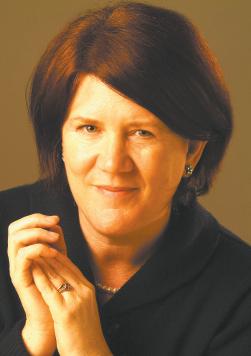
Ratzinger as Peritus
Joseph Ratzinger attended the Second Vatican Council (196265) when he was in his mid-30s as a peritus, or expert theological advisor, to Cardinal Josef Frings of Cologne.
He was one of a number of young European theologians present who were frustrated by the rigidity of the pre-Conciliar theological establishment.
Seminarians were taught with manuals containing summaries of Catholic doctrine dredged largely from 17th century commentaries on the works of Thomas Aquinas (1225-1274). In the 1940s, this ‘manualist Thomism’ came under fire for being dry, narrow, ossified and not in all ways consistent with the classical Thomism it claimed to champion.
Among the leading periti there was an almost universal belief that this theological diet was inadequate for dealing with the problems of the late 20th century.
There had been two world wars, an economic depression and an unusually large number of psychopaths in positions of authority.
People were emotionally wounded and in the midst of so much evil they doubted the existence of a personal God who cared about them. The works of the existentialist philosophers spoke more directly to the grief and anxiety of the post-war generations than a framework built from Aristotelian categories and Latin maxims. Accordingly, the periti set off on a course of renewing the intellectual life of the Church with reference to the perceived pastoral
needs of ‘modern man’. Differences soon emerged, however, over the intellectual material to be put at the service of this renewal. After the Council many of the periti, Ratzinger included, were contributors to the journal Concilium
However, by the fifth Concilium Congress held in Brussels in 1970, it was obvious that there were sharp divisions among members of the editorial board and that there was no common line among the former periti on how the Conciliar documents were to be interpreted.
Some were treating 1965 as a theological Year 0. Everything that went before, including the papacy, was up for review.
In 1972, Ratzinger, with a group of friends including the French Jesuit Henri de Lubac and Hans Urs von Balthasar, a Swiss blueblood polymath, founded an alternative journal named Communio
Whereas Concilium authors tended to approach the documents of the Council with what Ratzinger called a ‘hermeneutic of rupture’, making every pre-Conciliar belief and practice questionable, the Communio authors offered a ‘hermeneutic of continuity’.
While they regarded the theological tradition as having undergone a corruption in the 17th century, above all in the works of the Spanish Jesuit Francisco Suárez, and thus wanted to purify the tradition of these baroque deviations, they did not want to throw the whole tradition overboard.
They preferred to enrich it with insights from personalist philosophy and phenomenology and with a retrieval of insights from the Early Church Fathers.
The significance of the personalism and phenomenology was that its focus on the uniqueness of each and every person made it possible for theologians to address the concerns of the existentialists.
They also supported the Church’s moral teachings, especially in the difficult area of sexuality, though they sought to re-present these teachings in a more explicitly theological idiom rather than simply relying on references to the natural law.
In contrast, the contributors to Concilium and others who followed the ‘hermeneutic of rupture’ tended to be more interested in currents of thought to be found in secular academies then in any Patristic retrieval or explicitly Trinitarian defences of the Church’s moral teaching or ecclesial structures.
In some places, this fostered an
interest in Marxism and liberation theology. In others, it led to schemes to synthesise Christian ideas with elements from liberal, feminist and post-modern philosophy. Renewal in these contexts came to be interpreted as correlating the Catholic faith to trends in contemporary culture and in some cases incorporating the very values of this culture.
In 1985, John Paul II called a Synod to reflect on these various interpretations of the Council.
What emerged from this was a magisterial emphasis on Communio theological anthropology and ecclesiology, including elements of John Paul II’s Thomistic personalism.
The official magisterial interpretations of the Council have never embraced the hermeneutic of rupture. While Ratzinger regarded the pre-Conciliar theological framework as problematic, he had no desire to replace it with secularist mutations of Christian thought.
As a number of his former students from the early 1960s have argued (including those who would be regarded as theologically liberal and would not be placed in the same theological stable as Ratzinger), the shifts in Ratzinger’s alliances in the early 1970s were not due to the fact that he suddenly changed his theological spots, but rather to the ambiguities inherent within the movement for theological renewal itself.
One could find a narrow scholasticism problematic from more than one perspective, and there was more than one alternative to it.
Ratzinger’s alternative was based on the thought of St Augustine, St Bonaventure, Josef Pieper, Blessed John Henry Newman, Romano Guardini, Adam Möhler and, ultimately, Henri de Lubac and Hans Urs von Balthasar.
This is not a roll call of liberals. His arch villains from his earliest years well before Vatican II were Immanuel Kant and Francisco Suárez – both significant names in the liberal tradition. Given this pedigree, he was never likely to end up in the same camp as Hans Küng, however much as a theological teenager he shared Küng’s frustration with manualist Thomism.
Dr Tracey Rowland is Dean and Permanent Fellow of
Page 16 6 October 2010, The Record PERSPECTIVES
the John Paul II Institute for Marriage and Family (Melbourne); Honorary Fellow, Campion College, Sydney; Member, Centre for Theology and Philosophy, University of Nottingham, UK and author of Ratzinger’s Faith: the theology of Pope Benedict XVI and Benedict XVI: a guide for the perplexed
Fr Joseph Ratzinger, right, talks with an unidentified prelate in this photo taken in 1962 during the Second Vatican Council. The future Pope Benedict XVI attended all four sessions of the council as a theological adviser to German Cardinal Joseph Frings of Cologne. PHOTO: CNS/KNA
Seeing the invisible who walk among us
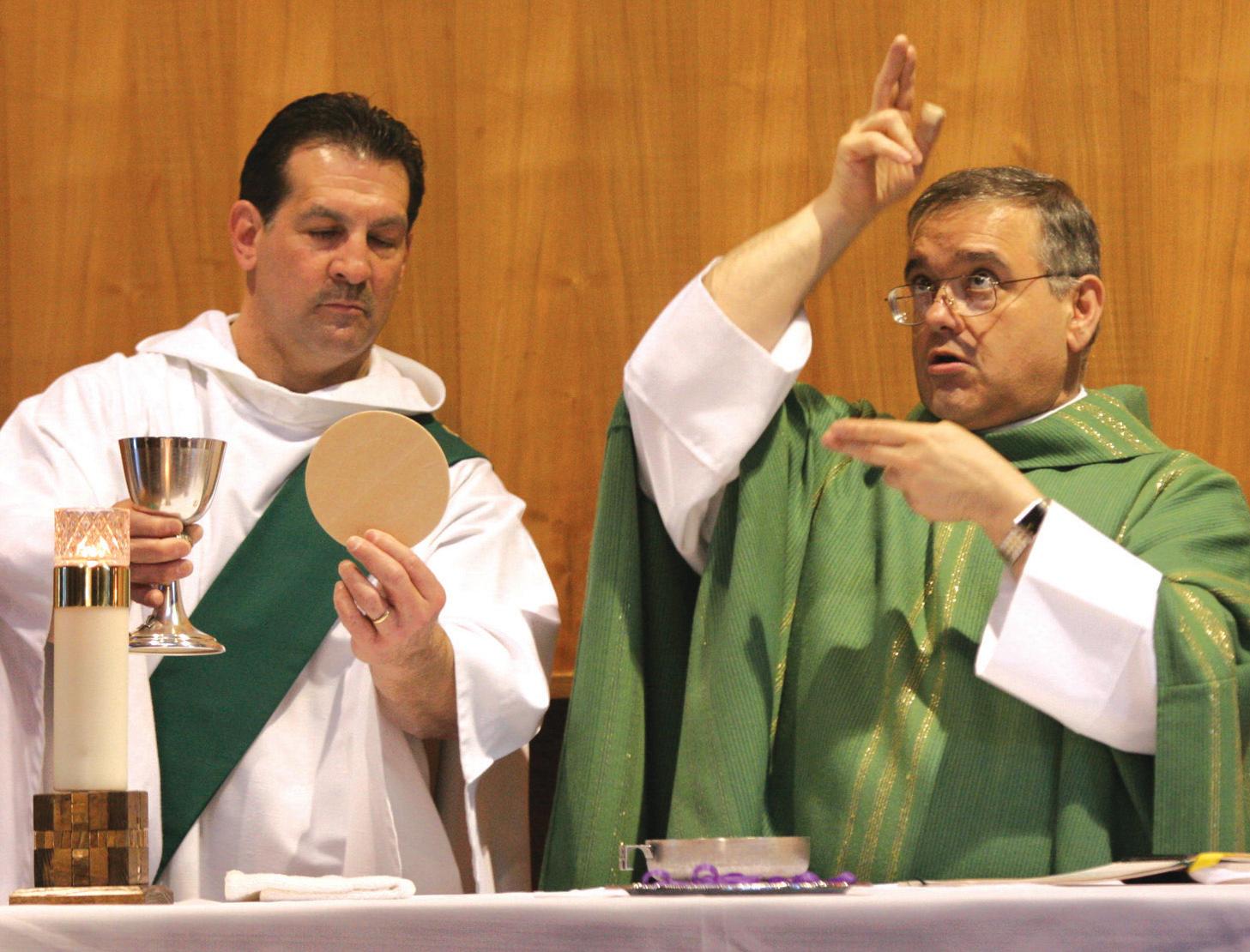
A bee in my bonnet
A reflection on the struggles of those forgotten in society and Church
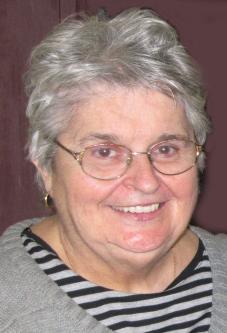 By Barbara Harris
By Barbara Harris
I am often asked how I came to be involved with people with disabilities. I would love to be able to say that it was this event at that time in these circumstances. However, the reality is that there were many events, many times and many circumstances. I share one of my experiences with you in relationship to people who are deaf.
BY BARBARA HARRIS
Ithink I can honestly say that people who were deaf were invisible to me for the first 30 years of my life.
I never thought about them: how they felt, the barriers they had to face in society and Church and how these all affected their learning, their sense of belonging and their faith development.
My involvement with people who are deaf began at a social function for Deafness Awareness Week in 1976.
I went to the function out of curiosity and to support a hard of hearing friend. When we arrived, the friend promptly dumped me and began to socialise with others; so much for needing my support.
Simon, a 19 year old man approached me. The first thing that went through my mind was “He’s DEAF!” The second thought was his appearance.
Simon’s body was twisted and turned. His limbs, upper body, head and hands were not what I considered as being in proportion. These thoughts were needless barriers I placed between us. Simon came close to me and he wanted to communicate with me.
Confronted with Simon’s presence, I rationalised, “I wasn’t good at this and I have very limited signing skills”.
I felt overwhelmed, embarrassed, not in control and so I indicated to Simon that I was going across the room to be with others and I took off.
Simon followed me. I left him again and he followed me again.
It was then that I realised that I was literally running away from this human being. I realised that I hadn’t even given Simon a chance.
It was like hearing the voice of the Apostle Paul, “Barbara, why are you persecuting me?”
My response was “Who me?” So I stopped running and then followed one of those ‘Ah’ moments with God. I was faced with a choice.
Do I, will I, get out of the boat, out of my comfort zone and walk on the water, or do I give in to my fears, my reluctance to change, my sense of inadequacy and walk out of the hall?
I stayed. Simon had a vocabulary of maybe 100 words and we communicated and it was the beginning of a friendship that lasted until his death from cancer a few years later.
About 300 people attended his funeral, not because his parents or family were famous and not out of pity because Simon was deaf, but because Simon had touched the life of each person present.
Simon reached out to others in love.
So for me and my awareness of people who are deaf, the first agent of change in life was a personal encounter.
In that experience it was not only of others, but an experience of my own self, my need to be in control.
Jesus often confronted people about their lives and gave them the opportunity to change. Then came my own decision time, “come follow me”.
I moved through the normal cycles of change – unconscious incompetence, (I didn’t know that
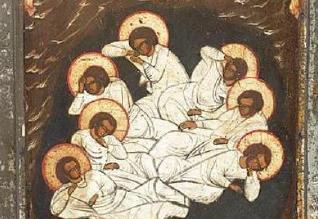
Church’s soul as a seedbed of sanctity is reassuring in a crisis
Confronting the crisis
Dissecting the issue which has brought the Church to its knees
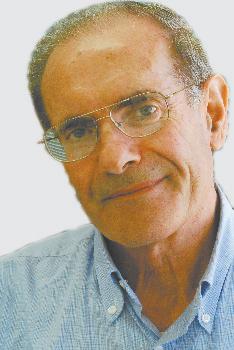 By Anthony Paganoni CS
By Anthony Paganoni CS
I didn’t know about sign language), conscious incompetence (I became aware that I couldn’t speak with my hands to a person who was deaf), to action and competency.
I often reflect on how different would have been my life if I had not been challenged by Simon; how rich my life is because of his persistence.
Not only have I learnt sign language and am still learning, but I have become aware that words can be used either for power and control or simply for sharing thoughts and feelings.
I have become aware some people live in a world of silence. I can join them in their world and learn from them, what a wonderful gift.
I have also learnt about trust, trust in others and trust in God.
How privileged and honoured I am that a person who is deaf will trust me to impart truth.
When I interpret for a person who is deaf, I am used as a bridge of communication that otherwise would not exist.
The privilege given me through my involvement with people who are deaf is life enriching.
For me, belonging, sharing and developing faith in a faith community is so important. It is also very important for people who are deaf.
How else can a person who is deaf “hear” God’s Word, “hear” the homily, or “hear” so many things that are taken for granted.
Modern technology is now used for providing captioning and this is now available live for conferences, seminars and talks.
Together with more use of interpreters, there are increasing opportunities for people who are deaf and hard of hearing to be more fully involved in a world and Church that I as a hearing person have taken for granted.
If you are interested in going on a journey, learning sign language or being involved in any area relating to deafness and hard of hearing, contact Barbara on 9328 8113 or emmanuelcentre@westnet.com.au. Barbara Harris is coordinator of the Emmanuel
Te Deum Laudamus, te Dominum confitemur
In his concluding section of
The Church of Apostles and Martyrs, French writer and historian Henri Daniel-Rops recalls a popular fable that had gained in popularity in the 4th century: The legend of the Seven Sleepers. The incident is said to have taken place during the Emperor Decius’ persecution.
“Seven young Christians who were being pursued by the police took refuge in a cave, not knowing where else they could go. But the Lord took pity upon them and, sending His angel, plunged them into a deep sleep. They slept on there for a century and a half while one after another all the persecutors disappeared, while Constantine reshaped the destinies of the world, and while Theodosius at last leaned his Empire upon the wood of the Cross. Then the angel returned and brushed their eyelids. The sleepers awoke and emerged from their hidingplace. They were suspicious at first, fearing the reappearance of Decius’ guards. But astonishment soon drew from them cries of wonder and gesture of thanksgiving. Was it possible: all these churches sparkling with marble and mosaic; all these crosses standing in the sunlight” (p 594).
We know how long the Roman persecutions lasted. I do not intend to draw a parallelism because circumstances were and are so different. Neither am I in a position to know how long the present upheaval will continue. My guess is that the “paedophilia season” is not going to go away soon for the simple reason that the ingredients in the struggle have no intention of retiring soon. In the meantime, some questions will keep on hanging in the air. Past generations of Catholic believers, along with
Daniel-Rops, have asked similar questions:
“Here indeed is an altogether inexplicable phenomenon; it reminds us once again of the secret designs of Providence that guide the unrolling of history’s scroll. Again, why did God leave His Church to wallow for so long in slimy darkness before shedding his light upon her? (p 3). Some people may come to realise in due time that the resilience and imperishability of the Church’s community is beyond anything one may, in his wildest dreams, imagine. In the process, painful but self-renewing, the Church as a worldwide community may decide to set in motion changes and reforms.
Recent calls for a total reform of the Church sound rather puerile and unsubstantiated by the very facts that have been mentioned in previous articles.
I also believe that this is not an opportune time to push personal agendas for change or to indulge in personal diatribes over either the handling of paedophilia cases (SodanoSchonborn) or the wilful disclosure or blanketing of information (Malone-Wilson).
The series of statements issued by Church leaders seeking forgiveness for the wrong done is continually matched by clamouring ideologies and practical agendas which know very little about the Church’s history and inner core.
In his volume The Catholic Reformation, Danies-Rops states: “… with equal regularity, there springs from the very depths, where primeval defilement cannot altogether mask, much less destroy, the supernatural resemblance, a force that impels her once more upward to light and life: a force whose name is Grace” (p 2).
I would like to hope that the assessment of Daniel-Rops regarding the Catholic community of the 15th century may be replicated also today.
I have remarked elsewhere that in the second half of the 15th century every Catholic worthy of his salt, all who were alive to the situation, clamoured for reform, sometimes on a note of furious indignation, but more frequently as an act of faith in the eternal destiny of Mother Church. Daniel-Rops’ insistence throughout his volumes on the twin factor in the life of the Church, its soul as a seedbed of sanctity and its eternal destiny, is indeed most reassuring and prophetic.
Page 17 6 October 2010, The Record PERSPECTIVES
A Russian icon depicting The Seven Sleepers.
Centre, Perth’s Archdiocesan centre run for and by people with disabilities.
Deacon John Audia assists Fr Thom Costa during a Mass for people who are deaf or hard of hearing at St Frances de Chantal Church in Wantagh, New York, in February. Perth’s Archdiocesan Emmanuel Centre coordinator Barbara Harris describes the experience of the deaf in society and the Church in a new column for The Record
PHOTO: CNS/GREGORY A SHEMITZ, LONG ISLAND CATHOLIC
Seeing the invisible who walk among us

A bee in my bonnet
A reflection on the struggles of those forgotten in society and Church
 By Barbara Harris
By Barbara Harris
I am often asked how I came to be involved with people with disabilities. I would love to be able to say that it was this event at that time in these circumstances. However, the reality is that there were many events, many times and many circumstances. I share one of my experiences with you in relationship to people who are deaf.
BY BARBARA HARRIS
Ithink I can honestly say that people who were deaf were invisible to me for the first 30 years of my life.
I never thought about them: how they felt, the barriers they had to face in society and Church and how these all affected their learning, their sense of belonging and their faith development.
My involvement with people who are deaf began at a social function for Deafness Awareness Week in 1976.
I went to the function out of curiosity and to support a hard of hearing friend. When we arrived, the friend promptly dumped me and began to socialise with others; so much for needing my support.
Simon, a 19 year old man approached me. The first thing that went through my mind was “He’s DEAF!” The second thought was his appearance.
Simon’s body was twisted and turned. His limbs, upper body, head and hands were not what I considered as being in proportion. These thoughts were needless barriers I placed between us. Simon came close to me and he wanted to communicate with me.
Confronted with Simon’s presence, I rationalised, “I wasn’t good at this and I have very limited signing skills”.
I felt overwhelmed, embarrassed, not in control and so I indicated to Simon that I was going across the room to be with others and I took off.
Simon followed me. I left him again and he followed me again.
It was then that I realised that I was literally running away from this human being. I realised that I hadn’t even given Simon a chance.
It was like hearing the voice of the Apostle Paul, “Barbara, why are you persecuting me?”
My response was “Who me?” So I stopped running and then followed one of those ‘Ah’ moments with God. I was faced with a choice.
Do I, will I, get out of the boat, out of my comfort zone and walk on the water, or do I give in to my fears, my reluctance to change, my sense of inadequacy and walk out of the hall?
I stayed. Simon had a vocabulary of maybe 100 words and we communicated and it was the beginning of a friendship that lasted until his death from cancer a few years later.
About 300 people attended his funeral, not because his parents or family were famous and not out of pity because Simon was deaf, but because Simon had touched the life of each person present.
Simon reached out to others in love.
So for me and my awareness of people who are deaf, the first agent of change in life was a personal encounter.
In that experience it was not only of others, but an experience of my own self, my need to be in control.
Jesus often confronted people about their lives and gave them the opportunity to change. Then came my own decision time, “come follow me”.
I moved through the normal cycles of change – unconscious incompetence, (I didn’t know that
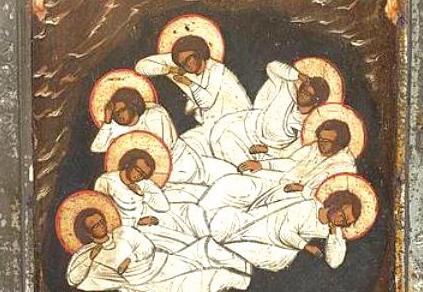
Church’s soul as a seedbed of sanctity is reassuring in a crisis
Confronting the crisis
Dissecting the issue which has brought the Church to its knees
 By Anthony Paganoni CS
By Anthony Paganoni CS
I didn’t know about sign language), conscious incompetence (I became aware that I couldn’t speak with my hands to a person who was deaf), to action and competency.
I often reflect on how different would have been my life if I had not been challenged by Simon; how rich my life is because of his persistence.
Not only have I learnt sign language and am still learning, but I have become aware that words can be used either for power and control or simply for sharing thoughts and feelings.
I have become aware some people live in a world of silence. I can join them in their world and learn from them, what a wonderful gift.
I have also learnt about trust, trust in others and trust in God.
How privileged and honoured I am that a person who is deaf will trust me to impart truth.
When I interpret for a person who is deaf, I am used as a bridge of communication that otherwise would not exist.
The privilege given me through my involvement with people who are deaf is life enriching.
For me, belonging, sharing and developing faith in a faith community is so important. It is also very important for people who are deaf.
How else can a person who is deaf “hear” God’s Word, “hear” the homily, or “hear” so many things that are taken for granted.
Modern technology is now used for providing captioning and this is now available live for conferences, seminars and talks.
Together with more use of interpreters, there are increasing opportunities for people who are deaf and hard of hearing to be more fully involved in a world and Church that I as a hearing person have taken for granted.
If you are interested in going on a journey, learning sign language or being involved in any area relating to deafness and hard of hearing, contact Barbara on 9328 8113 or emmanuelcentre@westnet.com.au. Barbara Harris is coordinator of the Emmanuel
Te Deum Laudamus, te Dominum confitemur
In his concluding section of
The Church of Apostles and Martyrs, French writer and historian Henri Daniel-Rops recalls a popular fable that had gained in popularity in the 4th century: The legend of the Seven Sleepers. The incident is said to have taken place during the Emperor Decius’ persecution.
“Seven young Christians who were being pursued by the police took refuge in a cave, not knowing where else they could go. But the Lord took pity upon them and, sending His angel, plunged them into a deep sleep. They slept on there for a century and a half while one after another all the persecutors disappeared, while Constantine reshaped the destinies of the world, and while Theodosius at last leaned his Empire upon the wood of the Cross. Then the angel returned and brushed their eyelids. The sleepers awoke and emerged from their hidingplace. They were suspicious at first, fearing the reappearance of Decius’ guards. But astonishment soon drew from them cries of wonder and gesture of thanksgiving. Was it possible: all these churches sparkling with marble and mosaic; all these crosses standing in the sunlight” (p 594).
We know how long the Roman persecutions lasted. I do not intend to draw a parallelism because circumstances were and are so different. Neither am I in a position to know how long the present upheaval will continue. My guess is that the “paedophilia season” is not going to go away soon for the simple reason that the ingredients in the struggle have no intention of retiring soon. In the meantime, some questions will keep on hanging in the air. Past generations of Catholic believers, along with
Daniel-Rops, have asked similar questions:
“Here indeed is an altogether inexplicable phenomenon; it reminds us once again of the secret designs of Providence that guide the unrolling of history’s scroll. Again, why did God leave His Church to wallow for so long in slimy darkness before shedding his light upon her? (p 3). Some people may come to realise in due time that the resilience and imperishability of the Church’s community is beyond anything one may, in his wildest dreams, imagine. In the process, painful but self-renewing, the Church as a worldwide community may decide to set in motion changes and reforms.
Recent calls for a total reform of the Church sound rather puerile and unsubstantiated by the very facts that have been mentioned in previous articles.
I also believe that this is not an opportune time to push personal agendas for change or to indulge in personal diatribes over either the handling of paedophilia cases (SodanoSchonborn) or the wilful disclosure or blanketing of information (Malone-Wilson).
The series of statements issued by Church leaders seeking forgiveness for the wrong done is continually matched by clamouring ideologies and practical agendas which know very little about the Church’s history and inner core.
In his volume The Catholic Reformation, Danies-Rops states: “… with equal regularity, there springs from the very depths, where primeval defilement cannot altogether mask, much less destroy, the supernatural resemblance, a force that impels her once more upward to light and life: a force whose name is Grace” (p 2).
I would like to hope that the assessment of Daniel-Rops regarding the Catholic community of the 15th century may be replicated also today.
I have remarked elsewhere that in the second half of the 15th century every Catholic worthy of his salt, all who were alive to the situation, clamoured for reform, sometimes on a note of furious indignation, but more frequently as an act of faith in the eternal destiny of Mother Church. Daniel-Rops’ insistence throughout his volumes on the twin factor in the life of the Church, its soul as a seedbed of sanctity and its eternal destiny, is indeed most reassuring and prophetic.
Page 17 6 October 2010, The Record PERSPECTIVES
A Russian icon depicting The Seven Sleepers.
Centre, Perth’s Archdiocesan centre run for and by people with disabilities.
Deacon John Audia assists Fr Thom Costa during a Mass for people who are deaf or hard of hearing at St Frances de Chantal Church in Wantagh, New York, in February. Perth’s Archdiocesan Emmanuel Centre coordinator Barbara Harris describes the experience of the deaf in society and the Church in a new column for The Record
PHOTO: CNS/GREGORY A SHEMITZ, LONG ISLAND CATHOLIC
Panorama entries must be in by 12pm Monday.
Contributions may be emailed to office@therecord.com.au, faxed to 9325 4580, or mailed to PO Box 3075, Adelaide Terrace, Perth WA 6832.
WORLD YOUTH DAY GRANTS
Applications - Grants Catholic Youths to WYD 2011 Madrid
The Knights of the Southern Cross have made available 20 grants of $500 to financially support committed young WA Catholic Youths to attend World Youth Day 2011 Madrid. Applications are now open and close on Friday, 5 November. Expressions of interest should be made to kscwa.office@perthcatholic.org.au.
THURSDAY, 7 OCTOBER SATURDAY, 9 OCTOBER
Seek 2010 – A Conference on Scripture and Prayer for Everyday Life
7.30pm at Queen of Apostles Parish, 57 Tudor Ave South, Riverton. Opportunity for the family to learn, experience and grow. Programmes for youth and adults on new ways to explore Scripture and prayer, plus activities for children and crèche. Brochures and registration forms available from your parish. Enq: Barbara or Su Goh 9328 8113 or email familylife@perthcatholic.org.au.
SATURDAY, 9 OCTOBER SUNDAY, 10 OCTOBER
Retreat by Fr Paul Glynn SM from Sydney 9am-5pm at Bioethics Centre, 39 Jugan St, Glendalough. Theme: With the Help of the Holy Spirit, to pray to Jesus and the Father. Saturday, BYO lunch to share, Sunday lunch provided. Enq: John 0412 798 932, Annie 0422 083 716 or Bessie 0433 795 539.
SATURDAY, 9 OCTOBER
Divine Mercy
2.30pm at St Francis Xavier’s Church, Windsor St, East Perth. Healing Mass, main celebrant will be Fr Dennis O’Brien. Divine Mercy Prayers, followed by the Veneration of First Class Relic of St Faustina Kowolska. Reconciliation in English will be offered. Refreshments afterwards. Enq: John 9457 7771.
Voice of the Voiceless Ministry Mass for those travelling to Rome, 11am at Saint Joseph’s Convent Chapel, 16 York St, South Perth. 12 noon teatime followed by Reflection and tour. Picnic and get together around 1.30pm.
St Padre Pio Day of Prayer
8.30am at Our Lady of the Mission, 270 Camberwarra Dr, Craigie. DVD followed by Exposition of the Blessed Sacrament, Rosary, Divine Mercy, Silent Adoration and Benediction at 10am. 11am Mass, St Padre Pio Liturgy, Confessions available. Bring a plate for lunch. Tea and coffee supplied. Enq: Des 6278 1540.
SUNDAY, 10 OCTOBER
The World Apostolate of Fatima - Eucharistic Hour 3pm at St Jerome’s Church, Rockingham Rd and Troode St, Munster. There will be the National Pilgrim Virgin Statue of our Apostolate. All welcome. Enq: 9339 2614.
Catholic Doctors’ Association WA - Annual Mass 10am at Chapel, St John of God Hospital, Murdoch. Followed by morning tea. All health care workers are invited. Enter through the main entrance. RSVP to Natalie by 1 Oct. Enq: 9242 4066 or ljgbc@iinet.net.au.
MONDAY, 11 OCTOBER
Prevention of Assisted Suicide-Euthanasia
7pm at the Bioethics Centre, 39 Jugan St, Glendalough. Talk on suicide prevention/euthanasia by Director/ Founder Alex Schadenberg of Euthanasia Prevention Coalition. All welcome. Enq: 9277 1644 or email afawa@ msn.com.
Taize Liturgy celebrating MacKillop canonisation 7–8pm at St Joachim’s Parish, Shepparton Rd, Victoria Park. Enq: 9474 6604.
TUESDAY, 12 OCTOBER
Alan Ames Healing Service
7pm at St Joseph’s Church, 19 Hamilton St, Bassendean. Mass followed by talk and healing service. Enq: George 9275 6608.
THURSDAY, 14 OCTOBER
Mother’s Prayers Mass
10am at Our Lady Queen of Apostles Catholic Church, Tribute St, Riverton. For all mothers, fathers and grand-
mothers, grandfathers coming together to pray for their children and grandchildren. An opportunity for God to hear and act upon the hearts and minds of parents and grandparents joining together as one here on earth. All welcome. Please bring a plate. Enq: Veronica 9447 0671.
Healing Mass
7pm at Saints John and Paul Church, Willetton. There will be veneration of the Relic of St Peregrine Patron of Cancer Sufferers and Helper of all in need and Anointing of the sick.
FRIDAY, 15 OCTOBER
WA Mental Health Week and Carers Week
7.30pm at St John’s Church, 16 Aberdeen St, Northbridge. Spirit of the Streets Choir in concert with Bernard Carney. Tickets for adults $20, for children $15. Enq: Harry 9444 4626, Irene 0433 789 785 or Adrian 0424 791 665.
SATURDAY, 16 OCTOBER
2010 Disciples of Jesus Annual Ball
7.30pm at Rendezvous Hotel. A night of celebration, great music, food and dancing. Theme: Black and White. Enq: Janny 0420 635 919.
St Joseph’s School Wagin Reunion
11am at the old school grounds. For all past students.
Enq: Ronnie 9861 1422.
FRIDAY, 22 OCTOBER
Pioneers of Total Abstinence Association to The Sacred Heart of Jesus
7pm at Bioethics Centre, 39 Jugan Street, Glendalough. A demonstration of Irish dancing as well as a soloist and an accompanist will be in attendance to perform a variety of dance and music. Bring a plate to share, coffee and tea provided. No alcohol. Admission $5. Enq: Fr Douglas 9444 6131 or John 9457 7771.
SUNDAY, 24 OCTOBER
October Sunday Sesh
6pm at St Joseph’s Parish, 22 Hamilton St, Bassendean. Mass followed by the largest youth night in October. Open for youth of all ages, preferably 15-35. Guest Speaker Fr Jim Shelton, presenting Salvation. The night includes music, activities, prayer time and group discussions. Enq: www.cym.com.au. Enq: 9422 7912.
MONDAY, 25 OCTOBER
CYM World Youth Day 2011 Pilgrimage Meeting
7.30pm at Perth Catholic Pastoral Centre, 40A Mary St, Highgate. Catholic Youth Ministry is organising the official Archdiocese of Perth pilgrimage to World Youth Day in Madrid next year. If you have already been saving or still unsure and want to know more, come along to our information night. Go to www.cym.com.au and fill out expression of interest form. Enq: 9422 7912.
FRIDAY, 29 OCTOBER
Medjugorje Evening of Prayer
7pm at Good Shepherd Parish, Corner of 215 Morley Dr and Altona Rd, Kiara. Adoration, Rosary concluding with Holy Mass. Celebrant Fr Bogoni. Free DVD on Donald Calloway’s life of sexual promiscuity, drugs and crime through to his conversion and priesthood. All are warmly invited. Enq. Eileen 9402 2480 email medjougorje@ y7mail.com.
SUNDAY, 31 OCTOBER
Open Day for Vocation to the Priesthood
9.30am at St Charles’ Seminary, Guildford. For men, aged 17 and over, who might be discerning whether a vocation to the Priesthood is for them. Day begins with Morning Prayer, followed by morning tea, during which Seminarians will share their stories of their discernment and vocation. Mass 11.30am, followed by lunch. For catering purposes please ring if you are coming. Enq: Helen 9279 1310.
FRIDAY, 5 NOVEMBER THURSDAY, 11 NOVEMBER
Creation Spirituality Retreat St John of God Retreat Centre, Shoalwater. For the weekend or week. Enq: Sr Shelley Barlow and registration 0428 772 784.
SATURDAY, 6 NOVEMBER
Day With Mary
9am at St John and St Paul Church, Corner Pinetree Gully Rd and Wainwright Cl, Willetton. Day of prayer and instruction based on the Fatima message. 9am Video. 10.10am Holy Mass. Reconciliation, Procession of the Blessed Sacrament, Eucharistic Adoration, Sermons on Eucharist and Our Lady, Rosaries and Stations of the Cross. BYO lunch. Enq: Franciscan Sisters of the Immaculate 9250 8286.
Love Ministries - Charismatic Healing and Mass 6pm at All Saints, 7 Liwara Pl, Greenwood. Get prayed over and healed from past and present issues or stand in for a loved one who may be ill or facing problems at this time. All welcome. Enq: Fr Giosue 9349 2315, Gilbert 0431 570 322 or Fr Michael 0417 175 796.
SUNDAY, 7 NOVEMBER
Schoenstatt Spring Fair
9.30am-2pm at 9 Talus Dr, Armadale. A family affair with entertainment for the children, international food, a variety of stalls, prizes, silent auctions and lots more. Bring all the family and help support the Schoenstatt Sisters, and visit our beautiful shrine, where you can leave all your requests and petitions. Enq: 9455 3140.
Divine Mercy
1.30pm at St Francis Xavier Church, 25 Windsor Street, Perth. Main celebrant for the afternoon will be Fr Sharbel FFI Homily All Saints and Holy Souls. Refreshments afterwards. Enq: John 9457 7771.
FRIDAY, 19 NOVEMBER TO SUNDAY, 21 NOVEMBER
A Reflective Weekend - Strike the Balance
7pm at St John of God Retreat Centre, 47 Gloucester Cr, Shoalwater. Give yourself the opportunity to uncover the richness of your life over the past year through practical methods such as the Labyrinth, Lectio Divina and other forms of Meditation. The time away is designed to assist you in unravelling the experiences of 2010. Enq: Sr Ann 0409 602 927 or Sr Kathy 0418 926 590.
EVERY SUNDAY
Pilgrim Mass - Shrine of the Virgin of the Revelation 2pm at Shrine, 36 Chittering Rd, Bullsbrook. Commencing with Rosary followed by Benediction. Reconciliation is available before every celebration. Anointing of the Sick administered during Mass every second Sunday of the month. Pilgrimage in honour of the Virgin of the Revelation, last Sunday of the month. Curch and shrine open daily between 9am-5pm. Enq Sacri 9447 3292.
EVERY SUNDAY AND MONDAY
Extraordinary Form of Latin Holy Mass 11am Sunday and 7.30pm Monday except 3rd Monday of the month, at St Joseph’s Parish, 20 Hamilton St, Bassendean.
THIRD SUNDAY OF THE MONTH
Oblates of St Benedict
2pm at St Joseph’s Convent, York St, South Perth. Oblates are affiliated with the Benedictine Abbey of New Norcia. All welcome to study the rule of St Benedict and its relevance to the everyday life of today for lay people. Vespers and tea later. Enq: Secretary 9457 5758.
EVERY FOURTH SUNDAY OF THE MONTH
Holy Hour, Vocations to Priesthood, Religious Life 2-3pm at Infant Jesus Parish, Wellington St, Morley. Includes Exposition, silent prayer, Scripture and prayers of intercession for those discerning vocations to the priesthood or Religious.
LAST MONDAY OF EVERY MONTH
Christian Spirituality Presentation
7.30-9.15pm at the Church hall behind St Swithan’s Anglican Church, 195 Lesmurdie Rd, Lesmurdie. Stephanie Woods will present The Desert Period of Christianity, 260 to 600AD on the monastic lifestyle and contemplative prayer. No cost. Enq Lynne 9293 3848.
EVERY TUESDAY NIGHT
Novena, Benediction, Our Lady of the Miraculous Medal 6pm at the Pater Noster Church, Marmion and Evershed
Sts, Myaree. Mass at 5.30pm. Enq: John 0408 952 194.
EVERY WEDNESDAY
Holy Spirit of Freedom Community
7.30pm at The Church of Christ, 111 Stirling St, Perth. We are delighted to welcome everyone to attend our Holy Spirit of Freedom Praise Meeting. Enq 9475 0155 or hsofperth@gmail.com.
SECOND WEDNESDAY OF THE MONTH
Chaplets of the Divine Mercy
7.30pm at St Thomas More Catholic Church, Dean Rd, Bateman. A beautiful, prayerful, and sung devotion will be accompanied by Exposition and followed by Benediction. All are welcome. Enq: George Lopez on 9310 9493(h) or 9325 2010(w).
EVERY THURSDAY
Cathedral Praise Meeting
7.45pm at 450 Hay St, Perth. 6 October, See I Place My Words in Your Mouth and I Have Made of You This Day a Fortified City. A journey of Intercessory Prayer, Revelation and Healing by Kaye Rollings, FMI. Please bring a Bible. Enq: 9382 3668 or 0439 981 515.
Catholic Questions and Answers
7-7.30pm at St Joseph’s Parish Centre, 20 Hamilton St, Bassendean. Catechesis learned easily with questions and answers. The Catechism of the Catholic Church. Adult learning and deepening of the Catholic Faith, with Fr John Corapi DVD series, 7.30-9pm.
Divine Mercy
11am at St John and Paul Church, Pine Tree Gully Rd, Willetton. Pray the Rosary and Chaplet of Divine Mercy, and for the consecrated life especially here in John Paul parish, conclude with veneration of the First Class Relic of Saint Faustina. Please do come and join us in prayer. Enq: John 9457 7771.
EVERY FIRST THURSDAY OF THE MONTH
Taize - Invitation to Prayer in Our Community
7.30-8.30pm at Our Lady Of Grace Church, 3 Kitchener St, North Beach. Taize Prayer is a meditation in which we pray beautiful chants together and spend time in prayerful silence. Christ is present in each of us and we pray as one. Enq: Joan 9448 4457 or Parish 9448 4888.
FIRST FRIDAY OF THE MONTH
Catholic Faith Renewal Evening
7.30pm at St John and Paul’s Parish, Pinetree Gully Rd, Willetton. Songs of Praise, sharing by a Priest followed by Thanksgiving Mass and light refreshments after Mass. All welcome to attend and bring your family and friends. Enq: Kathy 9295 0913, Ann: 0412 166 164 or catholicfaithrenewal@gmail.com.
Healing Mass
7pm at St Peter’s Parish, Wood St, Inglewood. Reconciliation, praise and worship, exposition of Blessed Sacrament, Benediction, anointing of the sick, and special blessing. Celebrants Fr Sam and other clergy. All welcome. Enq: Priscilla 0433 457 352, Catherine 0433 923 083 or Mary-Ann 0409 672 304.
The Alliance, Triumph and Reign of the United Hearts of Jesus and Mary 9pm at St Bernadette’s Church, Glendalough. Exposition of the Blessed Sacrament, reflections, Rosary, hymns and alternating with healing sessions, Vigil concludes with midnight Mass in preparation for the Lord’s second coming and His Reign on earth. Participate in the Lord’s mighty work. Enq: Father Doug 9444 6131 or Dorothy 9342 5845.
Communion of Reparation All Night Vigil
7pm at Corpus Christi Church, Lochee St, Mosman Park. Evening consists of Holy Mass, Rosary, Confession and Adoration. Celebrant Fr Bogoni. All are warmly invited to attend. Enq: Vicky 0400 282 357.
Youth Ministry Scholarships 2011
Catholic Youth Ministry is offering 2 fulltime scholarships to the Acts2 Catholic Bible College of Mission and Evangelisation to Cert IV to eligible candidates. Applications stating name, age, parish, educational accomplishments and why you would like to study at the College to Anita Parker at admin@cym.com.au or get more information on www.acts2come.wa.edu.au. Applications close Friday, 19 November. Enq: 9422 7912.
Page 18 6 October 2010, The Record
ACROSS
2
8
11
13
17
19
24
27

ACCOMMODATION
HOLIDAY ACCOMMODATION
ESPERANCE 3 bedroom house f/furnished Ph 09 9076 5083.
BOOK BINDING
BOOK REPAIR SERVICE
New book binding, general book repairs, rebinding, new ribbons; old leather bindings restored. Tydewi Bindery 9377 0005.
TRADE SERVICES
BRENDON HANDYMAN
SERVICES Home, building maintenance, repairs and renovations. NOR. Ph 0427 539 588.
BRICK RE-POINTING
Ph Nigel 9242 2952.
PERROTT PAINTING Pty Ltd
For all your residential, commercial painting requirements. Ph Tom Perrott 9444 1200.
PICASSO PAINTING Top service. Ph 0419 915 836, fax 9345 0505.
LAWN MOWING
WRR LAWN MOWING & WEED SPRAYING Garden clean ups and rubbish removal. Get rid of bindii, jojo and other unsightly weeds. Based in Tuart Hill. Enq 9443 9243 or 0402 326 637.

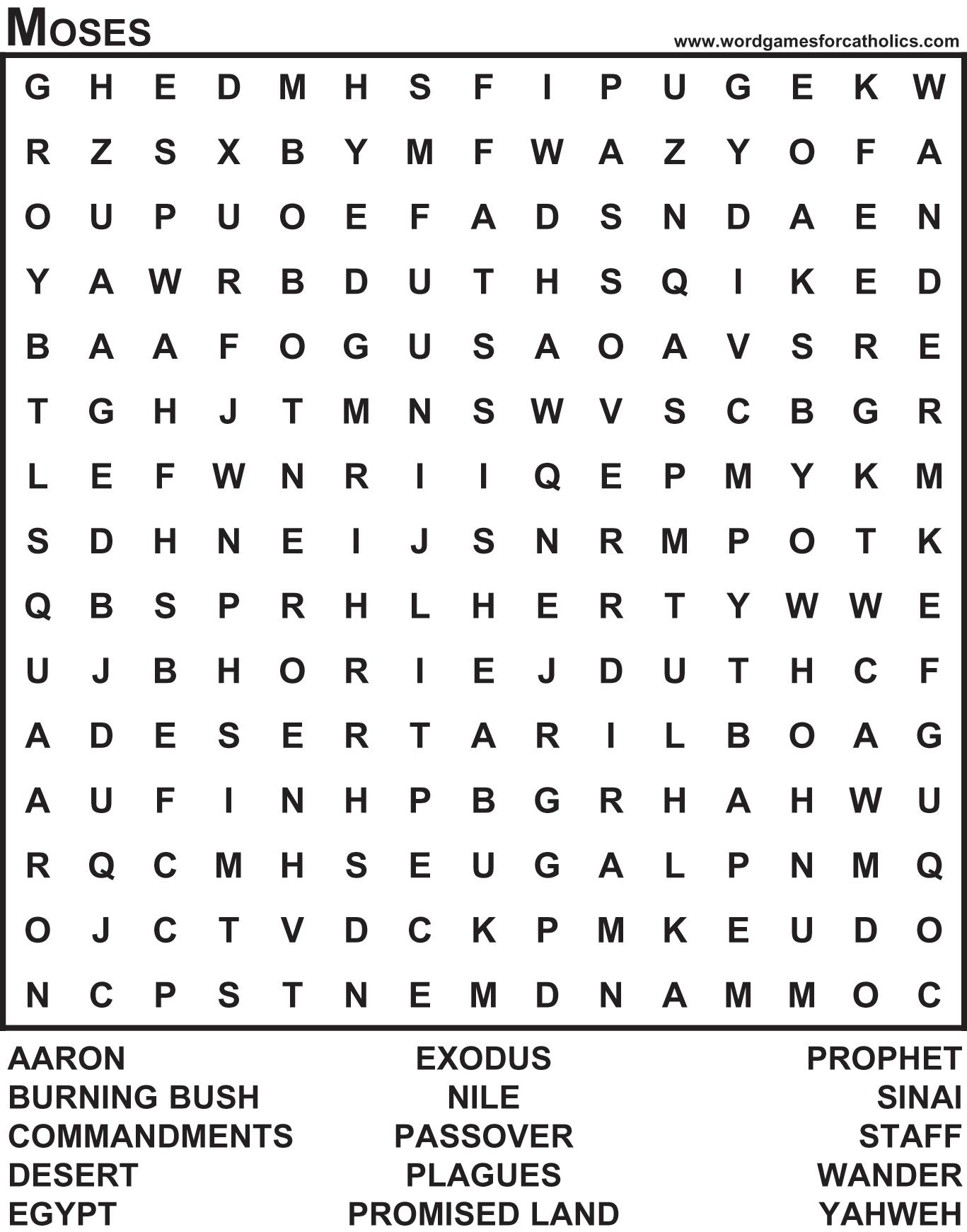
RELIGIOUS PRODUCTS
CATHOLICS CORNER Retailer of Catholic products specialising in gifts, cards and apparel for Baptism, Communion and Confirmation. Ph 9456 1777. Shop 12, 64-66 Bannister Rd, Canning Vale. Open Mon-Sat.
OTTIMO Convenient city location for books, CDs/DVDs, cards, candles, statues, Bibles, medals and much more. Shop 108, Trinity Arcade (Terrace level), 671 Hay St, Perth. Ph 9322 4520. Mon-Fri 9am-6pm.
RICH HARVEST YOUR CHRISTIAN SHOP Looking for Bibles, CDs, books, cards, gifts, statues, Baptism/Communion apparel, religious vestments, etc? Visit us at 39 Hulme Ct (off McCoy St), Myaree, Ph 9329 9889 (after 10.30am Mon to Sat). We are here to serve.
KINLAR VESTMENTS Quality hand-made and decorated vestments: Albs, Stoles, Chasubles, altar linen, banners etc. 12 Favenc Way, Padbury. By appointment only. Ph Vicki 9402 1318 or 0409 114 093.
FURNITURE REMOVAL
ALL AREAS. Competitive Rates. Mike Murphy Ph 0416 226 434.
SETTLEMENTS
ARE YOU BUYING OR SELL-
ING real estate or a business?
Why not ask Excel Settlements for a quote for your settlement. We offer
Gal 4:22-24.26-27.31-5:1 Two sons
Gr Ps 112:1-7 Praise the Lord’s name
Lk 11:29-32 Sign of Jonah
12 Tu Gal 5:1-6 Fallen from grace
Gr Ps 118:41.43-45.47-48 The word of truth
Lk 11:37-41 Oh, you Pharisees!
13 W Gal5: 18-25 Led by the Spirit
Gr Ps 1:1-4.6 The law the Lord
Lk 11:42-46 Unendurable burdens
14 Th St Callistus I, Pope, martyr (O)
Gr Eph 1:1-10 Blessed be God
Ps 97:1-6 Sing a new song
Lk 11:47-54 The key of knowledge
15 F St Teresa of Avila, virgin, doctor of the church (M)
Wh Eph 1:11-14 Seal of the Holy Spirit
Ps 32:1-2.4-5.12-13 Ring out your joy!
Lk 12:1-7 Be on your guard
16 S St Hedwig, religious (O)
Gr St Margaret Mary Alacoque, virgin (O)
Eph 1:15-23 A spirit of wisdom
Ps 8:2-7 O Lord our God
Lk 12:8-12 The Spirit will teach you
Page 19 6 October 2010, The Record CLASSIFIEDS
reasonable fees, excellent service and no hidden costs. Ring Excel on 9481 4499 for a quote. Check our website on www.excelsettlements.com. SINE FOR SALE PEEK-A-BOO CORNER Good quality & affordable branded kids’ clothing. For boys & girls 0 to 6 years. Don’t miss out 20% discount for first 20 customers. Errina: 0401 454 933. Email: peekaboo.corner@gmail.com or visit www.peekaboo-corner.blogspot.com. ART FOR THE CATHEDRAL www.margaretfane.com.au. WANTED The Woman Shall Conquer” by Don Sharkey. Photograph of Pope John Paul celebrating Mass in WA. Contact: email rodway@ iinet.net.au. Deadline: 11am Monday CLASSIFIEDS Walk With Him 10 S 28TH SUNDAY IN ORDINARY TIME Gr 2 Kgs 5:14-17 The cure of Naaman Ps 97:1-4 God works wonders 2 Tim 2:8-13 God is always faithful Lk 17:11-19 Ten lepers cured 11 M
Greek title
Jesus
“…you ___ whatever you sow.” (Gal 6:7)
for
6
Celestial
to Jacques
Papal crown
being,
9
10 Priest
Holy Spirit
Fruit of the
One
the seven
the Magi
of
15 One of
Itʼs during Holy Week
Wife
Isaac
“Behold, I am with you ____…”
of
22
Describes certain letters from the Bishops
Saintly evidence, needed to canonise 29 ____ Creed 31 Make void a sacrament 32 The Dead and the Red 33 “____ was in the beginning, is now…” 34 Joseph was sold into slavery here DOWN 1 Genuflection joint 2 Read at Mass 3 ___ in excelsis Deo 4 St ___, Martyr 5 Prayer-song 6 They fed Elijah 7 Catholic actor Guinness 10 Animal of sacrifice in the Old Testament 12 Peter cut this off the soldier of the high priest 14 Possible Easter month 16 Confirmation gesture 18 Member of an order of St Angela Merici 20 One of the Minor Orders of the Church 21 Letter 22 “He has shown might with his ___…” (Magnificat) 23 Early landing place 25 The Lordʼs day 26 Be untruthful 28 Marriage vows 30 Shemʼs father C R O S S W O R D W O R D S L E U T H LAST WEEK’S SOLUTION NOW OPEN The Record Bookshop Resources for Catholic Families in the 3rd Millenium 21 Victoria Square, Perth (Opposite St Mary’s Cathedral)
Samaritan inspires modern adaptations
National art award takes a close look at the Good Samaritan
Nationally acclaimed artist Annette Allman has won The Mandorla Art Award 2010 and a new talent has emerged, with fresh talent Emma Itzstein named as the inaugural youth winner taking out the St John of God Health Care Prize for an Emerging Young Artist.
The Mandorla Art Award, Australia’s most significant themed contemporary religious art prize, was presented at the Moores Building Contemporary Art Gallery, Fremantle on 1 October.
These artists are joined by two Highly Commended winners, Janis Nedela and Charles Booth.
Each of the four artists delivered a thought-provoking interpretation of this year’s theme And who is my neighbour? inspired by the parable of the Good Samaritan (Luke 10: 25-37). This year’s theme of spiritual inspiration is the 15th since the award’s 1985 inception.
Annette’s winning work, Caring in a Competitive World, was described by one of a trio of judges, Sr Jill O’Brien of the Good Samaritan Order of St Benedict, as developing the spirit of the story while grounding it in a contemporary journey of competitive sports and the suburban experience.
Sr Jill, currently engaged in guiding the processes related to the construction of a new Cathedral for the Diocese of Broome, said: “It vigorously underscores the need to respond to others with compas-
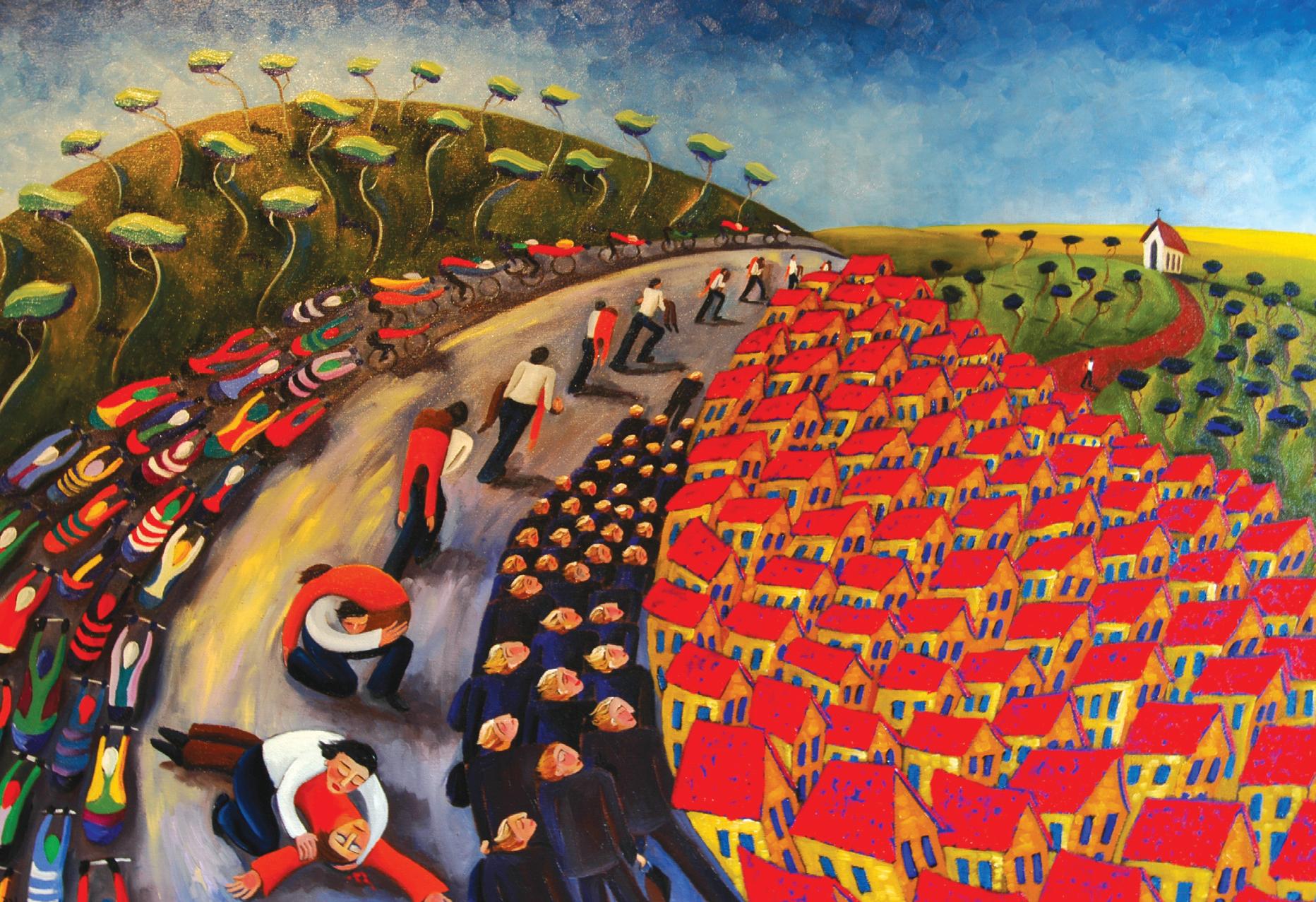
sion, no matter the cost, even if the crowd has turned its back.”
Nineteen year old Emma’s youth award work, Neighbour X, was described by the judges as taking an abstracted view to understanding the dignity of the individual.
It challenges us to look beneath the aesthetic image and the lens the next time a neighbour asks for our help, they said.
St John of God Health Care’s sponsorship of the awards was
particularly appropriate given the Good Samaritan and has been cited by Popes John Paul II and Benedict XVI as the common founding story for the Church’s involvement in health care.
Group chief executive Dr Michael Stanford said St John of God Health Care has an important responsibility to be a significant participant in activities that serve to strengthen community life, including the arts.
The Catholic Archdiocese of Perth sponsored a Highly Commended prize and Mgr Brian O’Loughlin, representing Archbishop Barry Hickey, presented it to Janis Nedela for his thought provoking work, The Golden Rule
The Mandorla Art Award has attracted some of Australia’s finest artists since its inception in 1985.
This year it had 60 entries in the main award and eight in the youth award, coming from artists based
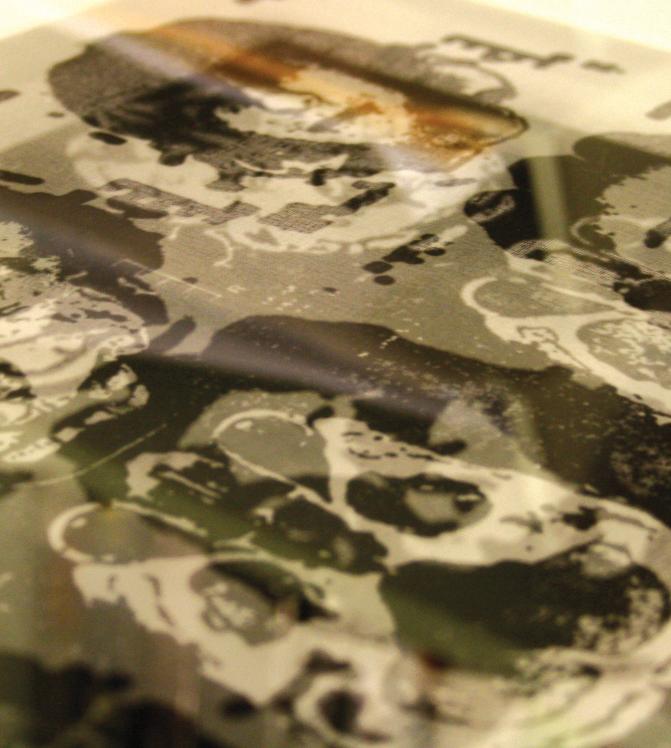
in Western Australia, Victoria, New South Wales and Queensland.

A selection of art work will be exhibited at St John of God Health Care’s Perth-based hospitals in Subiaco and Murdoch from 20 to 26 October, and then at New Norcia’s Benedictine Gallery from 31 October to 20 November, when the winner of the People’s Choice Award will be announced.
The Mandorla also attracted sponsorship from the Anglican and Uniting Churches, as well as the Benedictine Community of New Norcia.
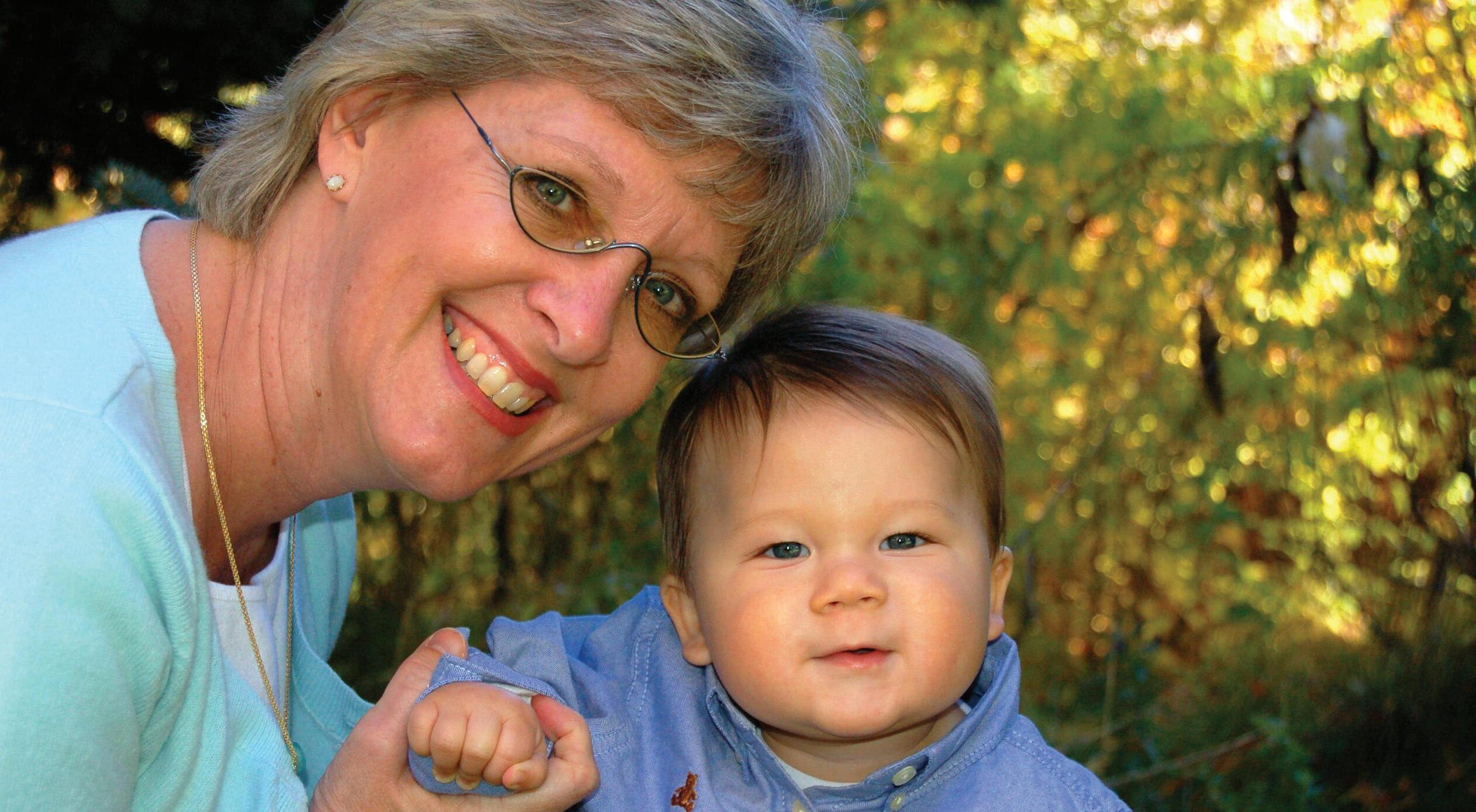


























Page 20 THE LAST WORD , The Record 6 October 2010 You want your retirement to be secure, enjoyable and fulfilling—so do we. Attend one of our free seminars to improve your understanding of important retirement planning issues and let ACSRF help you take control of your financial future. Retirement planning seminars etire w at Regis icsup 76 R Re i gist s supe SCS Super Pty Limited is the Trustee of the Australian Catholic Superannuation & Retirement Fund (ACSRF). ABN 74 064 712 607. AFS Licence 230544. RSE L0002264 and RSE R1055436. For further information on ACSRF’s services, refer to the Fund’s current Product Disclosure Statement and Financial Services Guide. AN INDUSTRY SUPER FUND FOR ALL AUSTRALIANS / 1300 658 776 / www.catholicsuper.com.au
Annette Allman’s artwork, Caring in a Competitive World, which won the Mandorla Art Award 2010.
Fresh emerging talent Emma Itzstein’s work, Neighbour X, earned her the St John of God Health Care Prize for an Emerging Young Artist. Below, 19 year old Emma Itzstein.



























 BY ANTHONY BARICH
BY ANTHONY BARICH











 BY GLYNNIS GRAINGER
BY GLYNNIS GRAINGER









 Dr John Falzon
Dr John Falzon














 BY ANTHONY BARICH
BY ANTHONY BARICH

























































 St Mary’s Range
Business Card Holder $74.95 + P/H
Magnifying Glass $79.95 + P/H
Emperor Fountain Pen $495.00 + P/H
Keyring Pill Box $45.00 + P/H
Euro Range $79.95 + P/H
Executive Pen $74.95 + P/H
Zen Magnetic Pen $109.95 + P/H
Cigar Ballpoint $79.95 + P/H
Rosary Box $94.95 + P/H (Rosary not included)
Statesmen Fountain $435.00 + P/H
Cathedral Pew $1,895.00
Pen Box $27.95 + P/H
Columban Calendar 2011
RRP $7.00 + P/H
St Mary’s Range
Business Card Holder $74.95 + P/H
Magnifying Glass $79.95 + P/H
Emperor Fountain Pen $495.00 + P/H
Keyring Pill Box $45.00 + P/H
Euro Range $79.95 + P/H
Executive Pen $74.95 + P/H
Zen Magnetic Pen $109.95 + P/H
Cigar Ballpoint $79.95 + P/H
Rosary Box $94.95 + P/H (Rosary not included)
Statesmen Fountain $435.00 + P/H
Cathedral Pew $1,895.00
Pen Box $27.95 + P/H
Columban Calendar 2011
RRP $7.00 + P/H






























 THE EUCHARIST FOR LITTLE CHILDREN
THE EUCHARIST FOR LITTLE CHILDREN


































 OSS PLAQUE RRP $49.95
SHEEP FIVE PIECE SET RRP $48.50
RE LARGE RRP $43.55
TH FAMILY RP $169.40
HOLY FAMILY FLIGHT TO EGYPT RRP $54.95
THREE KINGS SET RRP $108.90
SILENT NIGHT RRP $73.80
ADVENT MEDITATIONS WITH FULTON J SHEEN $2.95 + P/H
ADVENT MEDITATIONS WITH PADRE PIO $2.95 + P/H
ADVENT BEGINS AT HOME $6.95 + P/H
DAILY REFLECTIONS FOR ADVENT & CHRISTMAS $4.95 + P/H
THE CHRISTMAS MIRACLE $19.95 + P/H
NEW COMPANION TO ADVENT & CHRISTMAS $6.95 + P/H
ADVENT ARTS AND CHRISTMAS CRAFTS $22.95 + P/H
THE LION BOOK OF CHRISTMAS CAROLS $15.95 + P/H
THE NATIVITY STORY $17.95 + P/H
EAST NATIVITY SCENE STICKER PICTURE PUZZLE $2.95 + P/H
OSS PLAQUE RRP $49.95
SHEEP FIVE PIECE SET RRP $48.50
RE LARGE RRP $43.55
TH FAMILY RP $169.40
HOLY FAMILY FLIGHT TO EGYPT RRP $54.95
THREE KINGS SET RRP $108.90
SILENT NIGHT RRP $73.80
ADVENT MEDITATIONS WITH FULTON J SHEEN $2.95 + P/H
ADVENT MEDITATIONS WITH PADRE PIO $2.95 + P/H
ADVENT BEGINS AT HOME $6.95 + P/H
DAILY REFLECTIONS FOR ADVENT & CHRISTMAS $4.95 + P/H
THE CHRISTMAS MIRACLE $19.95 + P/H
NEW COMPANION TO ADVENT & CHRISTMAS $6.95 + P/H
ADVENT ARTS AND CHRISTMAS CRAFTS $22.95 + P/H
THE LION BOOK OF CHRISTMAS CAROLS $15.95 + P/H
THE NATIVITY STORY $17.95 + P/H
EAST NATIVITY SCENE STICKER PICTURE PUZZLE $2.95 + P/H




























































 with Debbie Warrier
with Debbie Warrier



 By Barbara Harris
By Barbara Harris

 By Anthony Paganoni CS
By Anthony Paganoni CS































